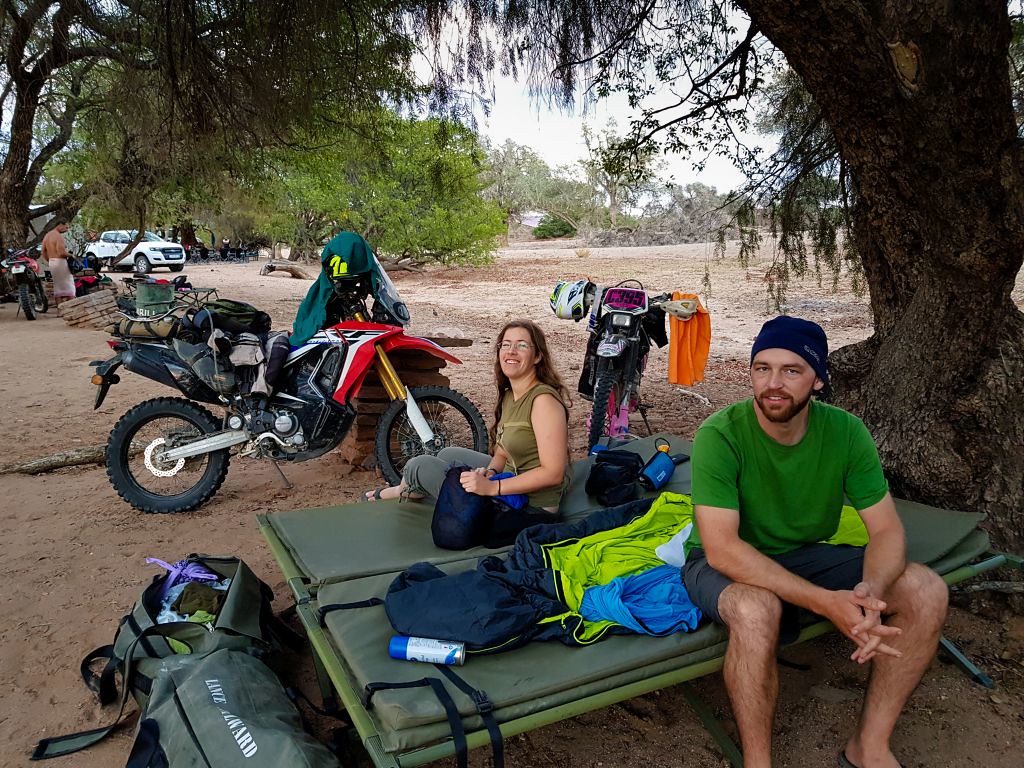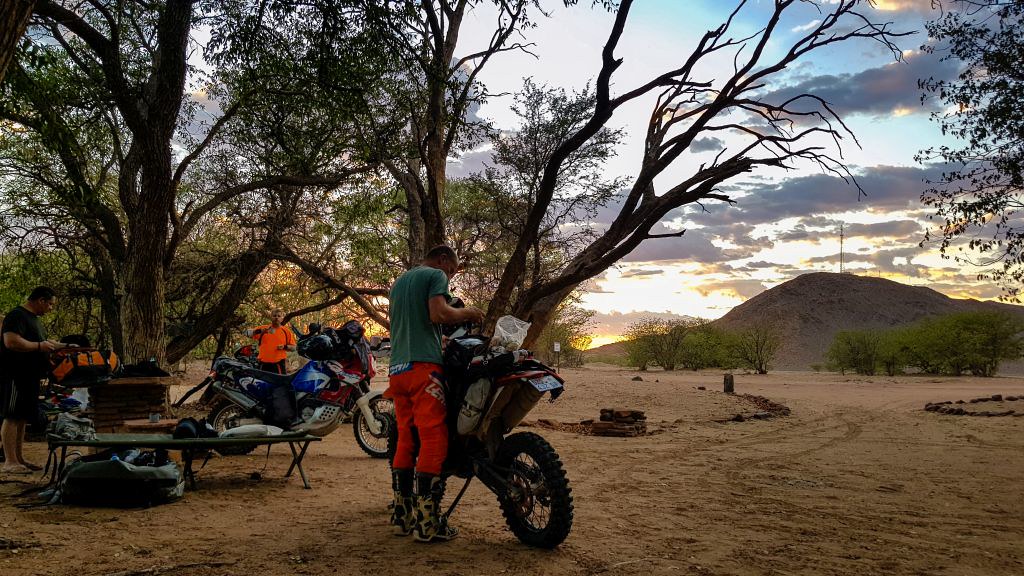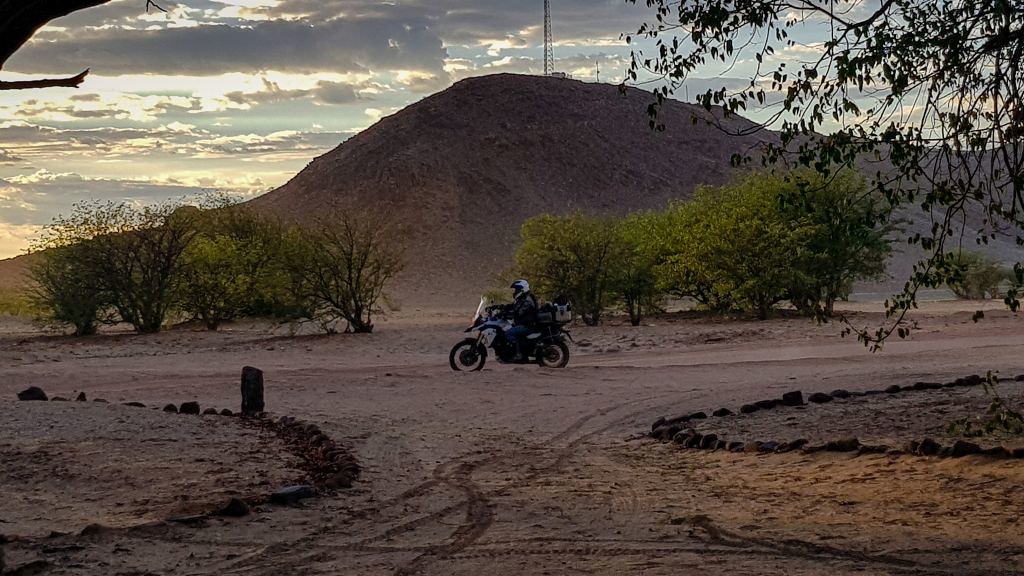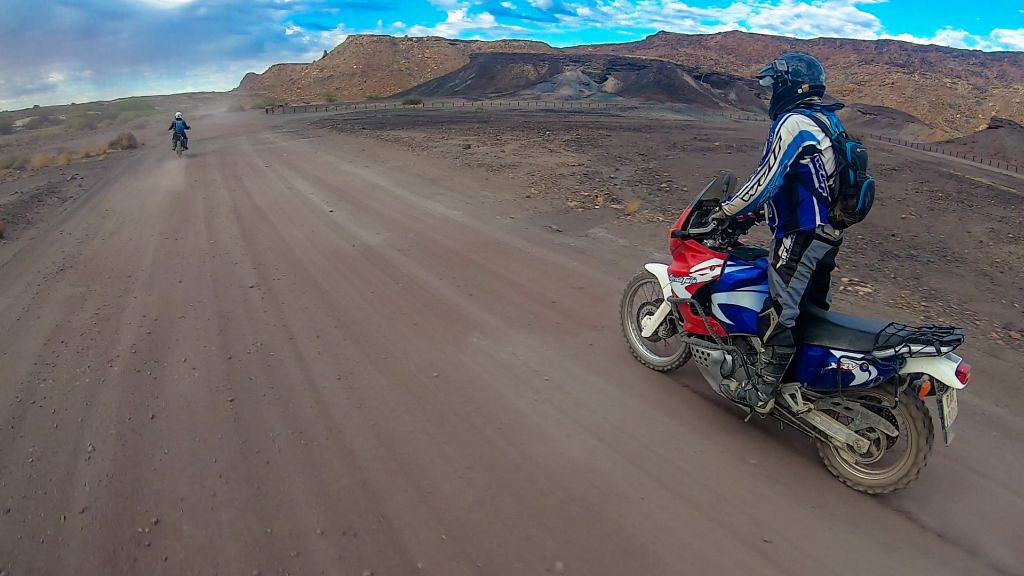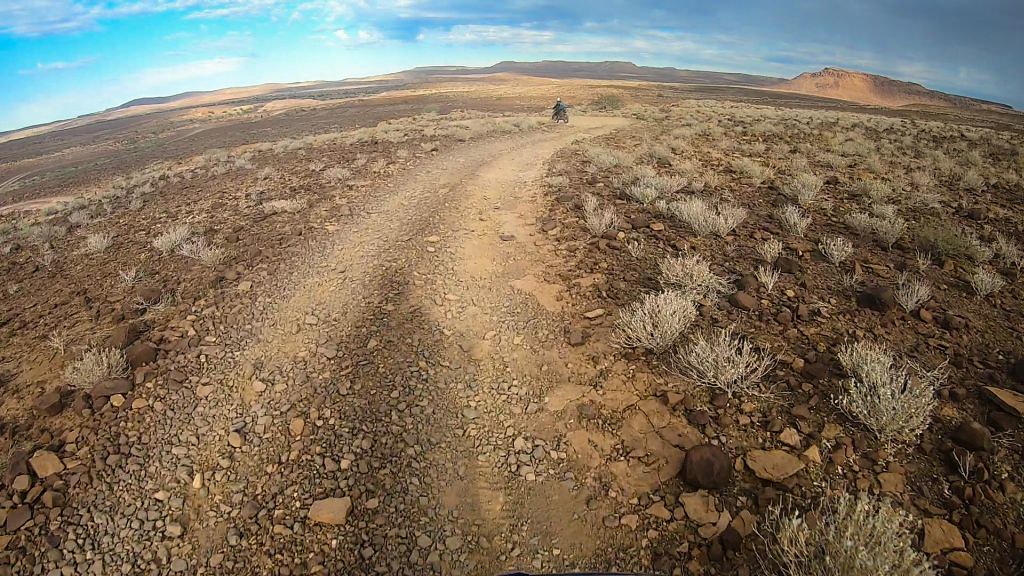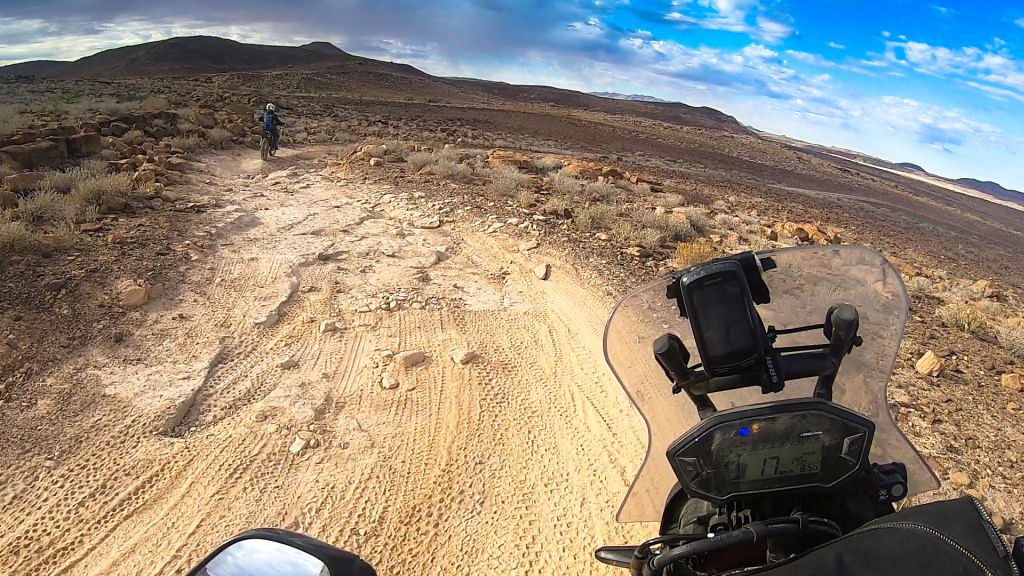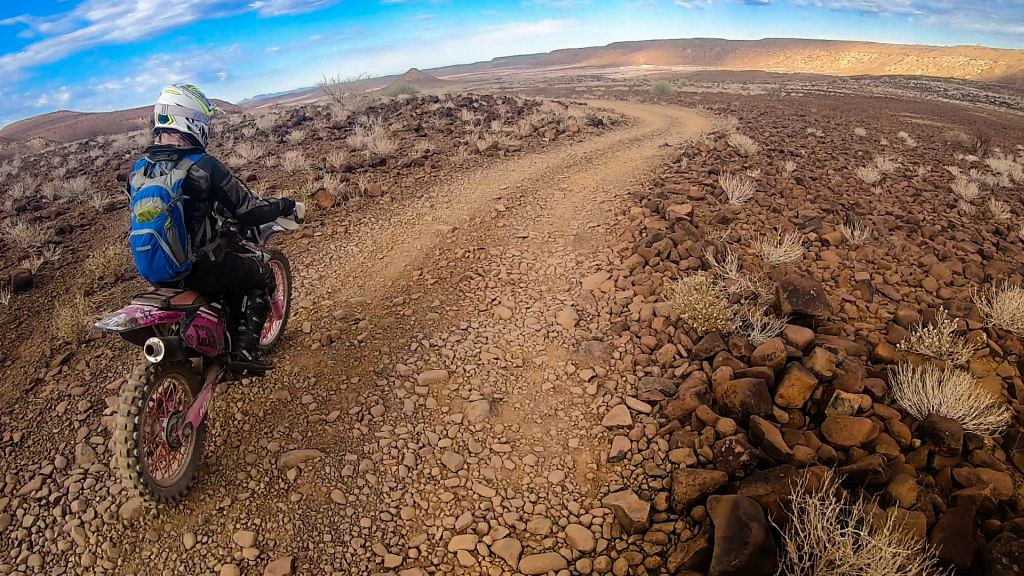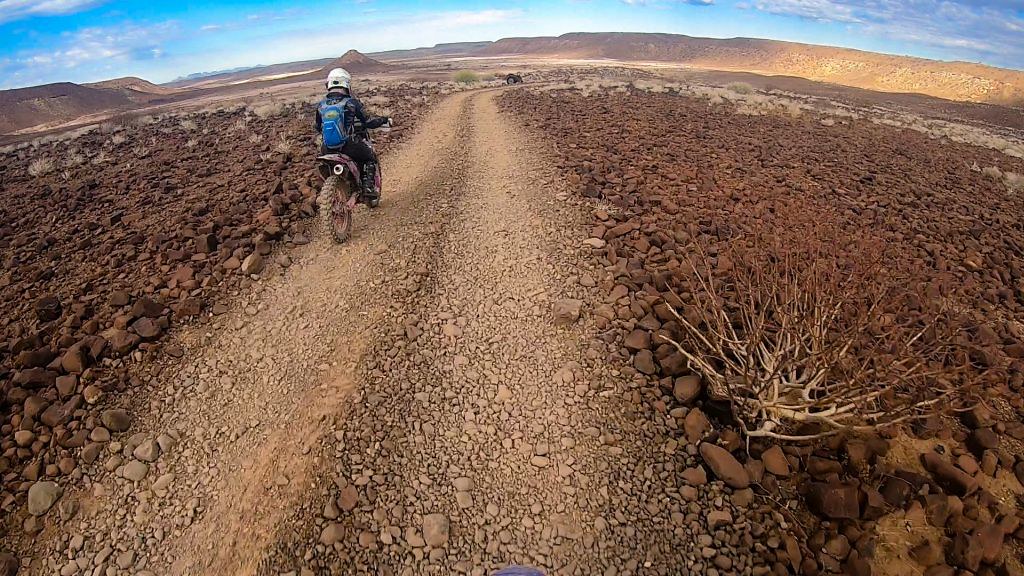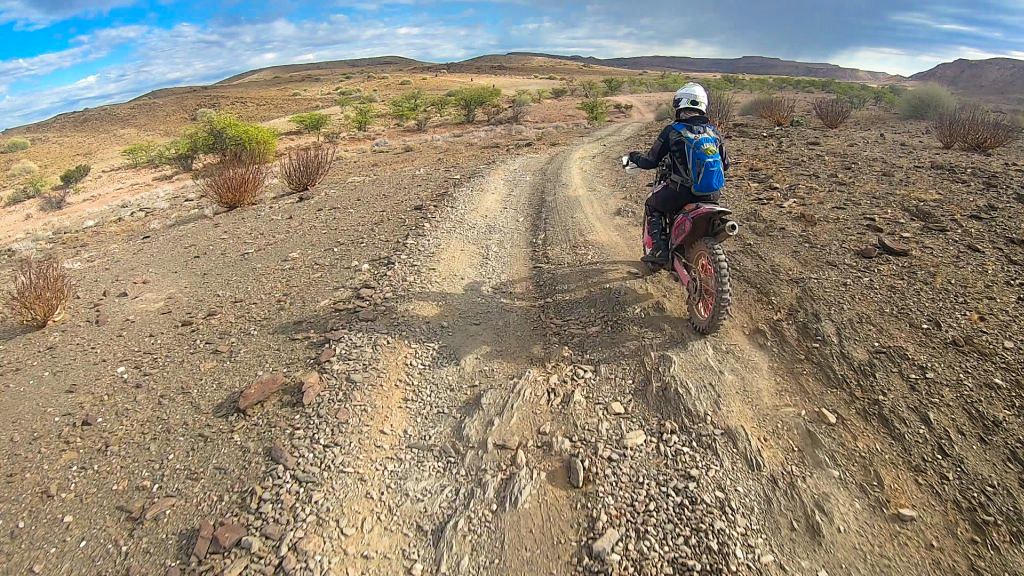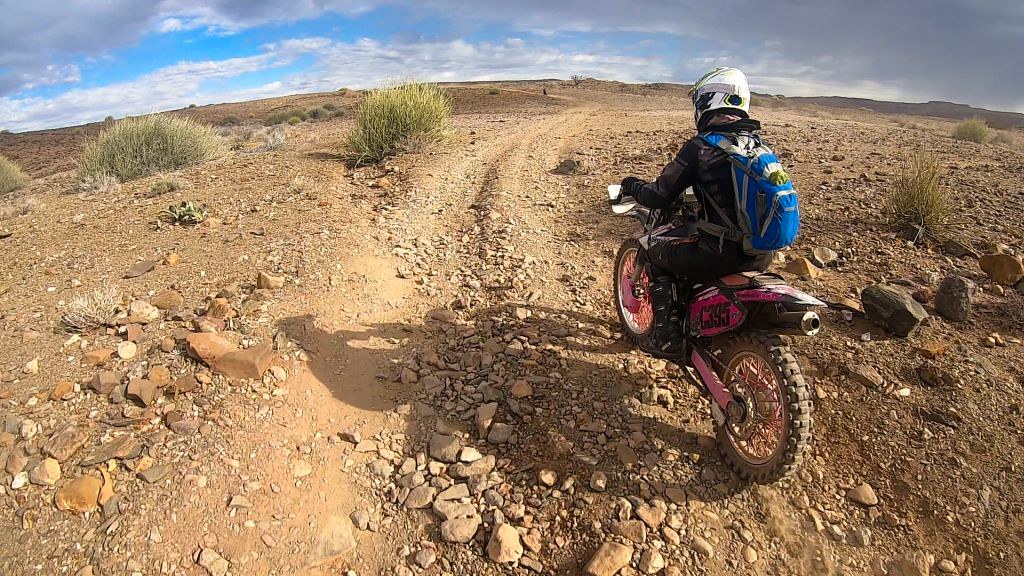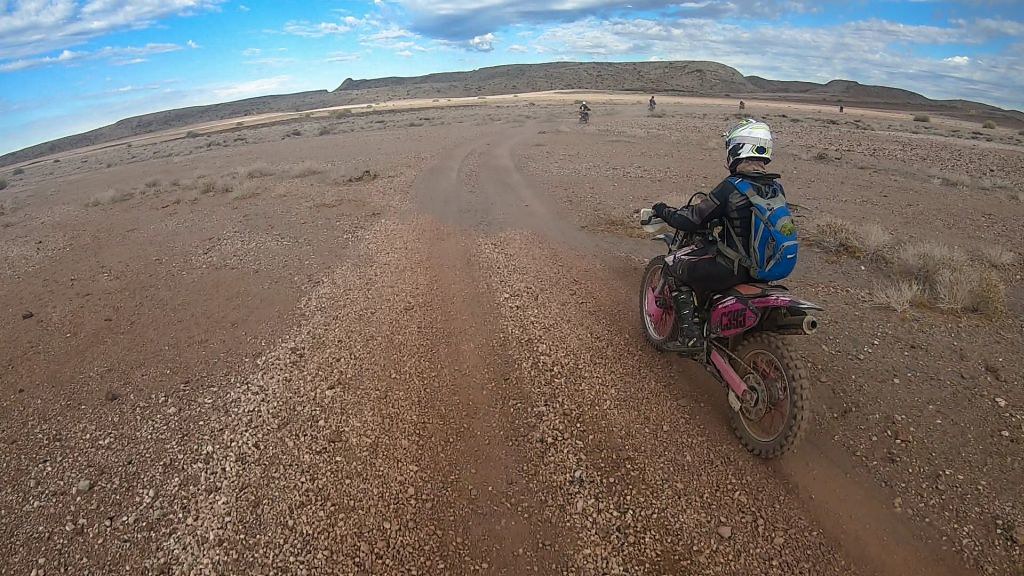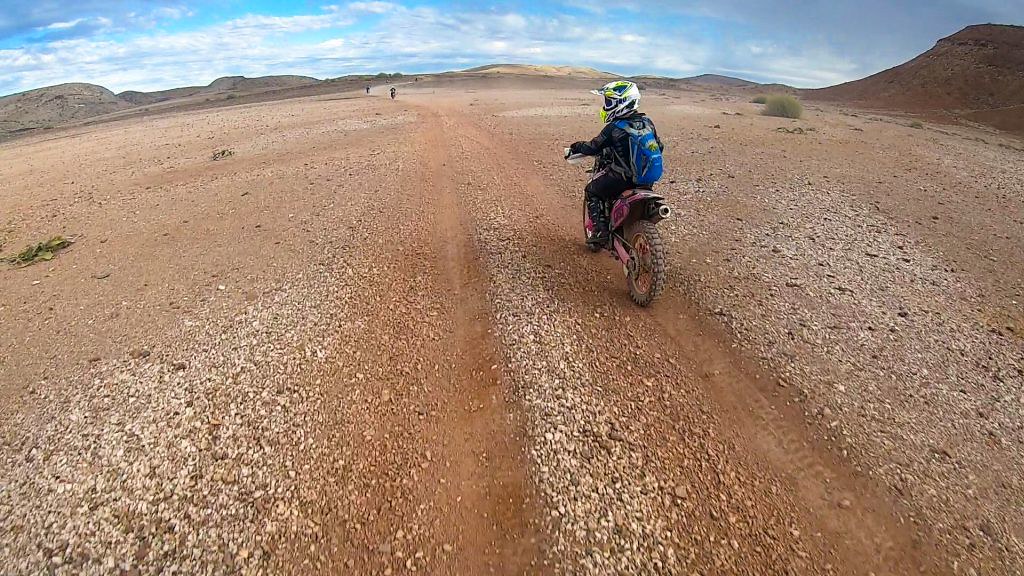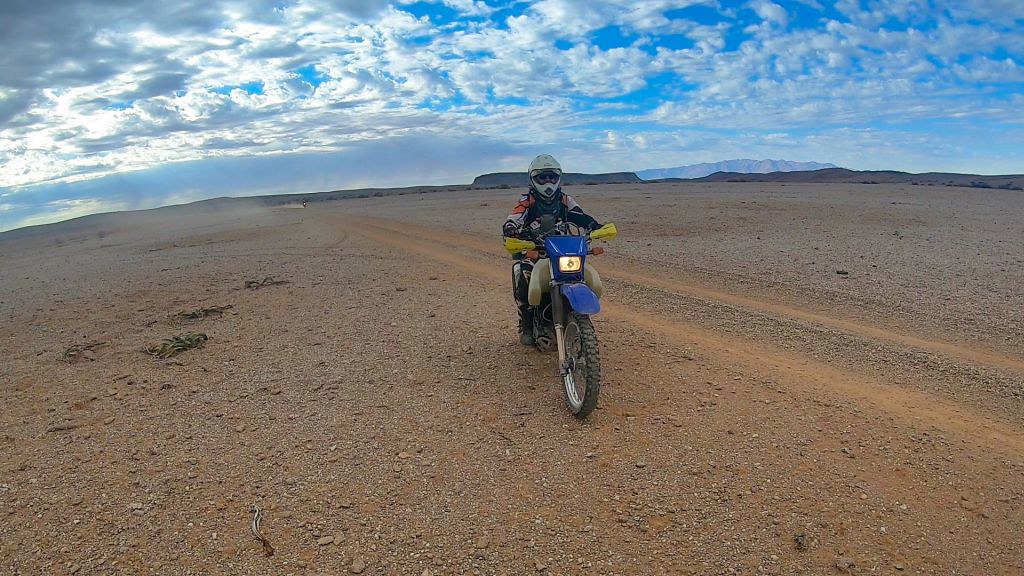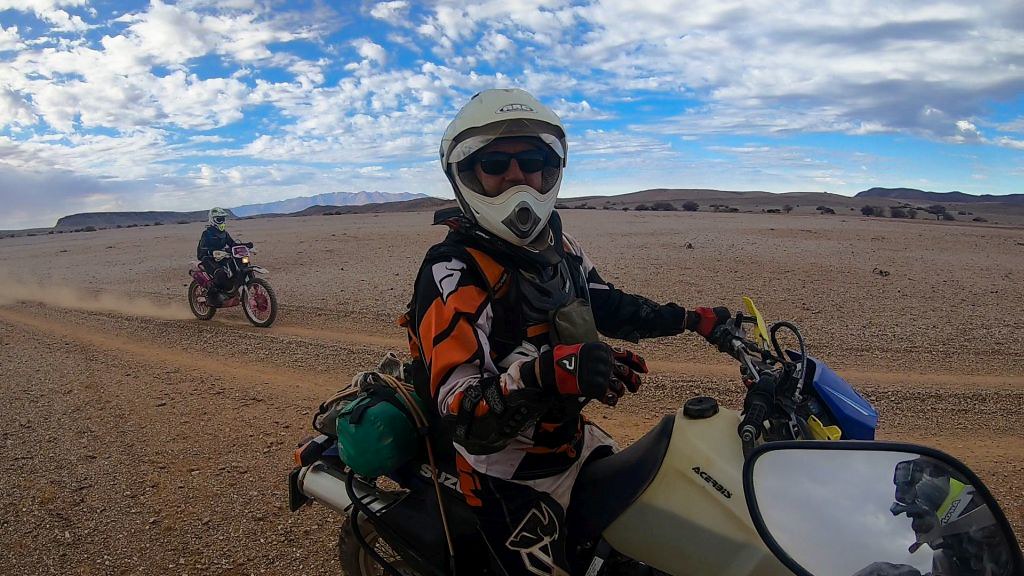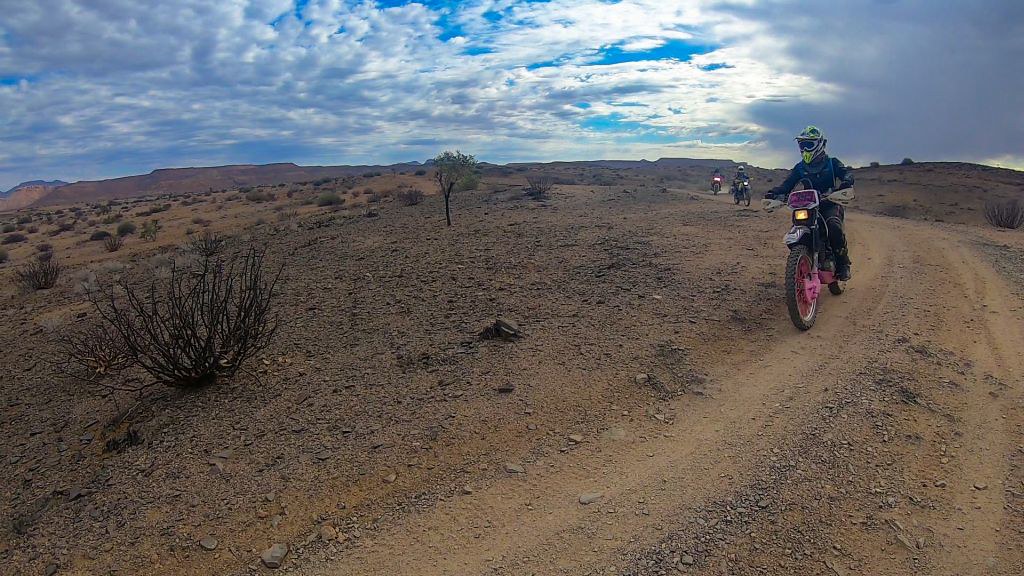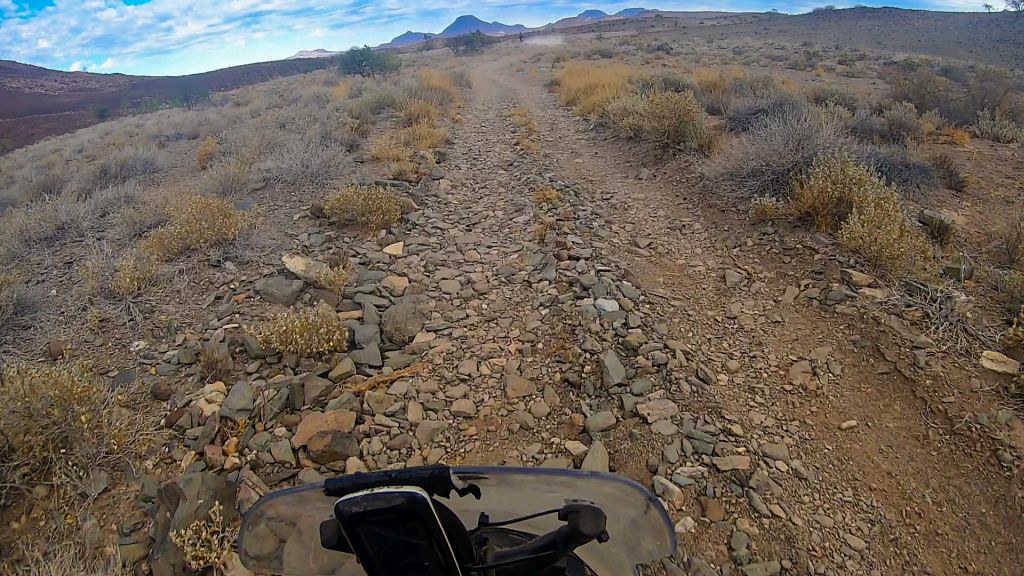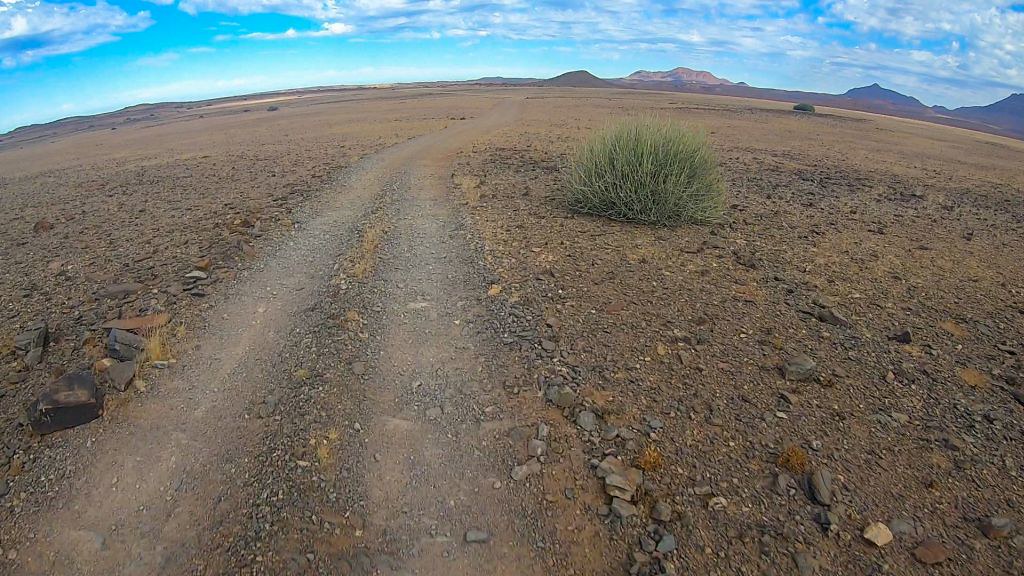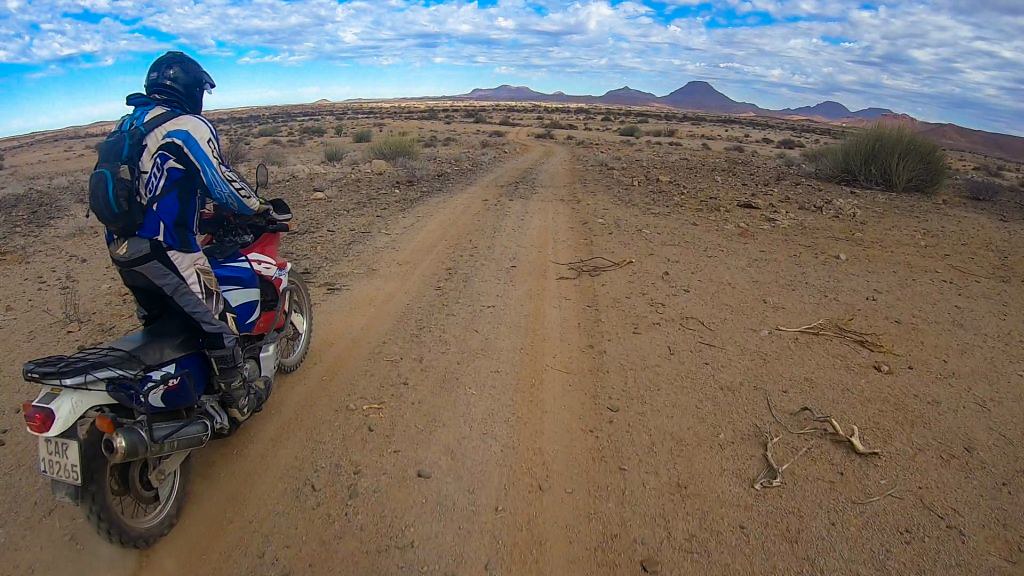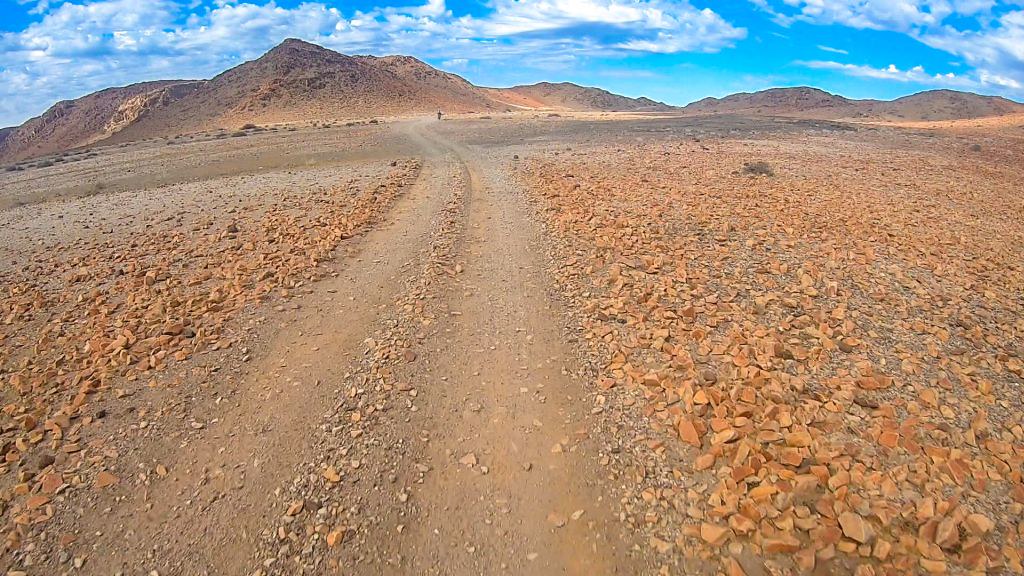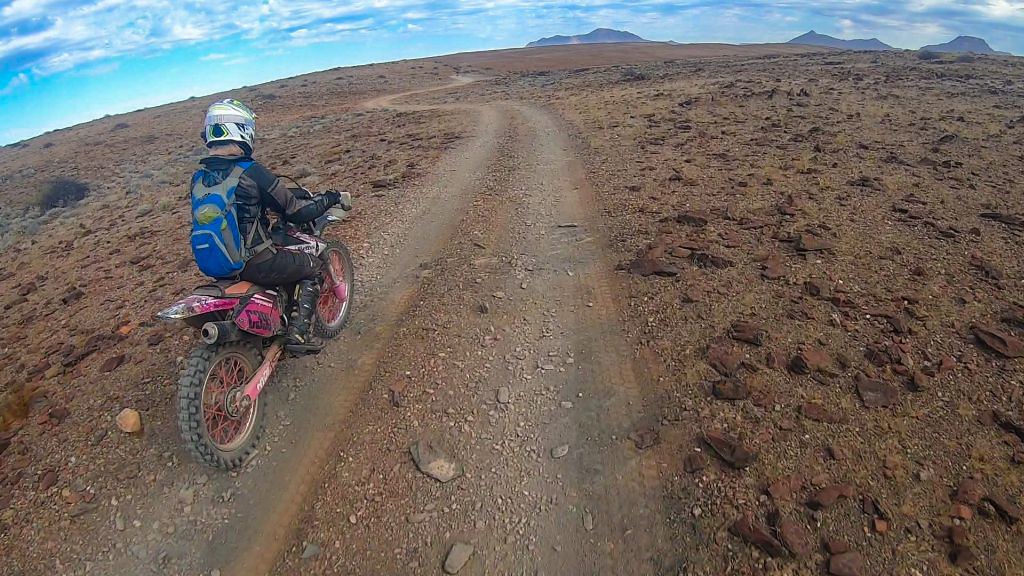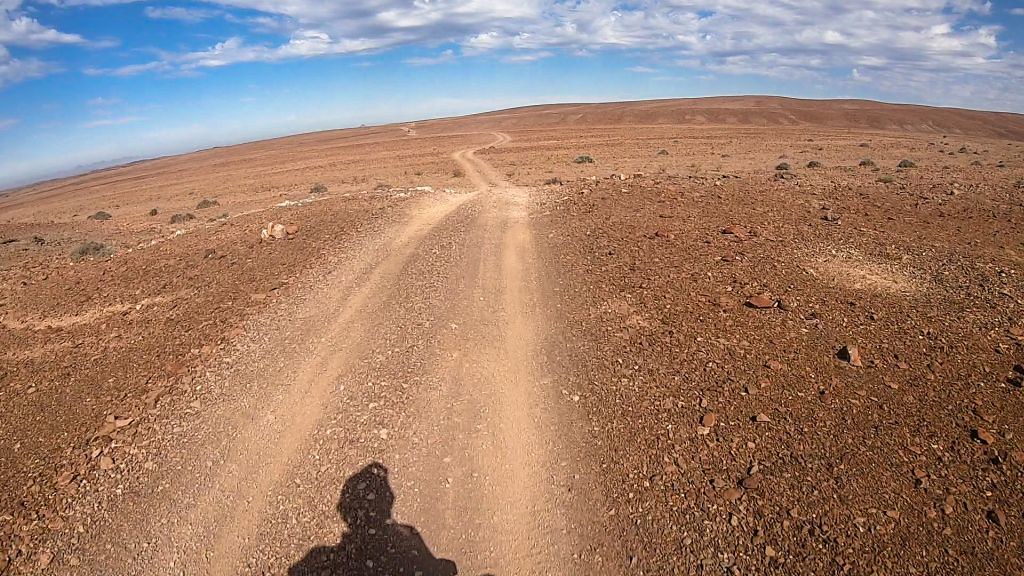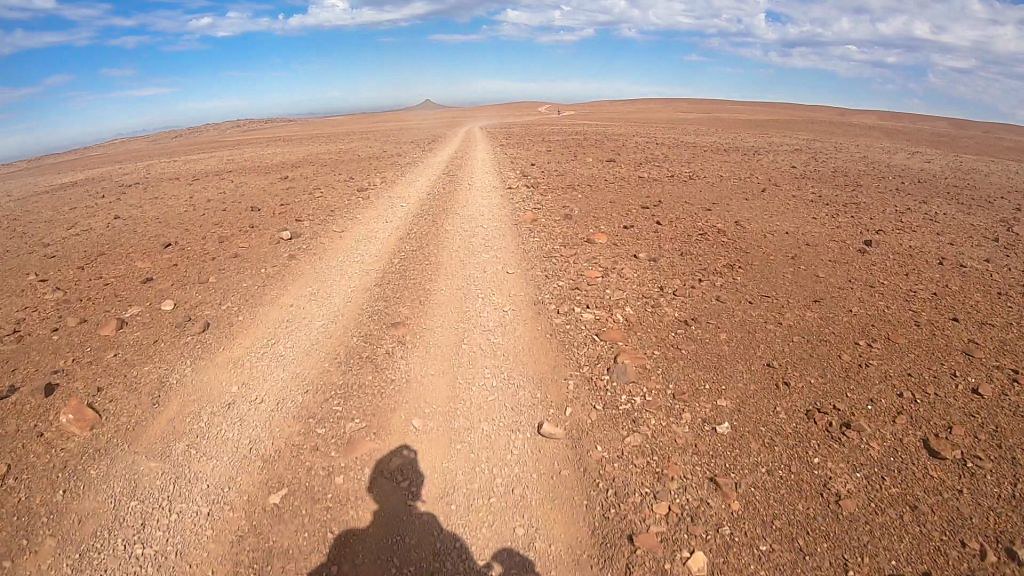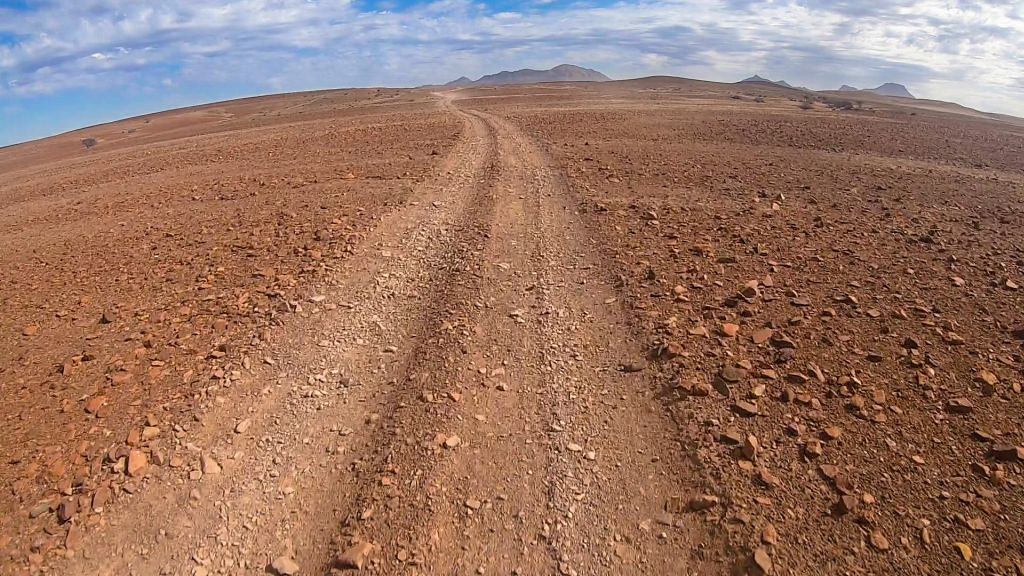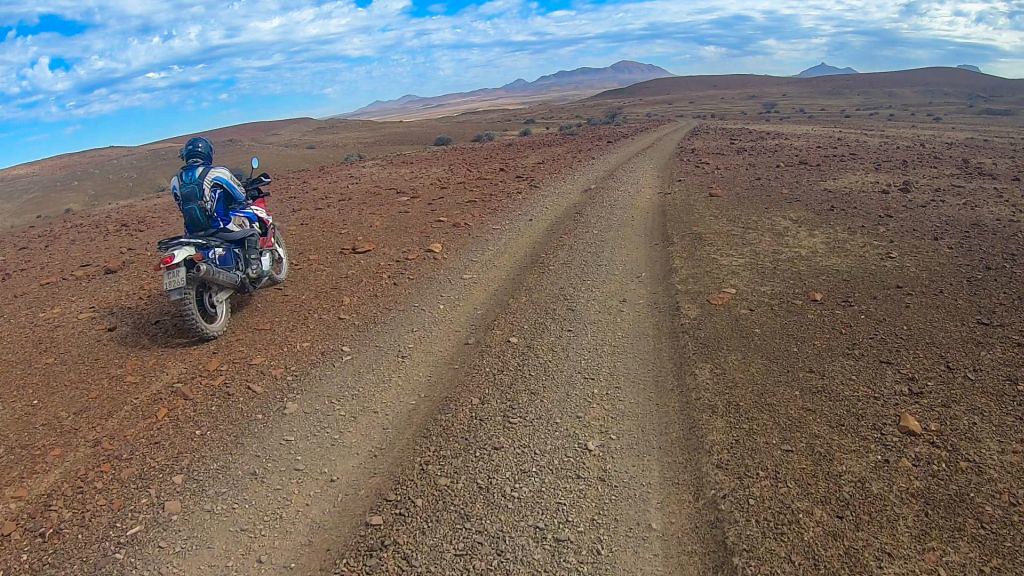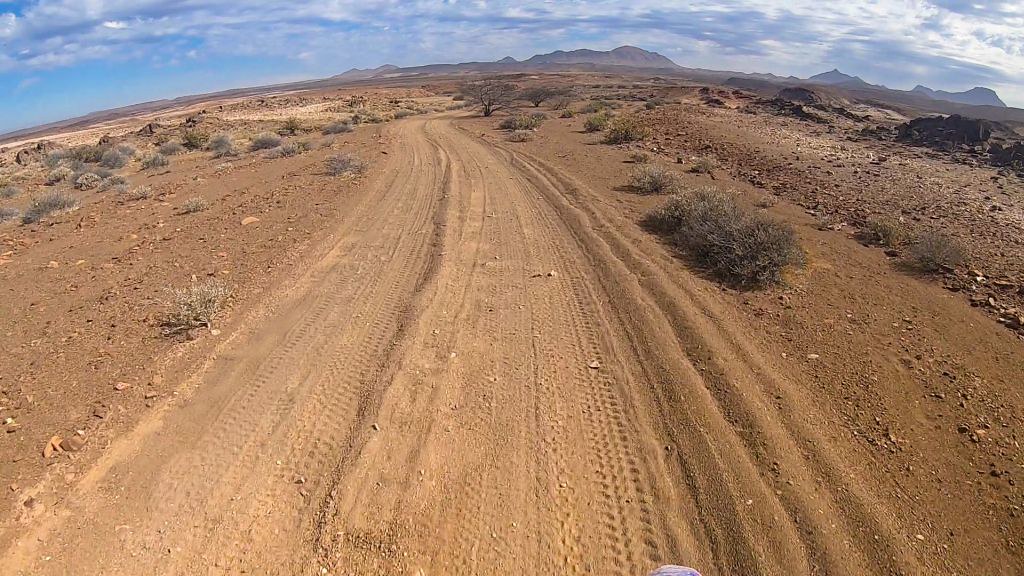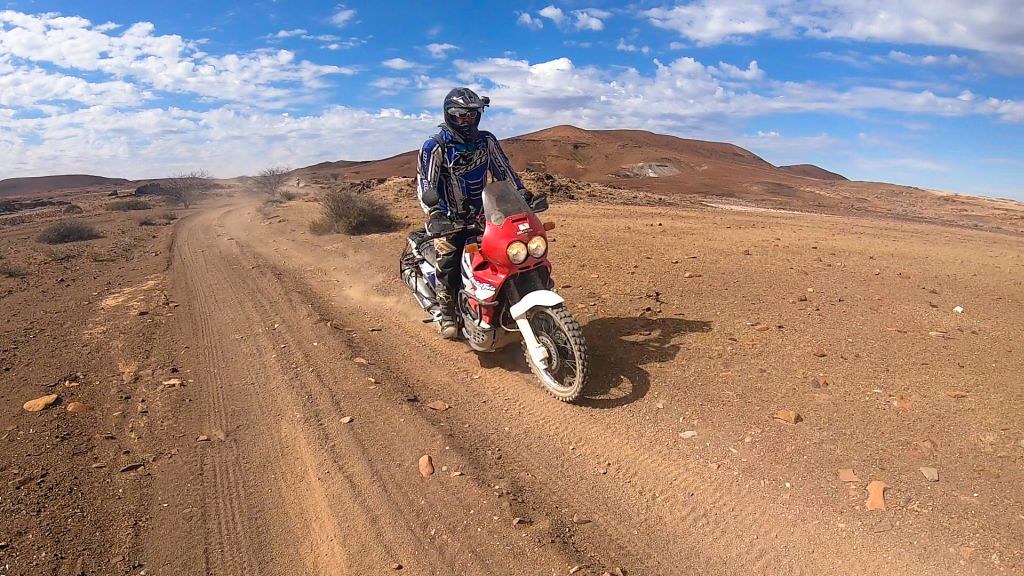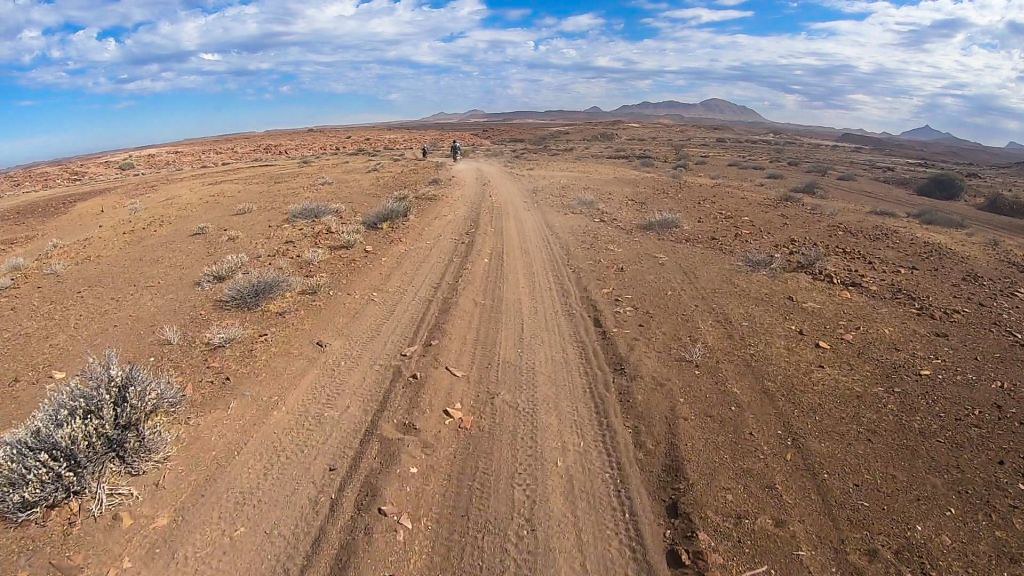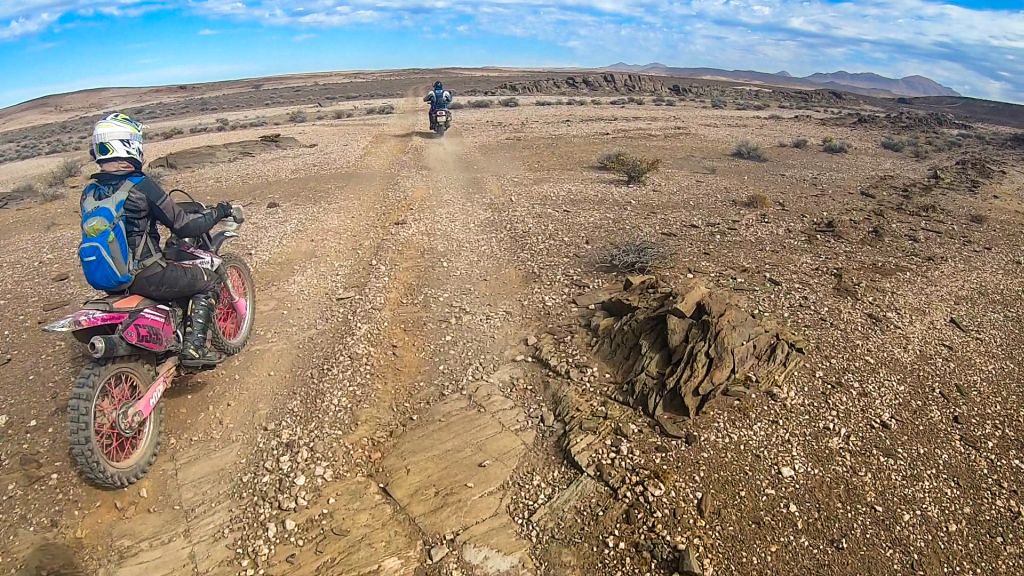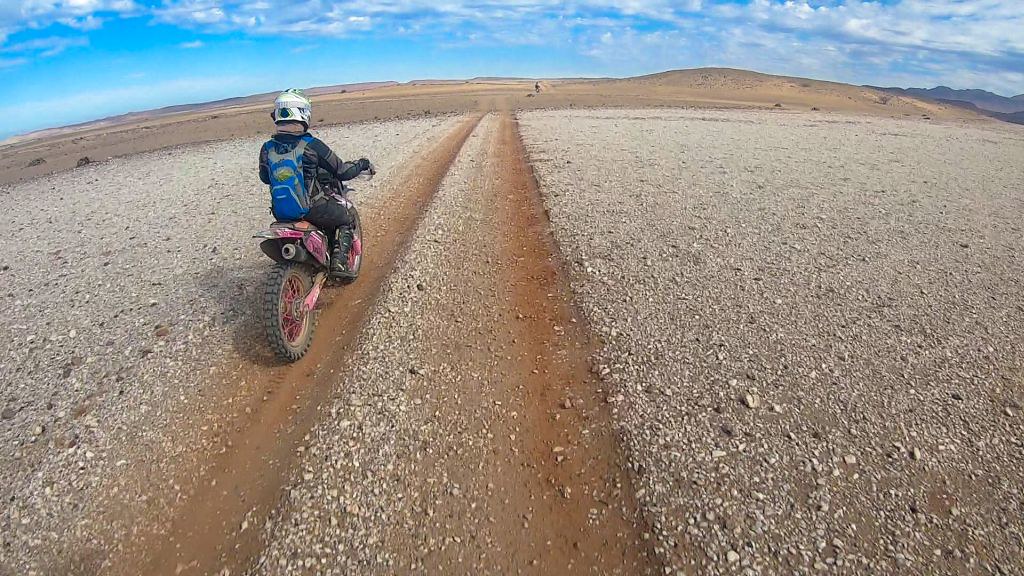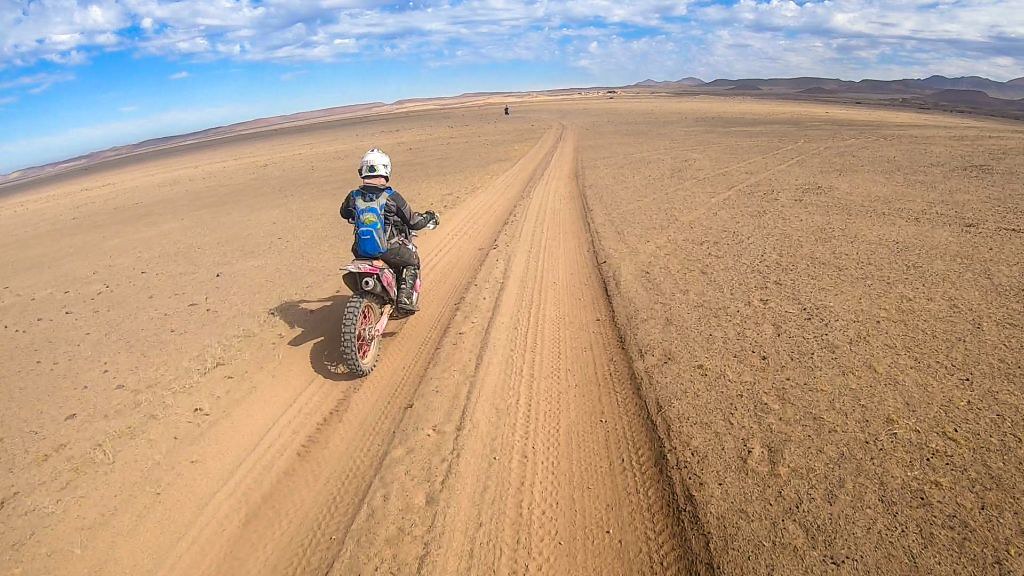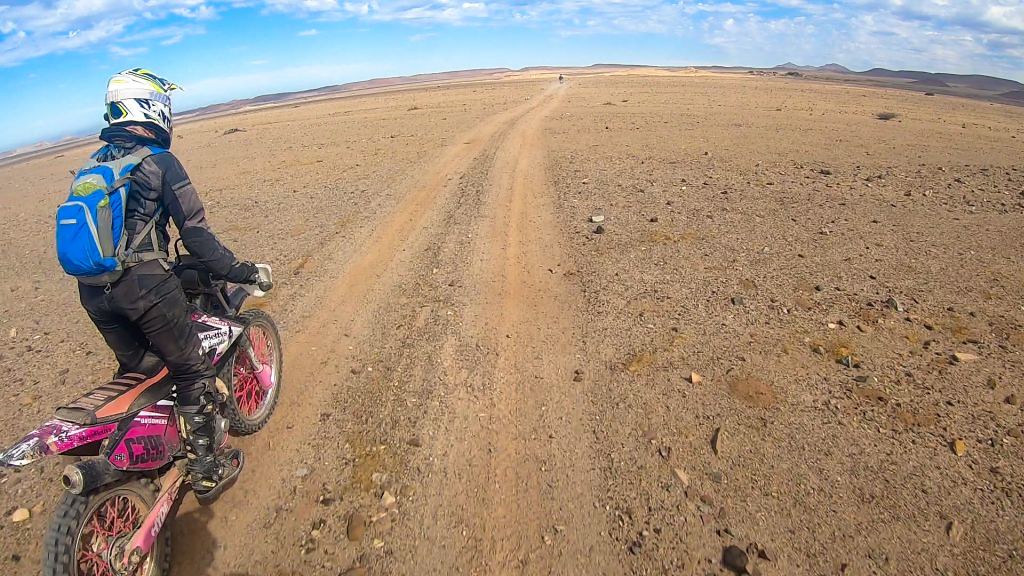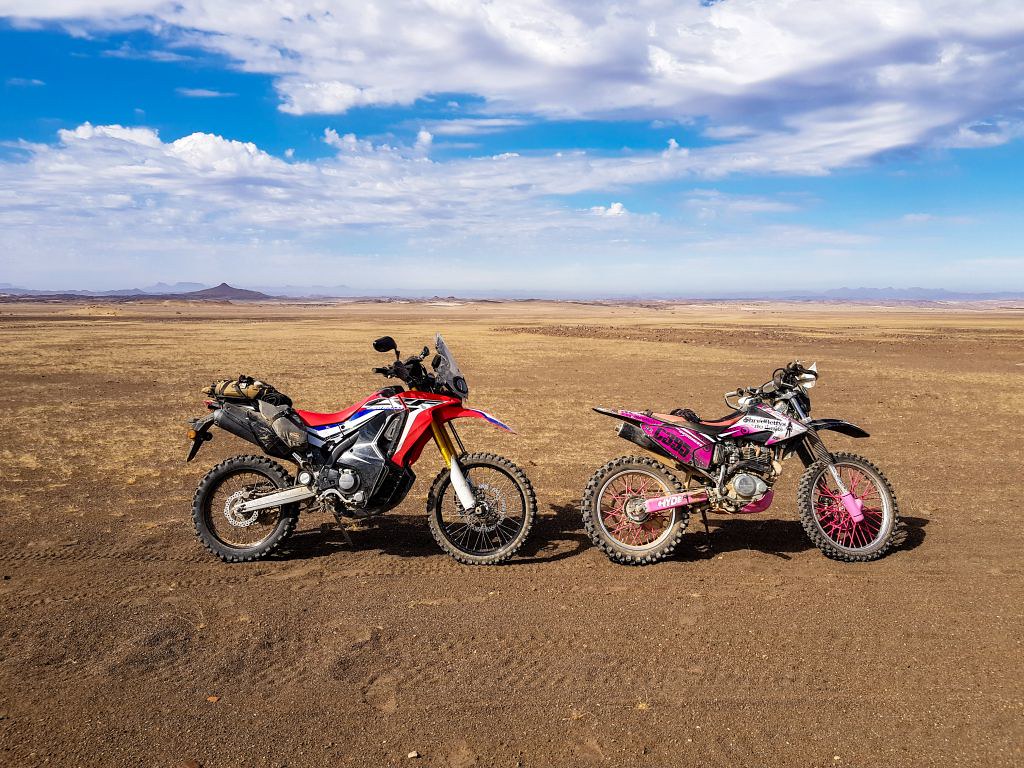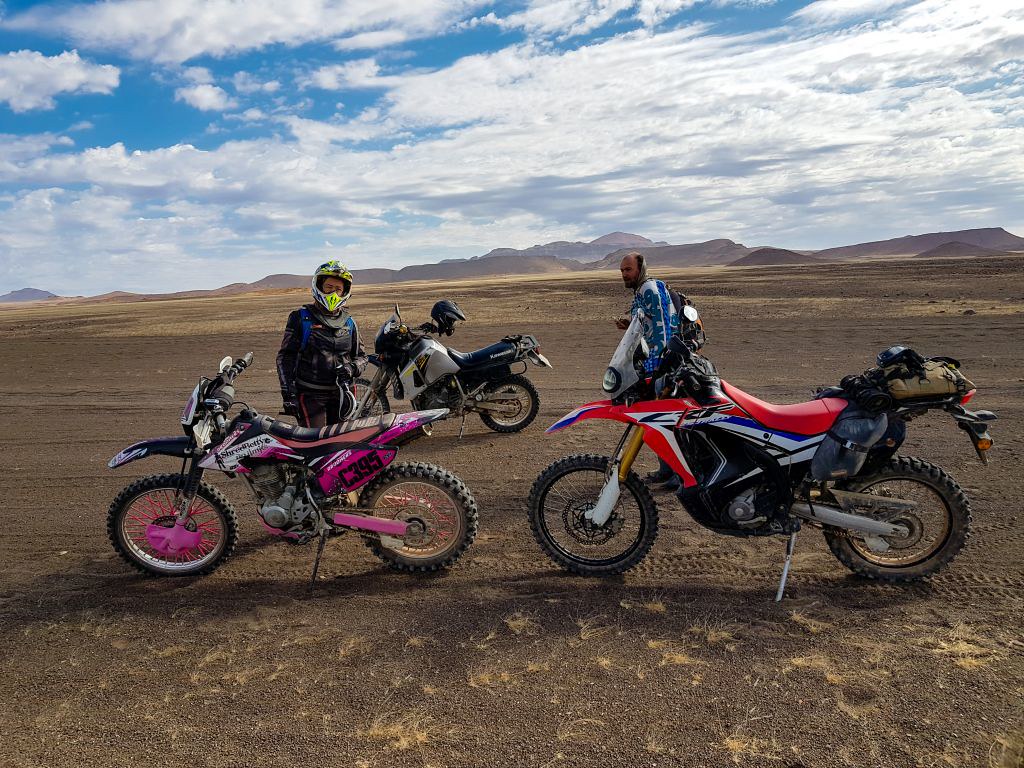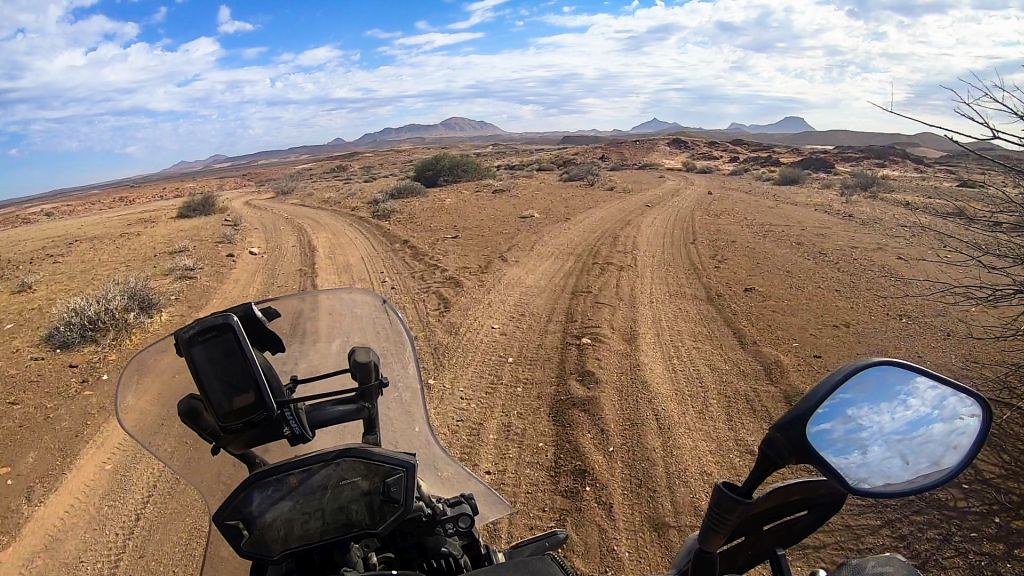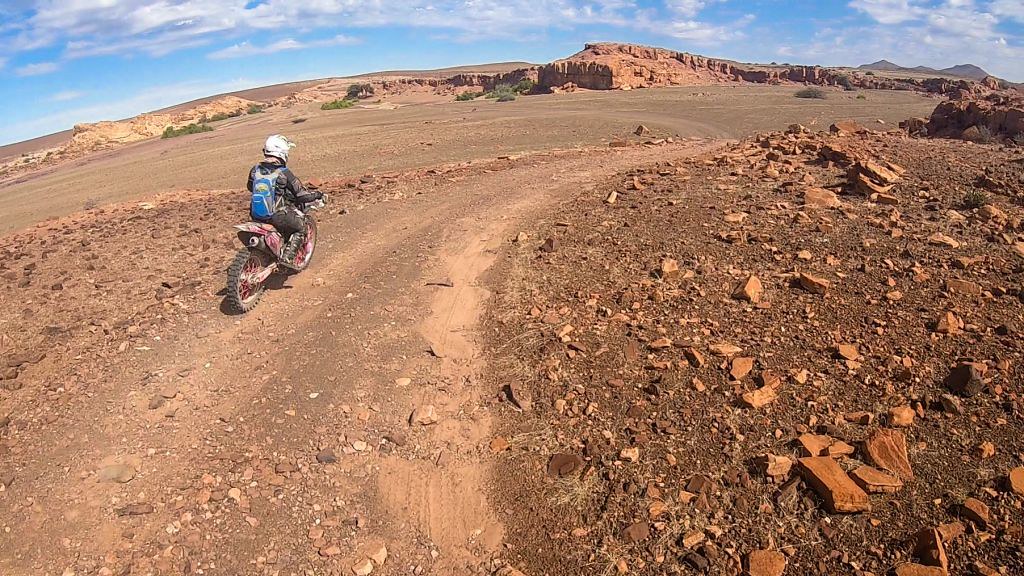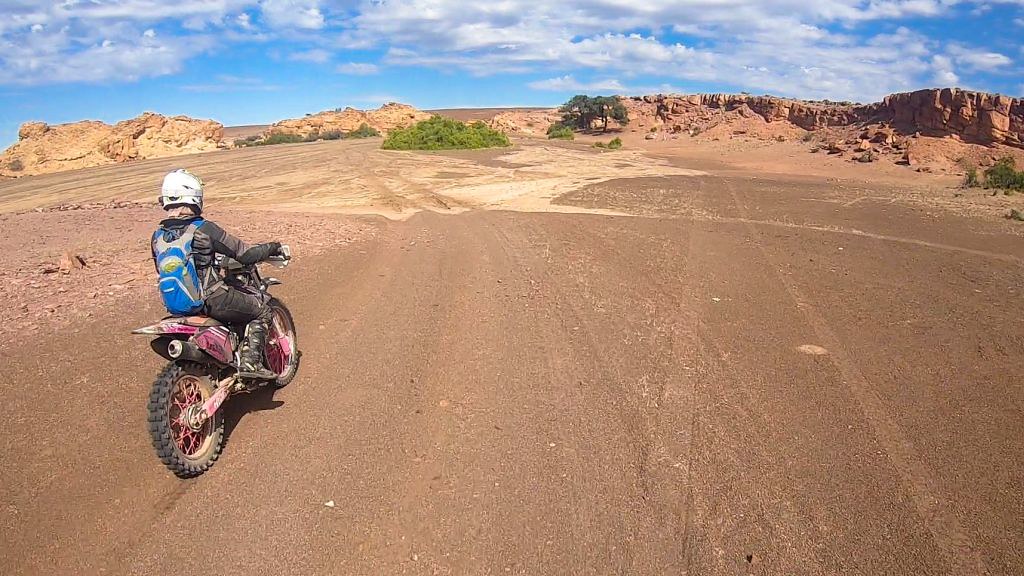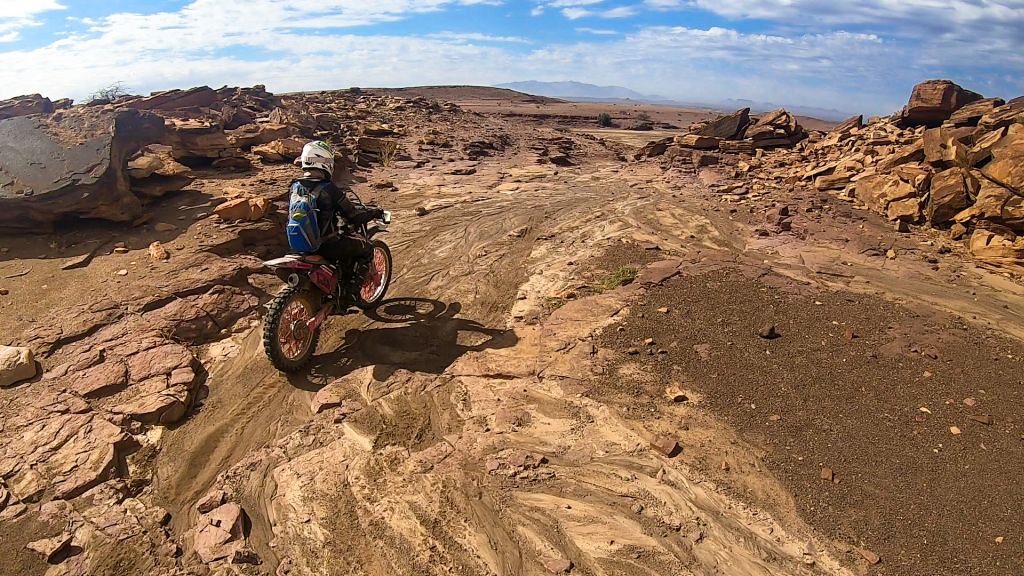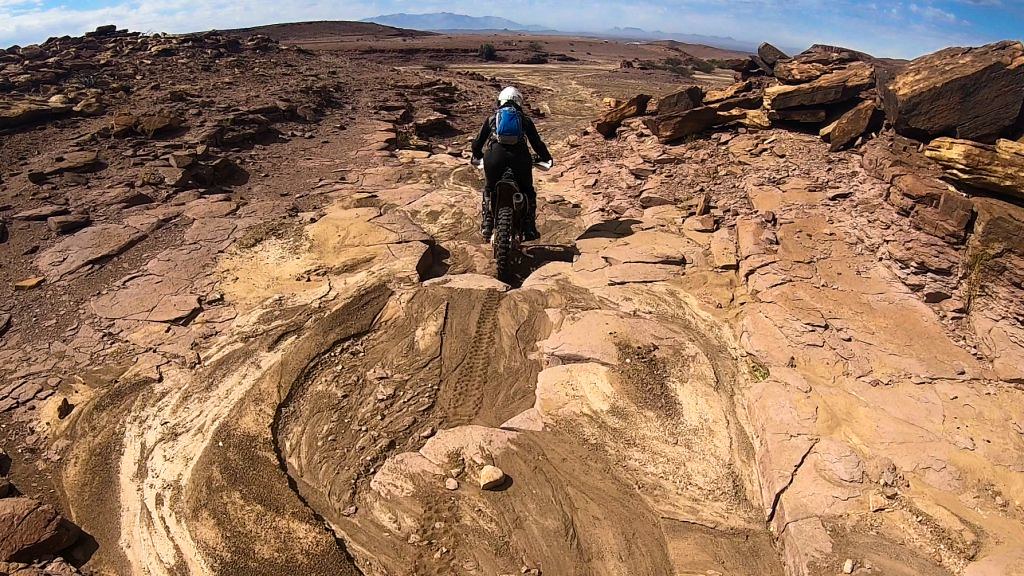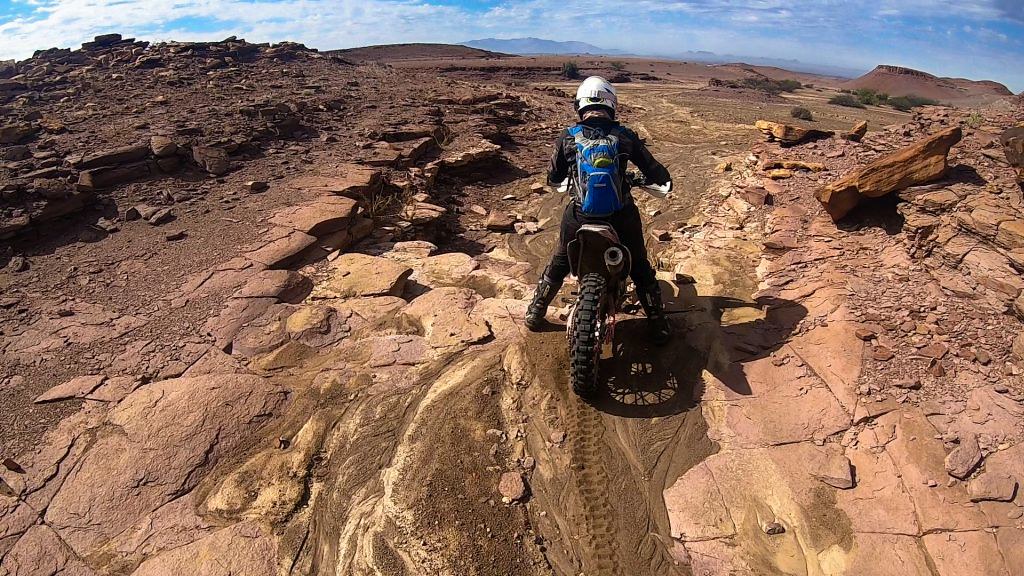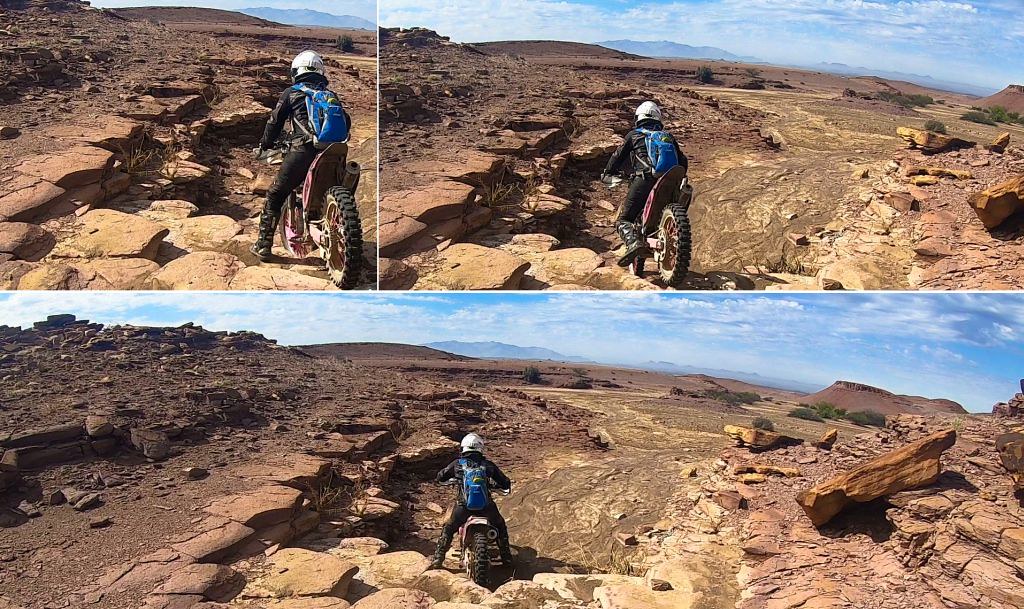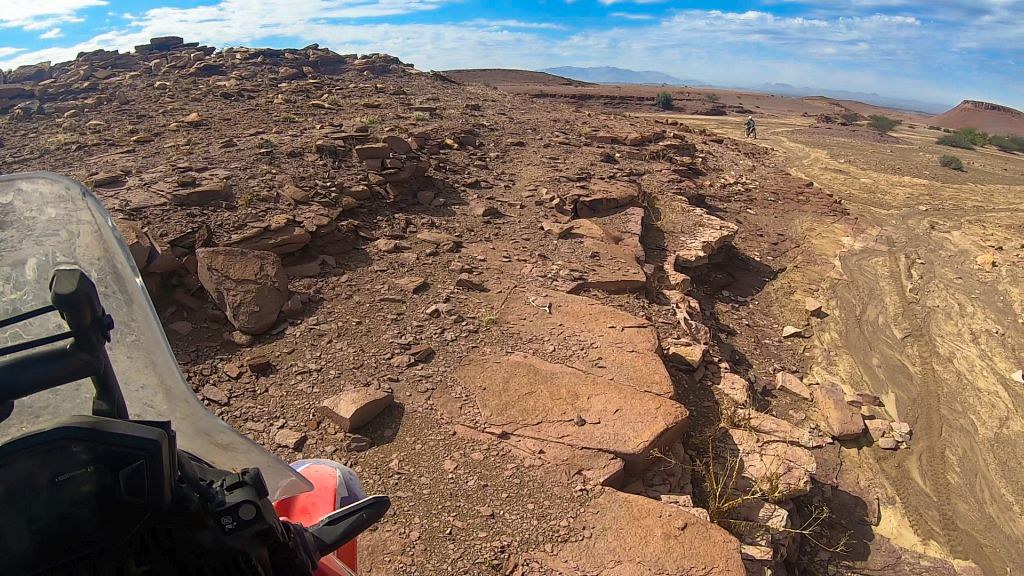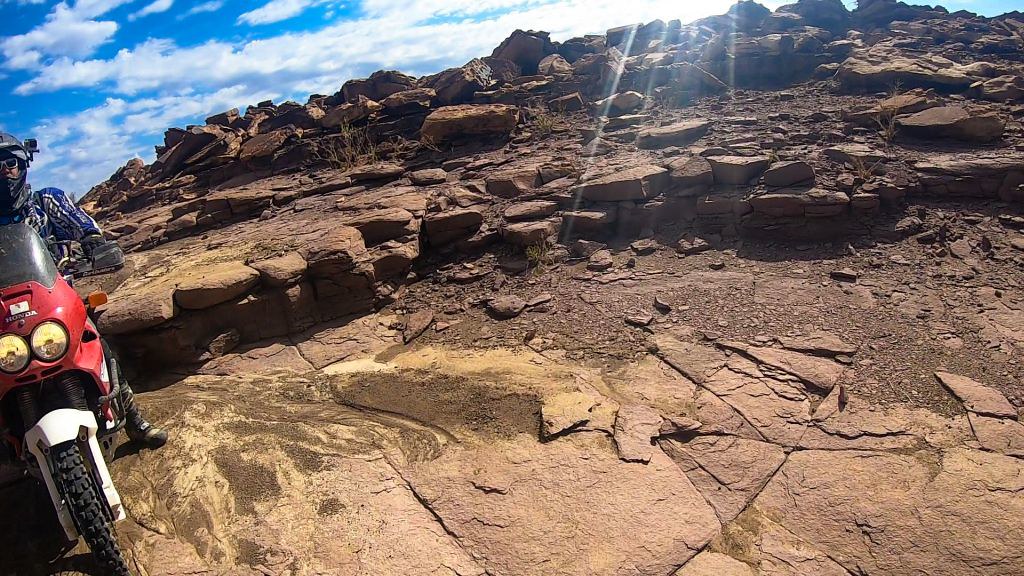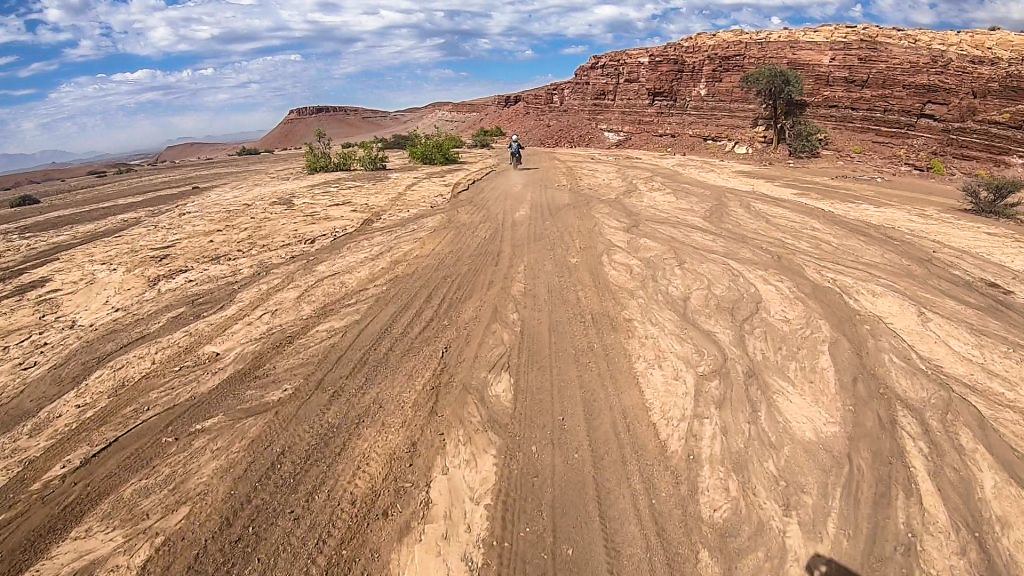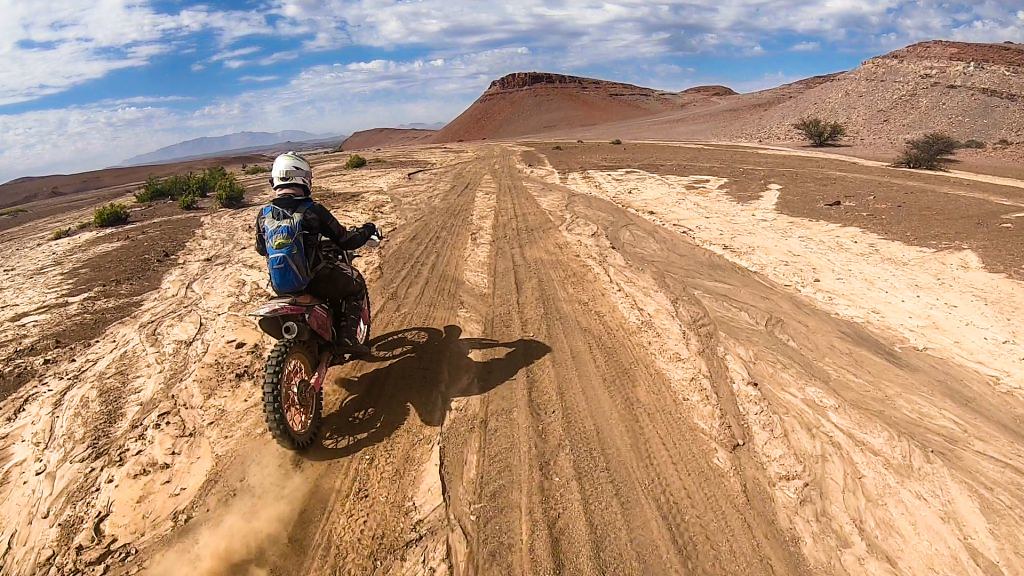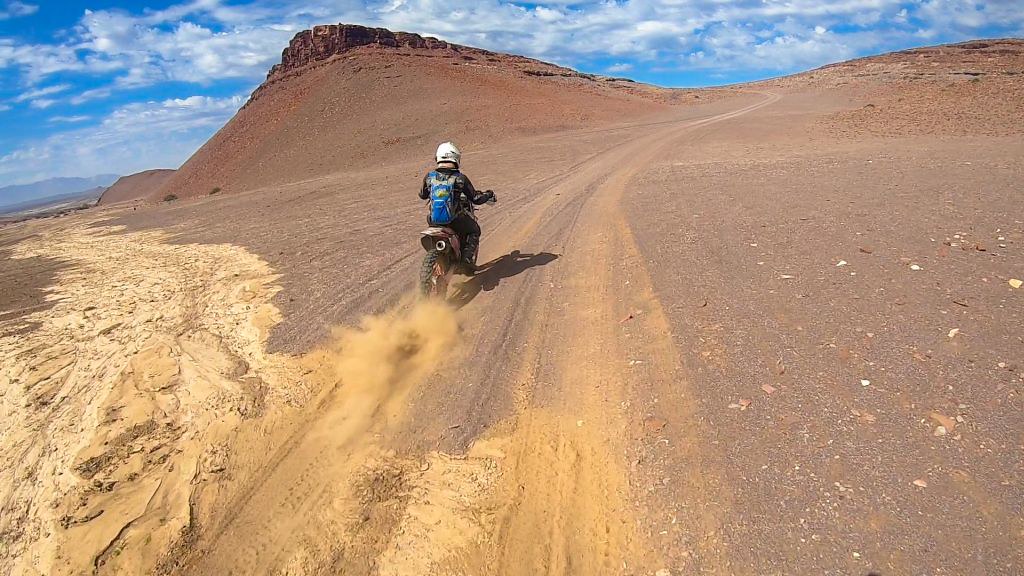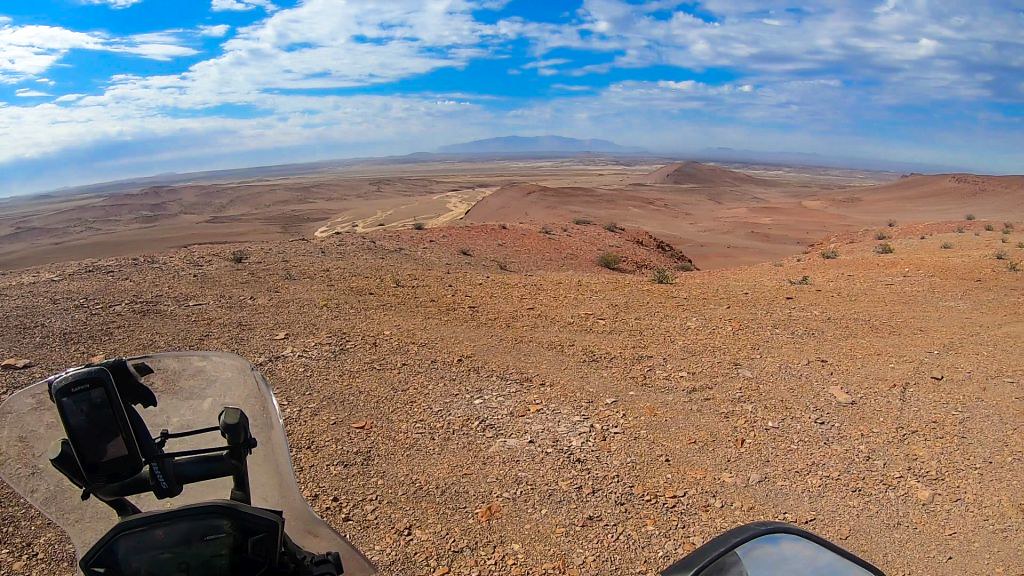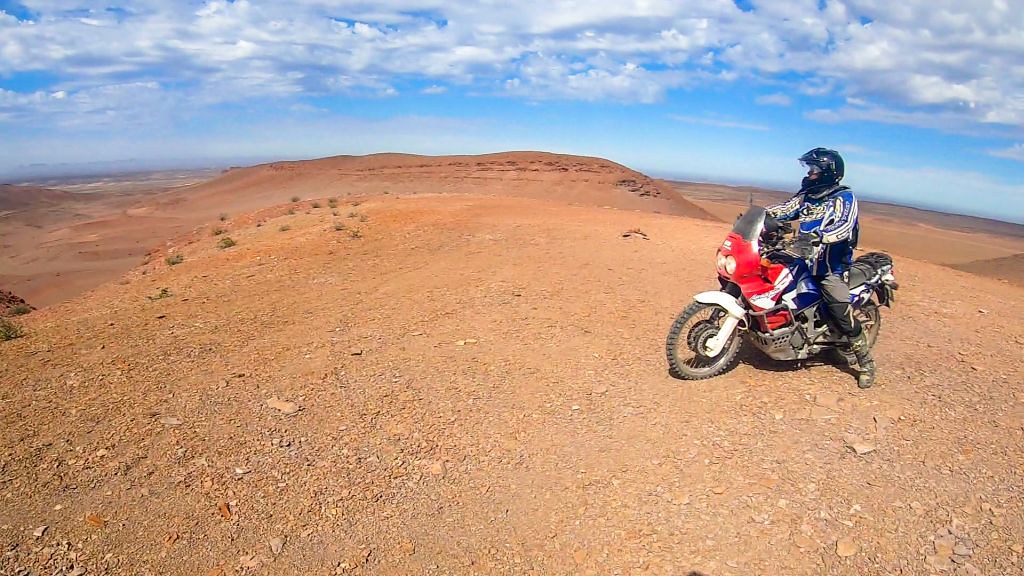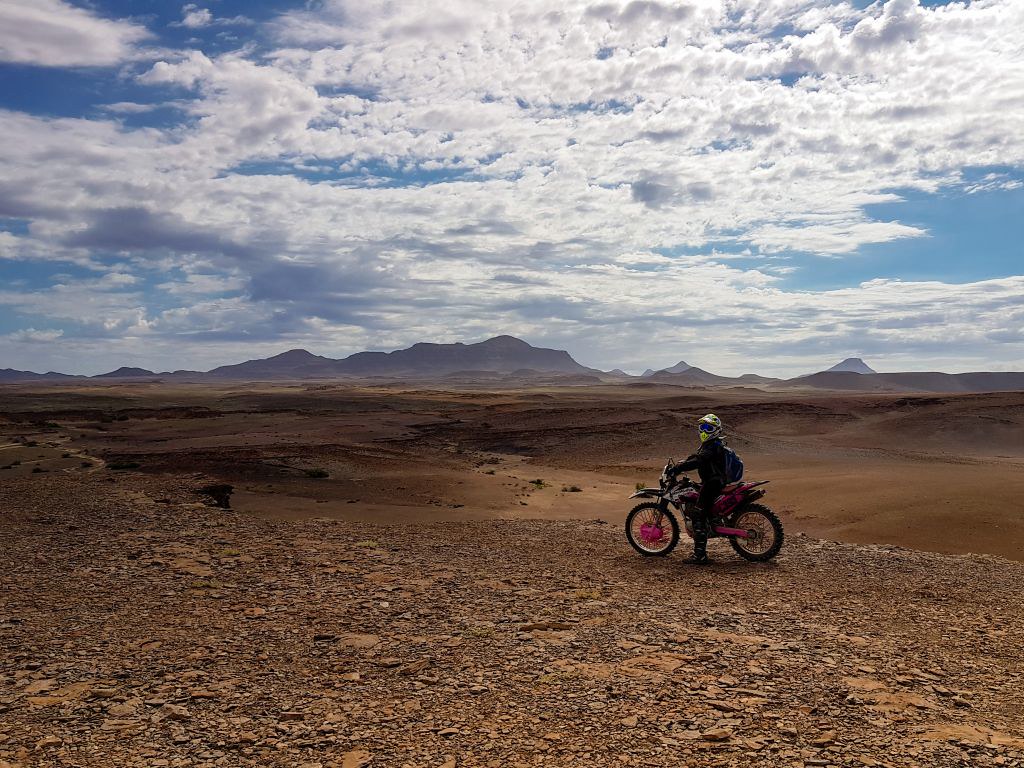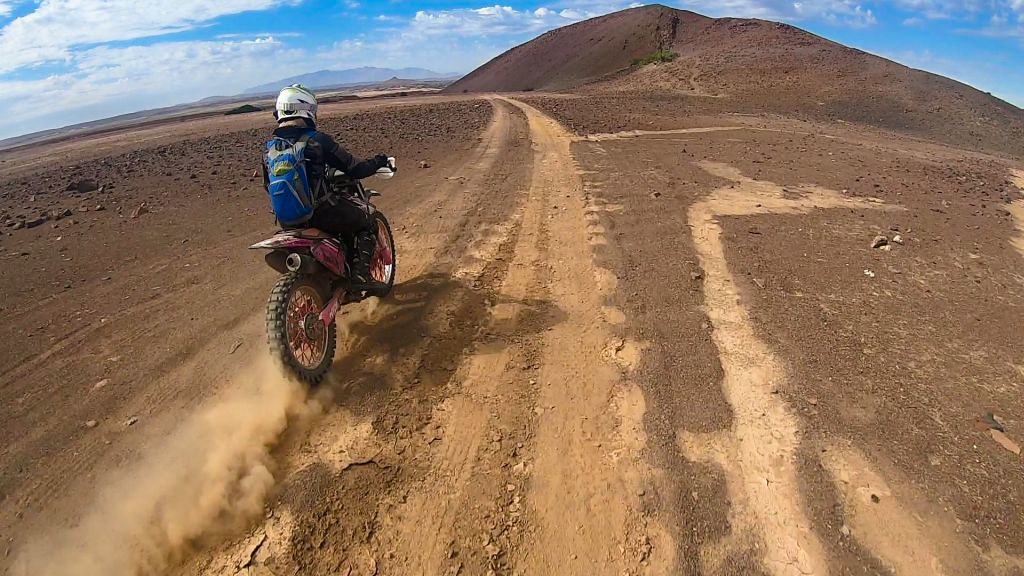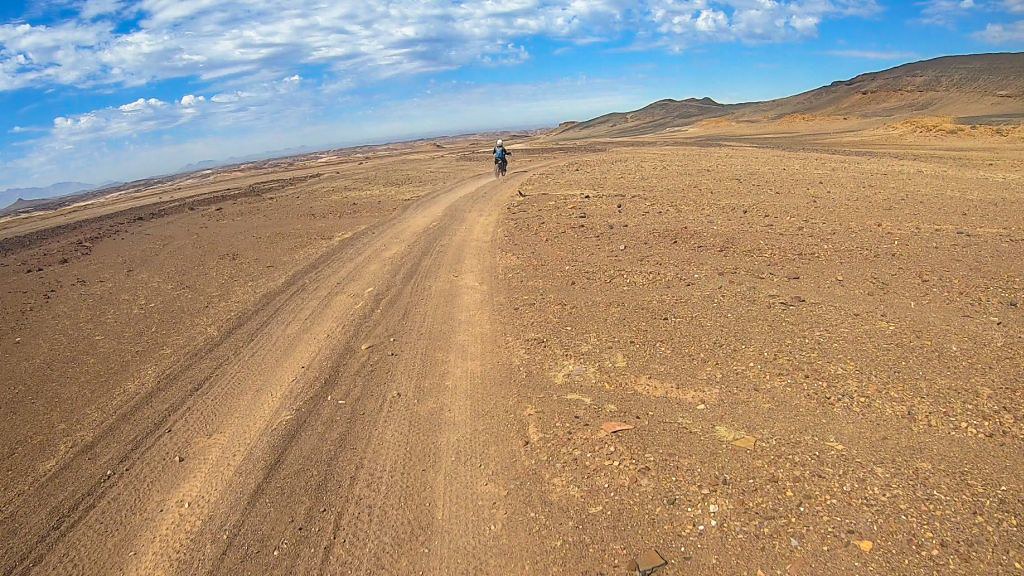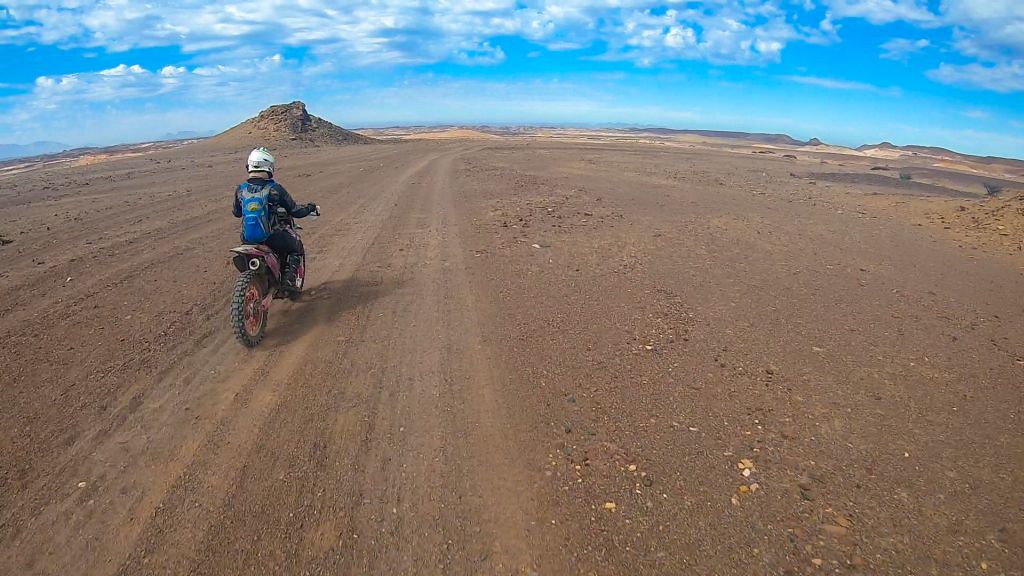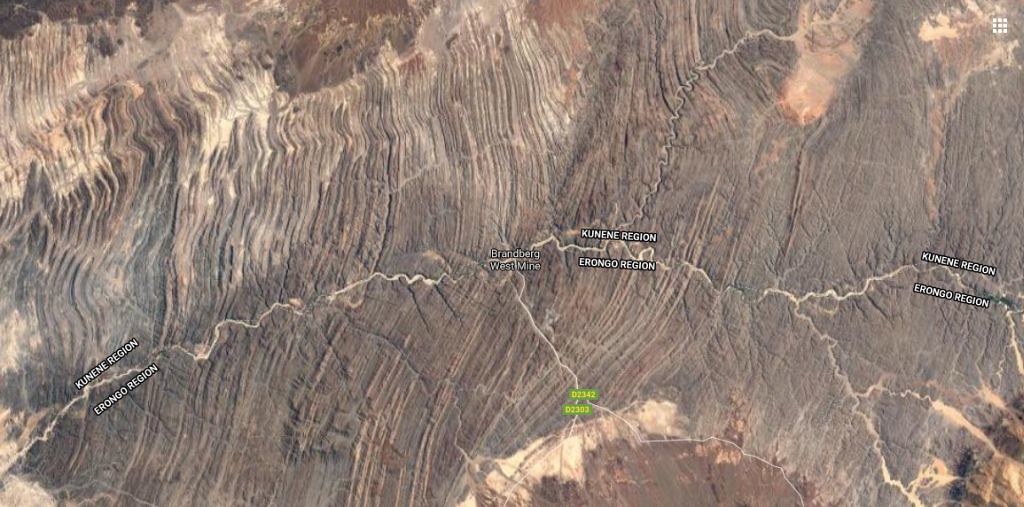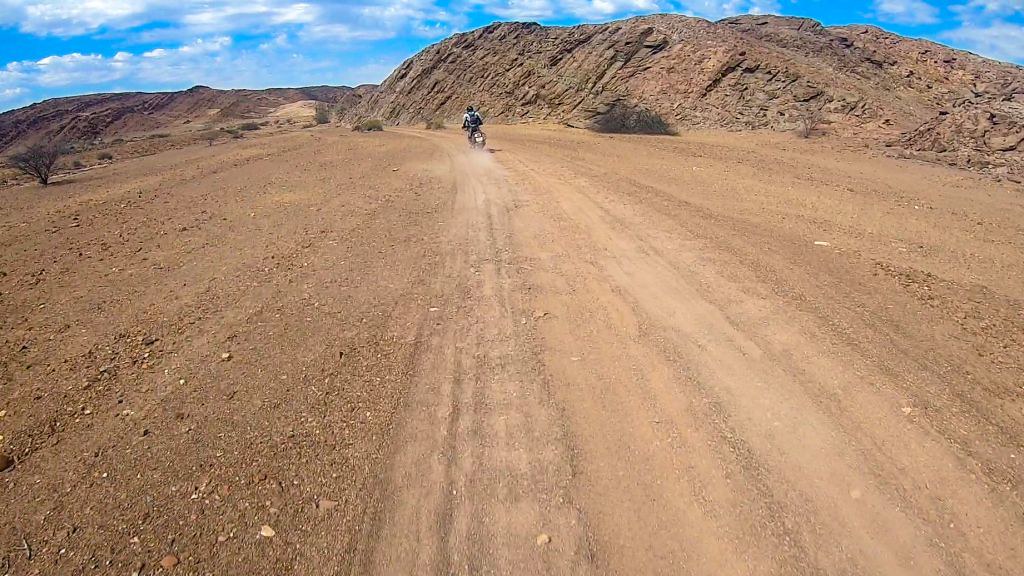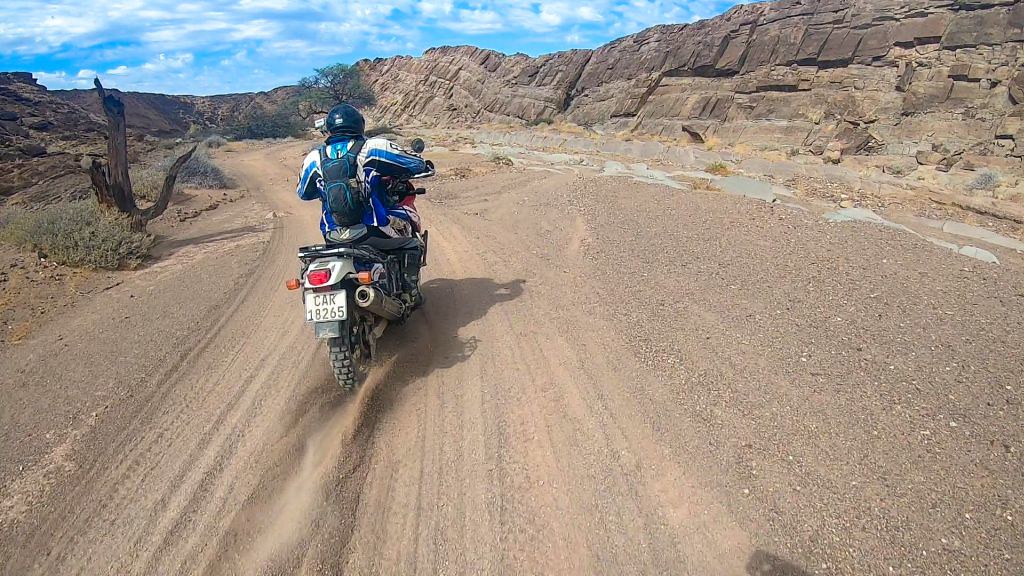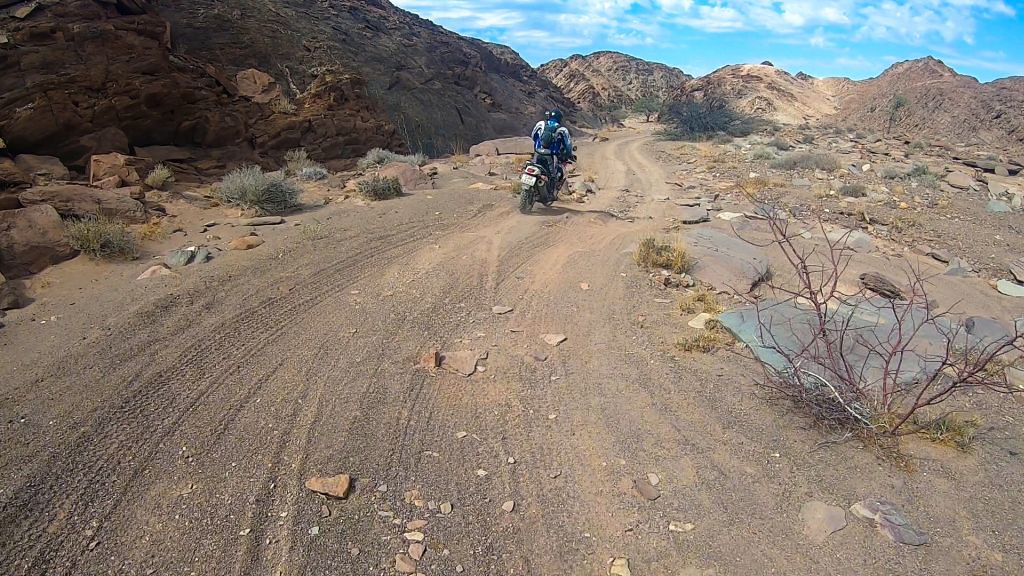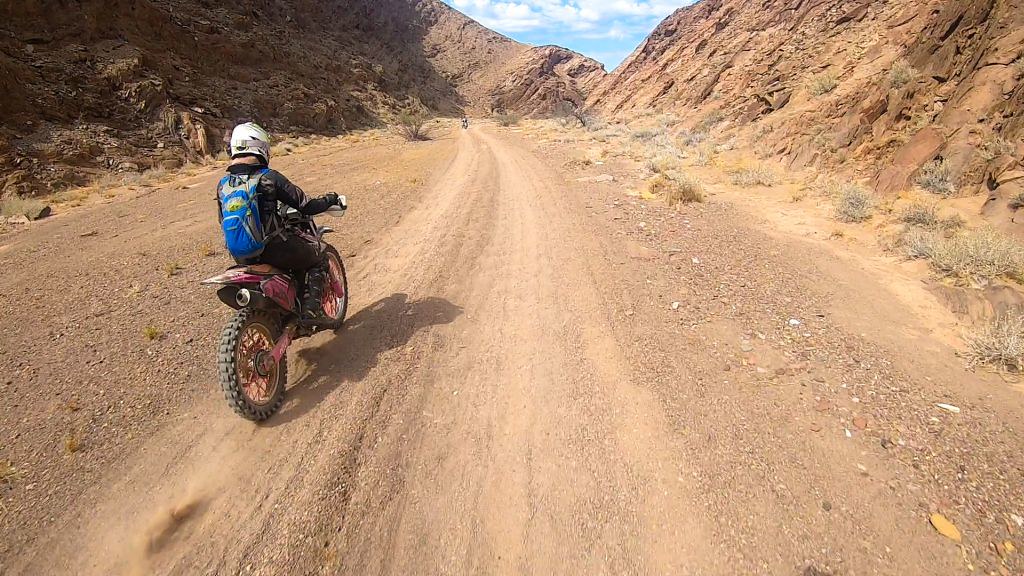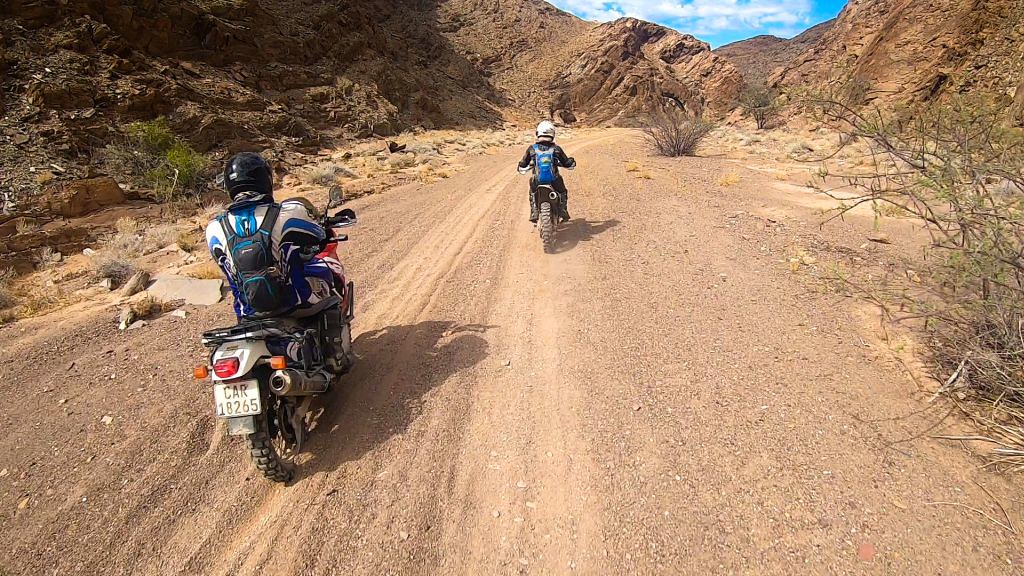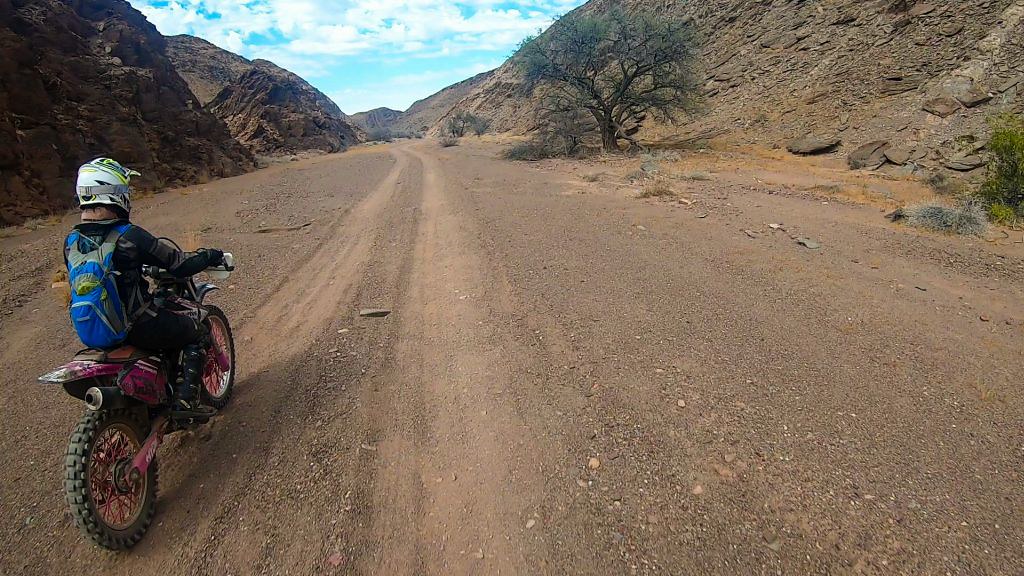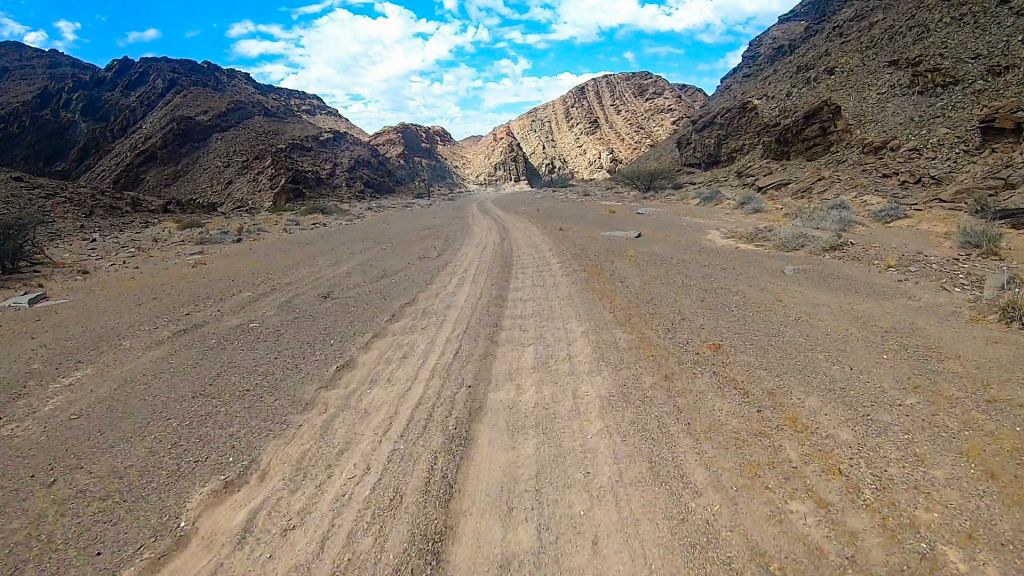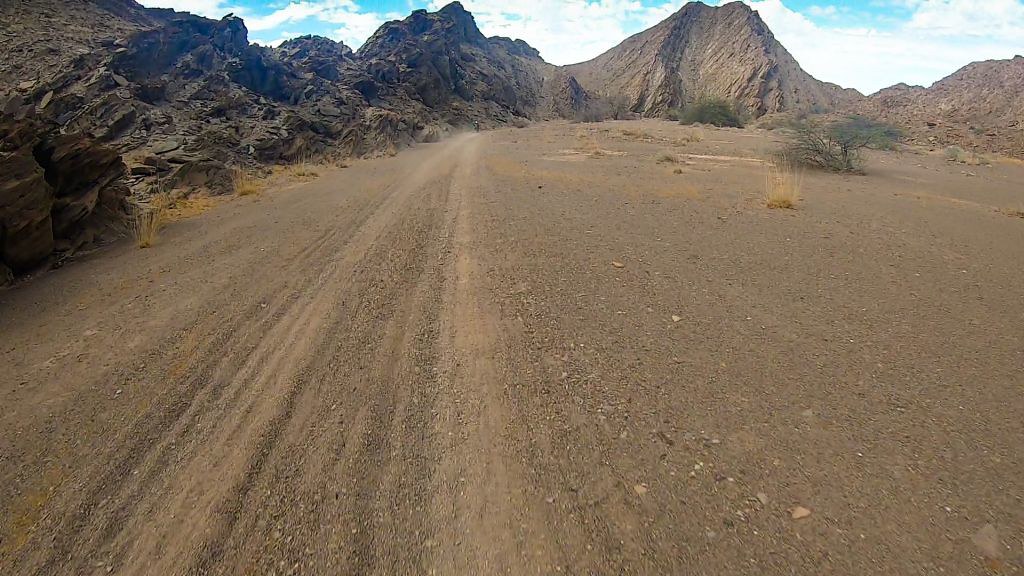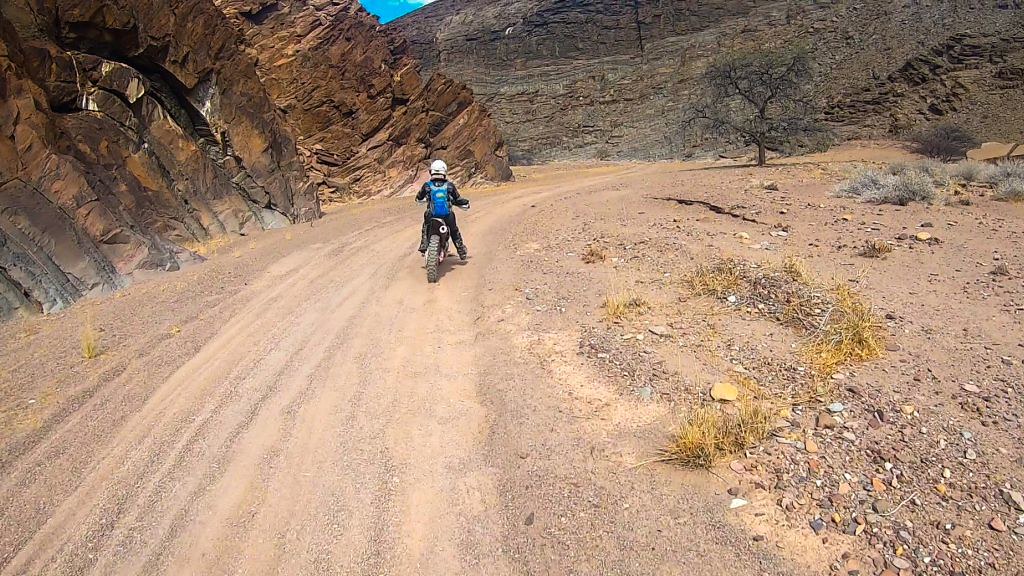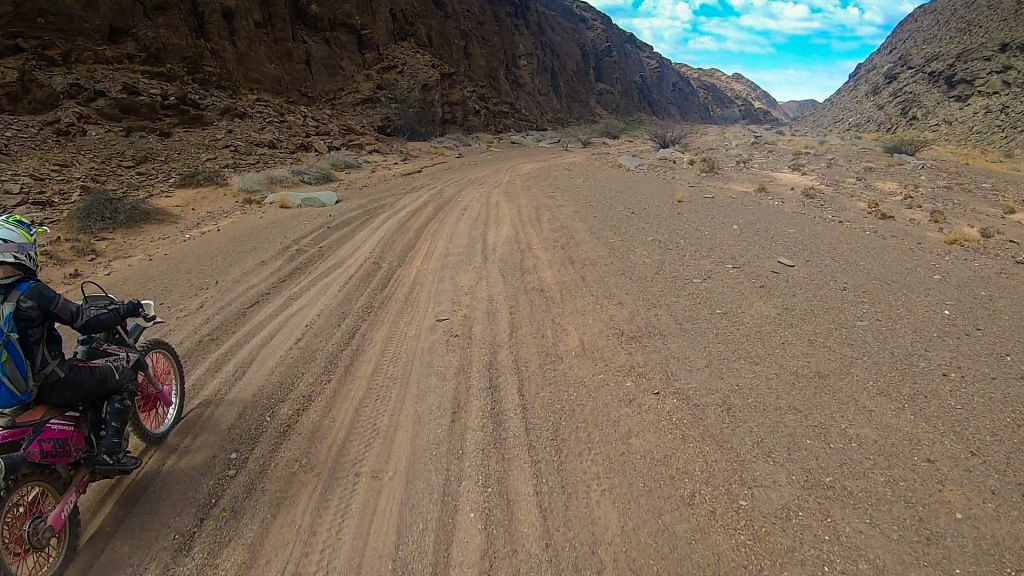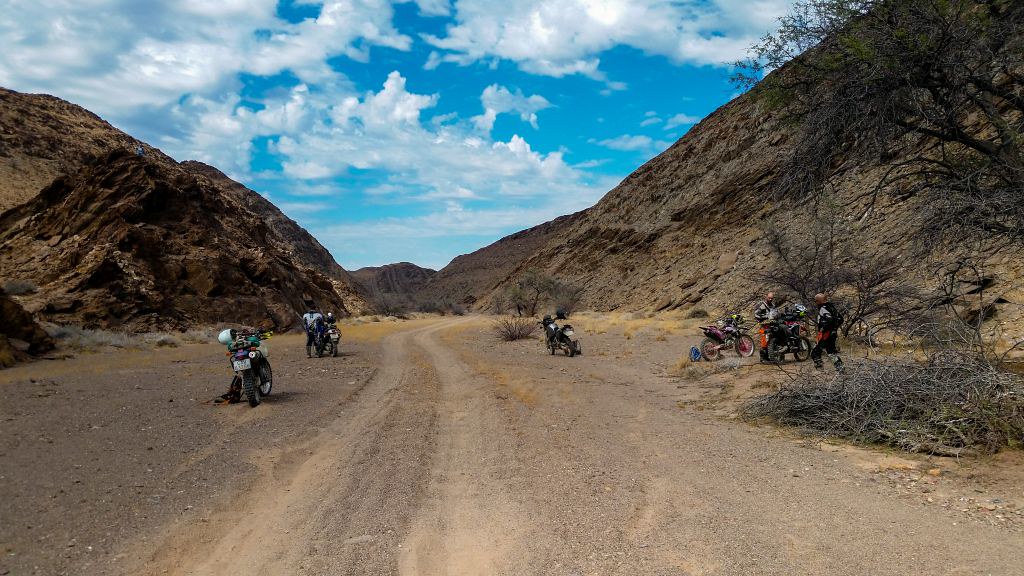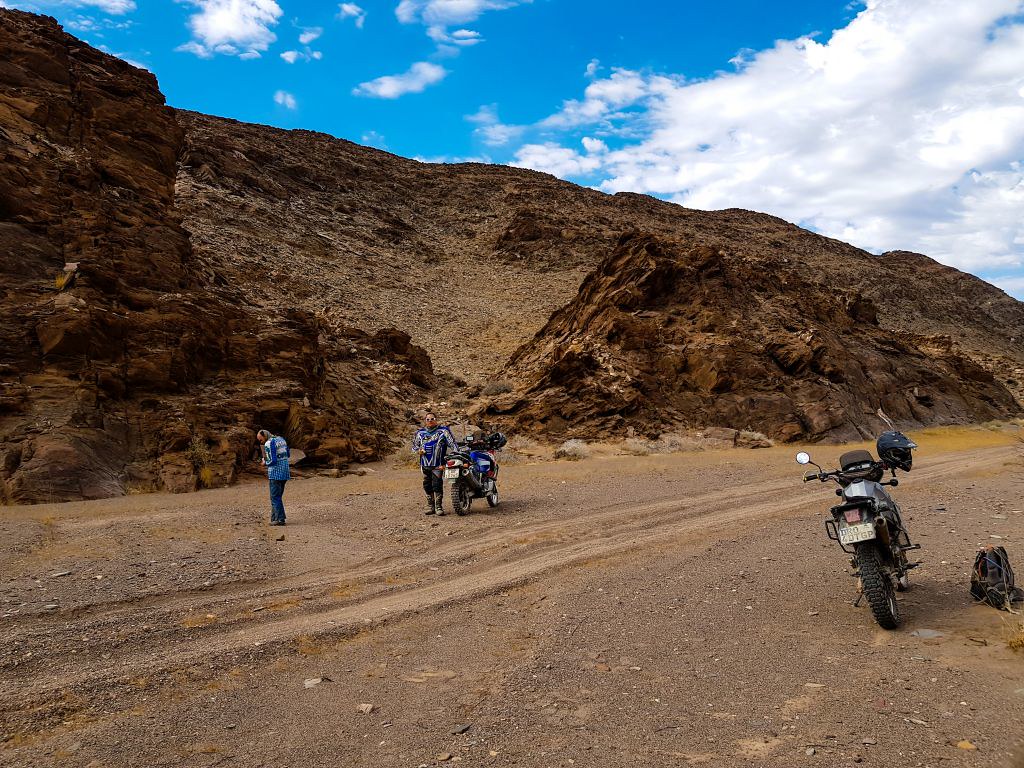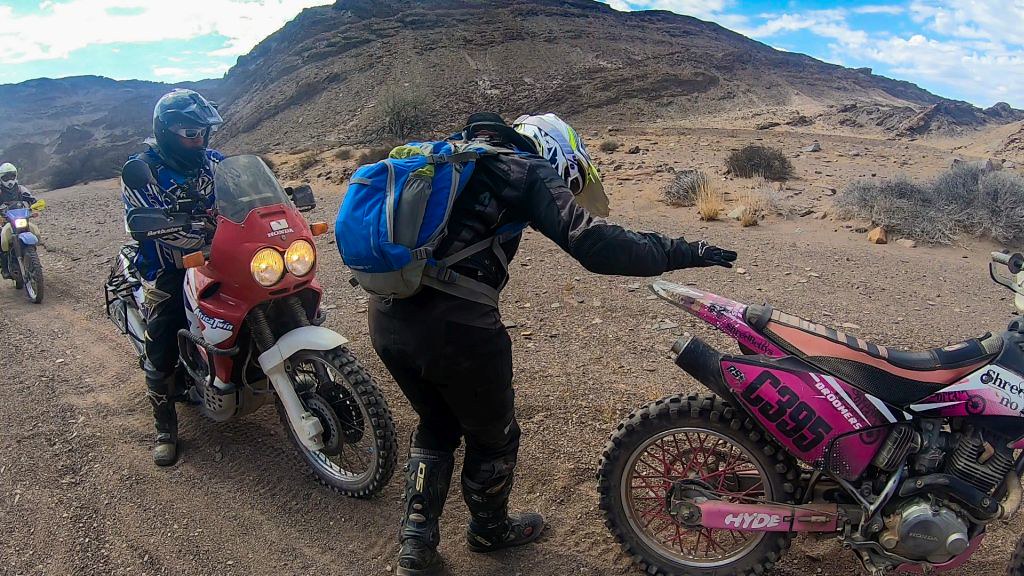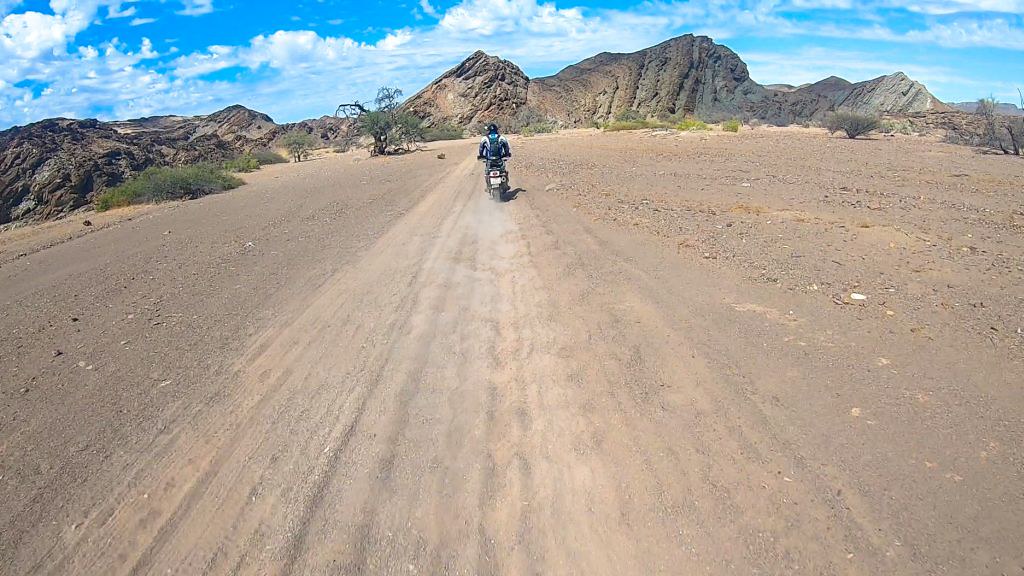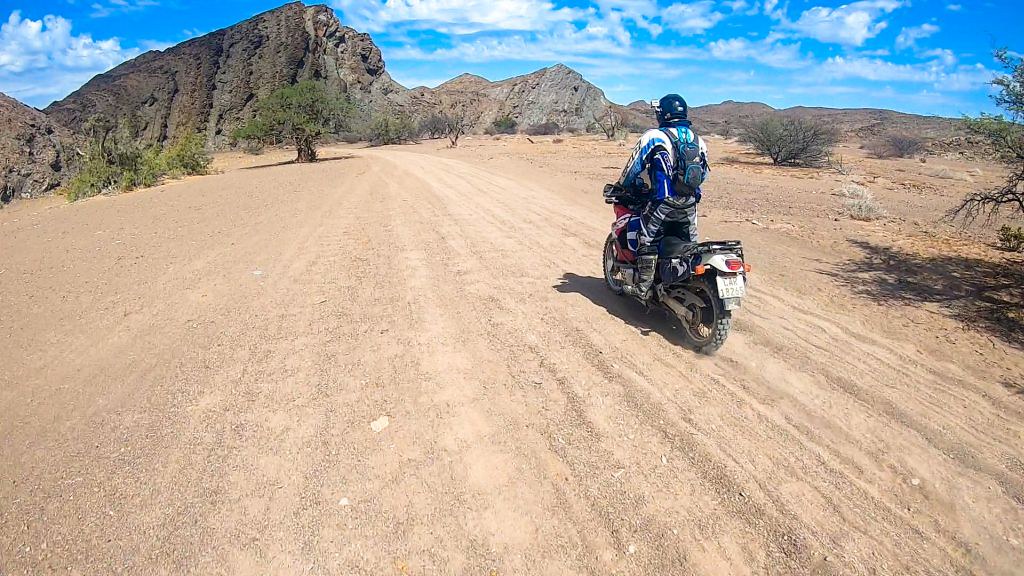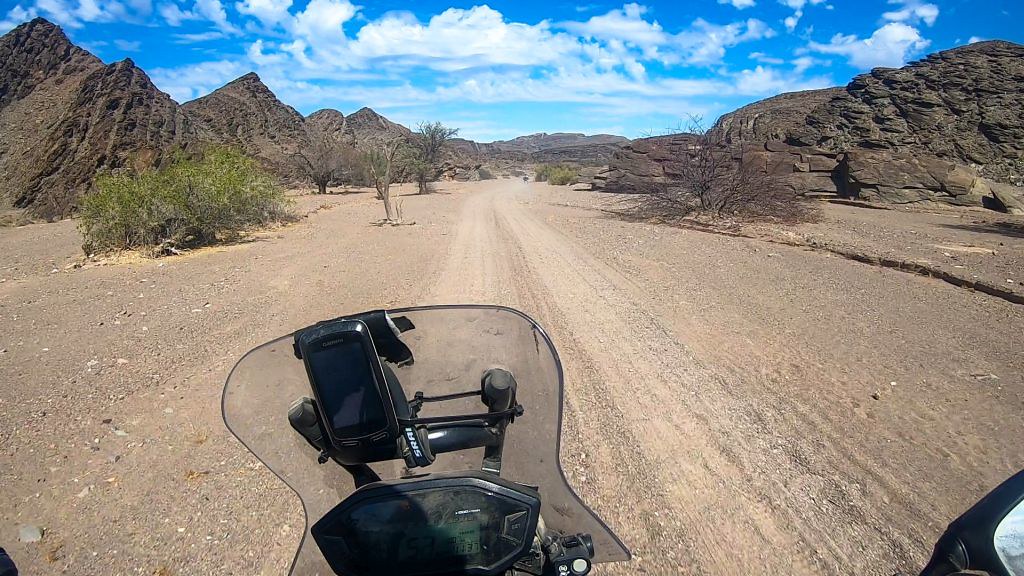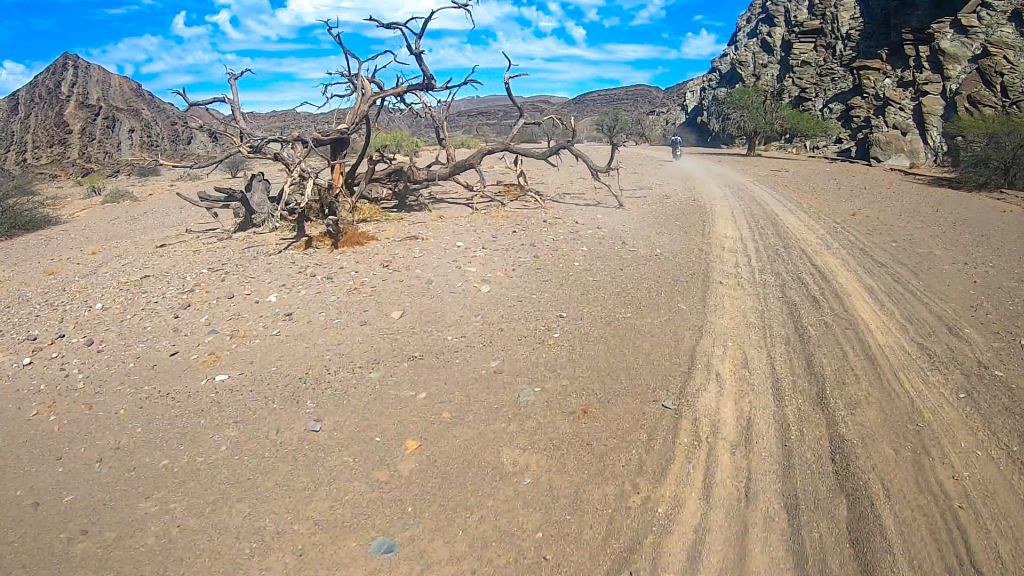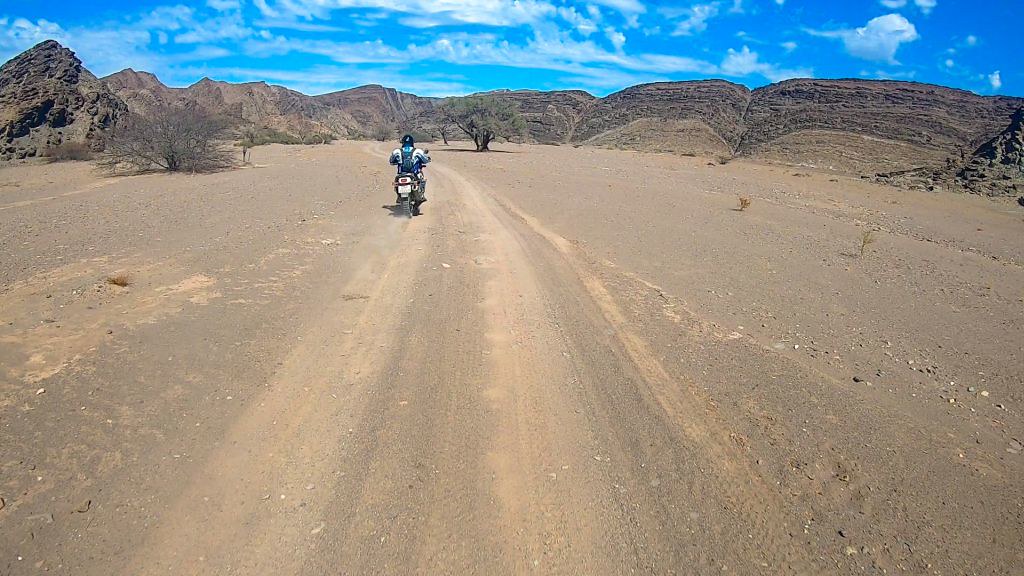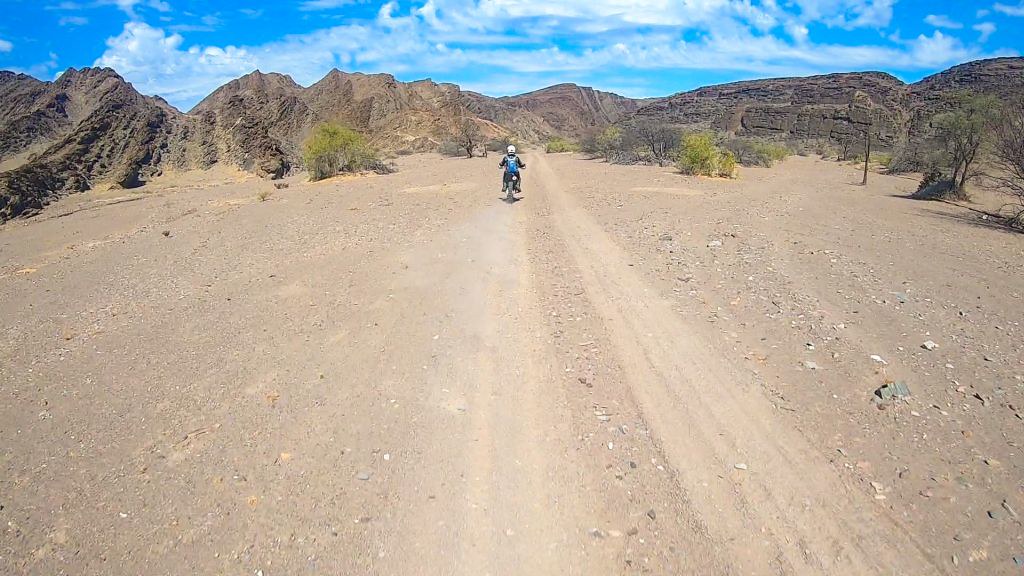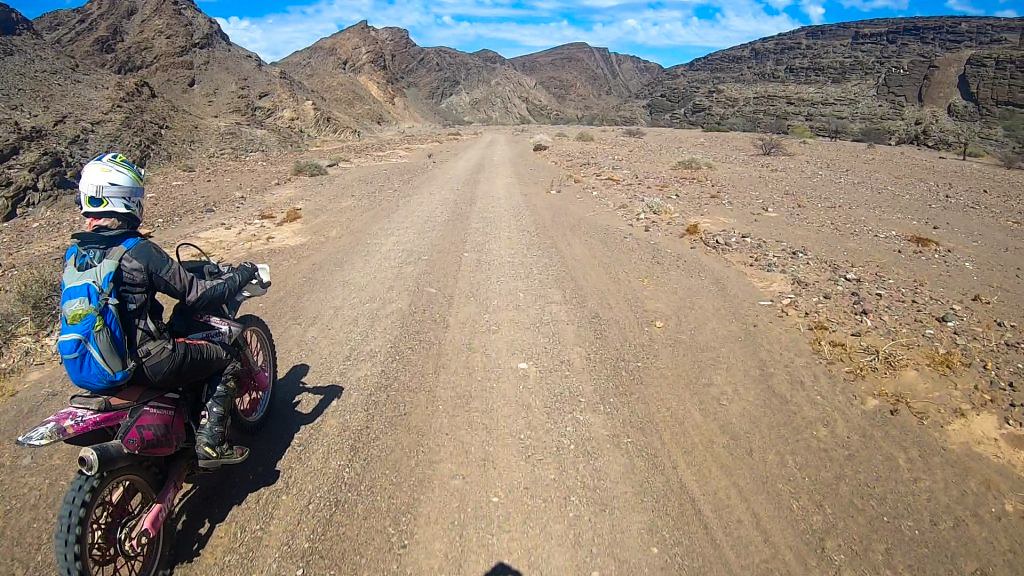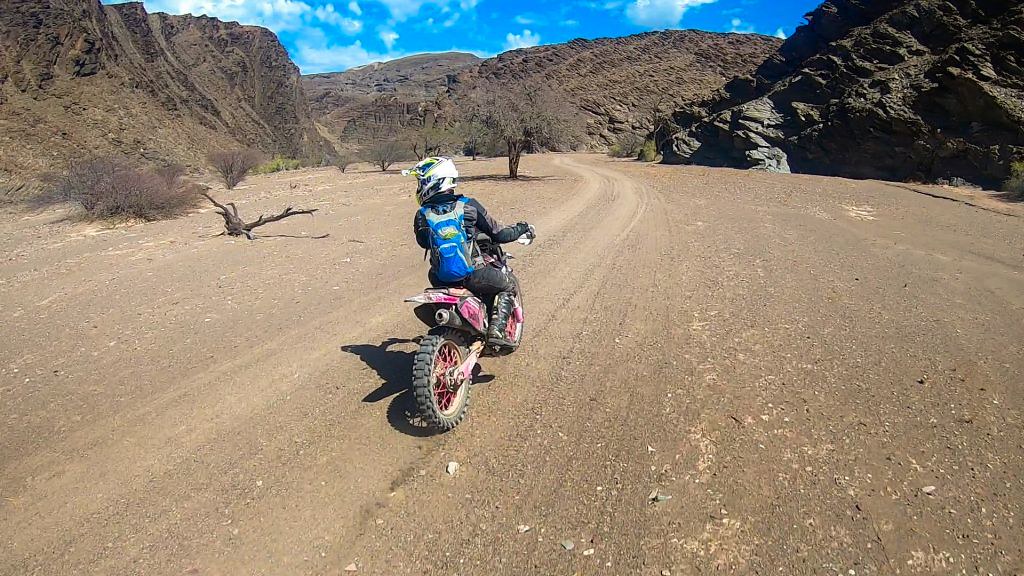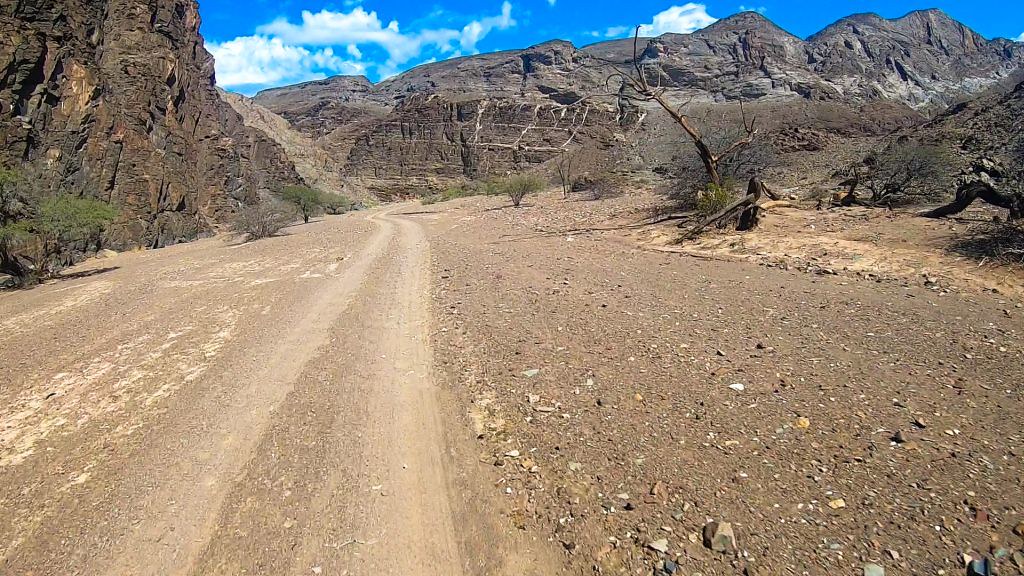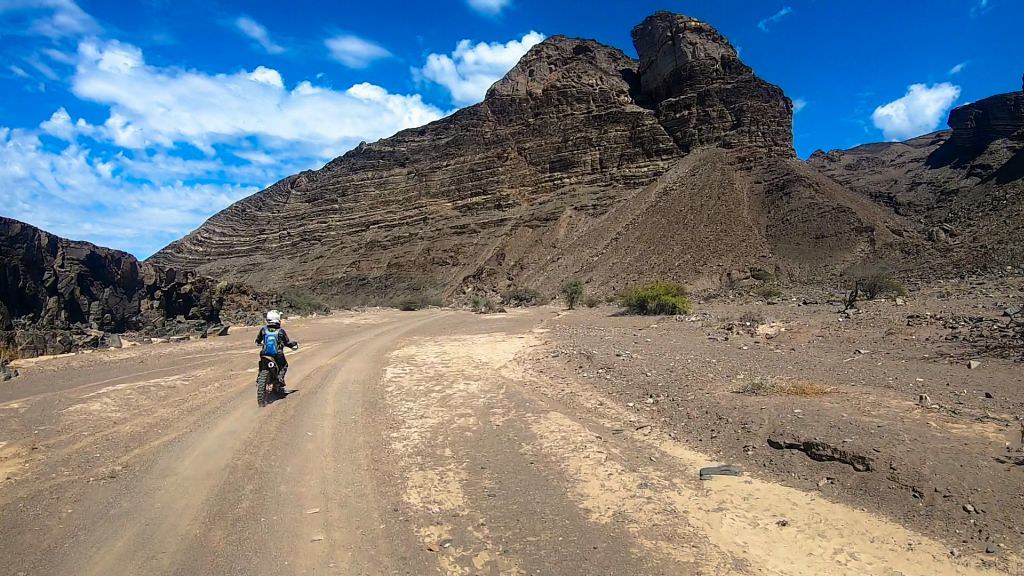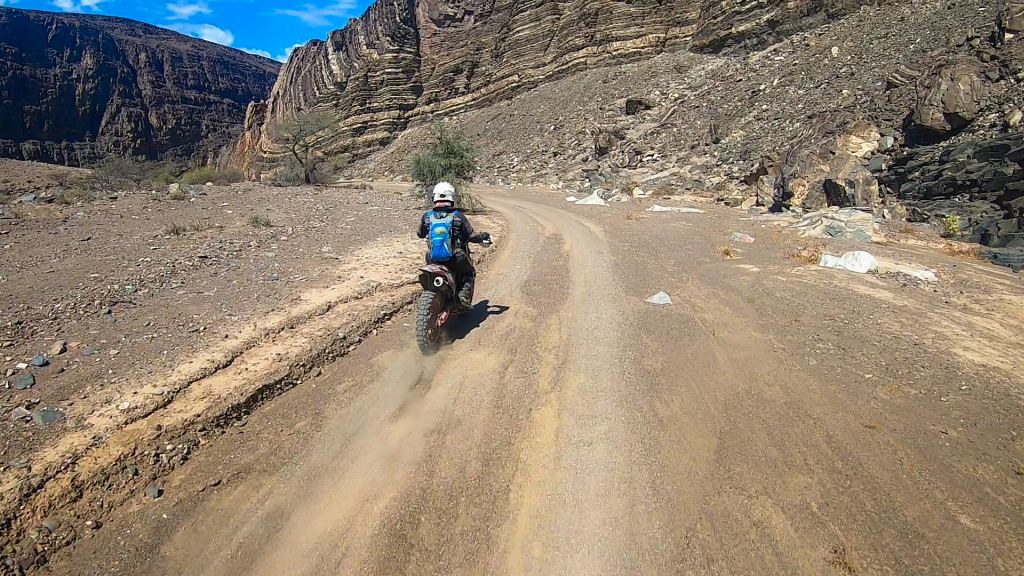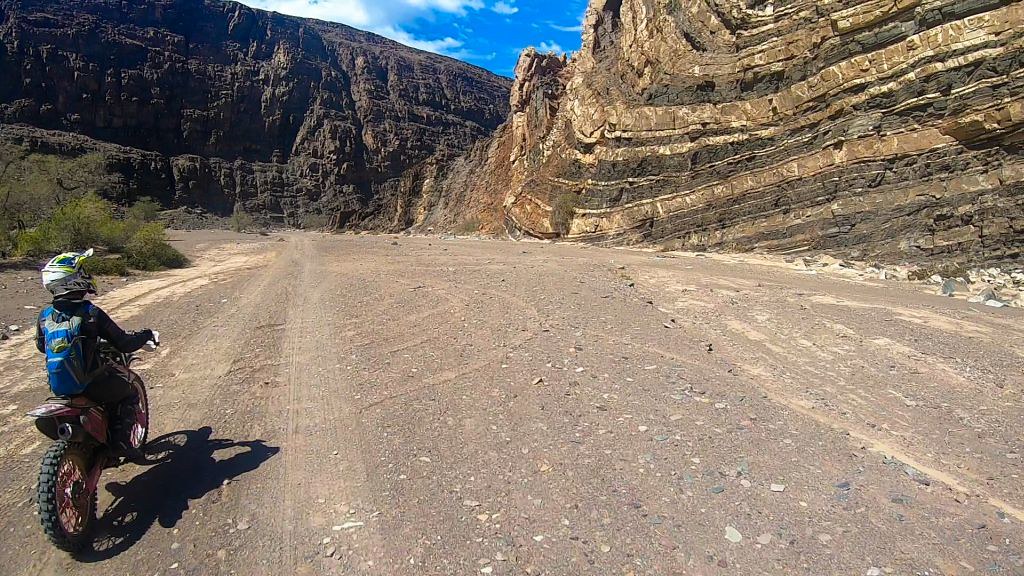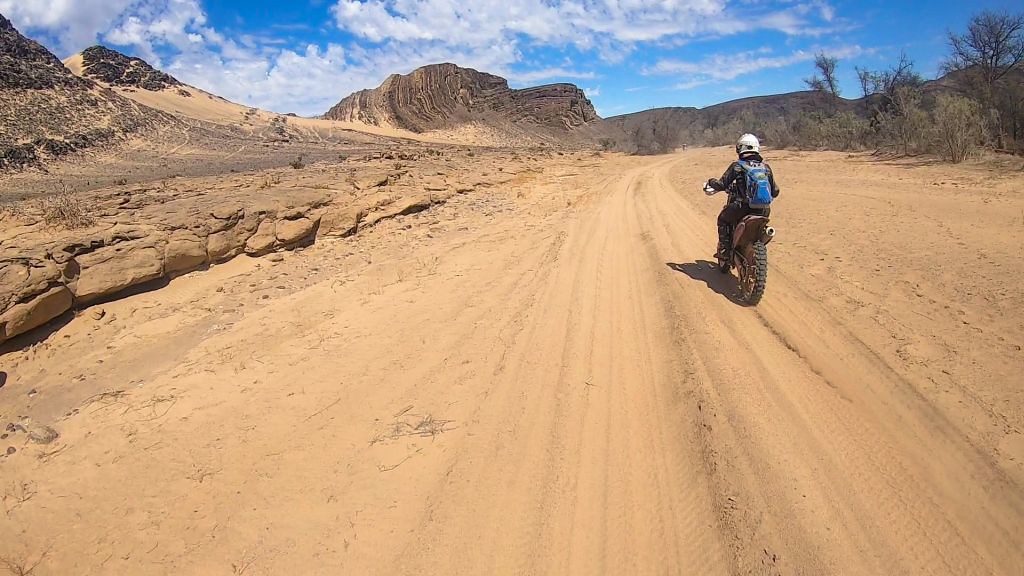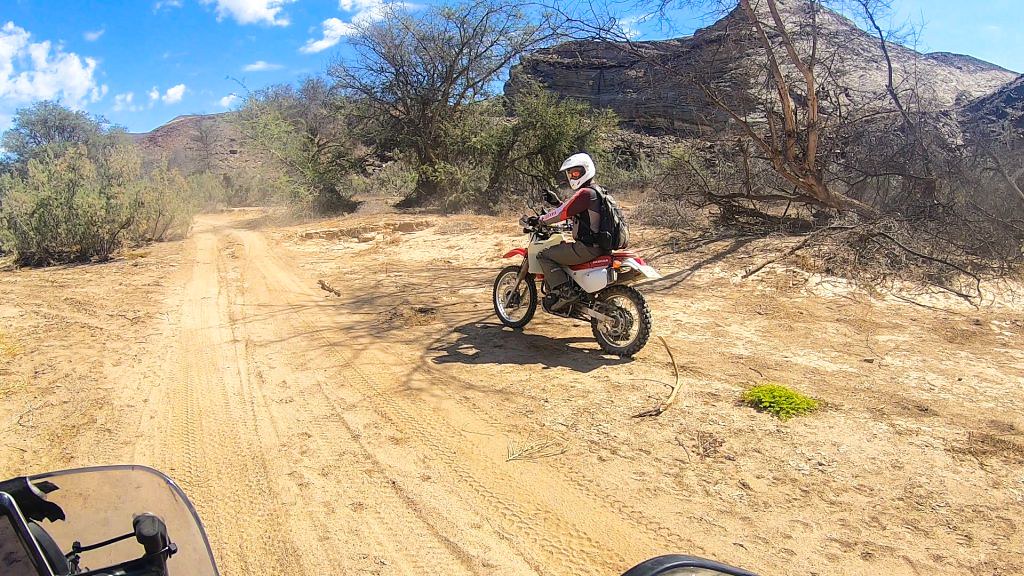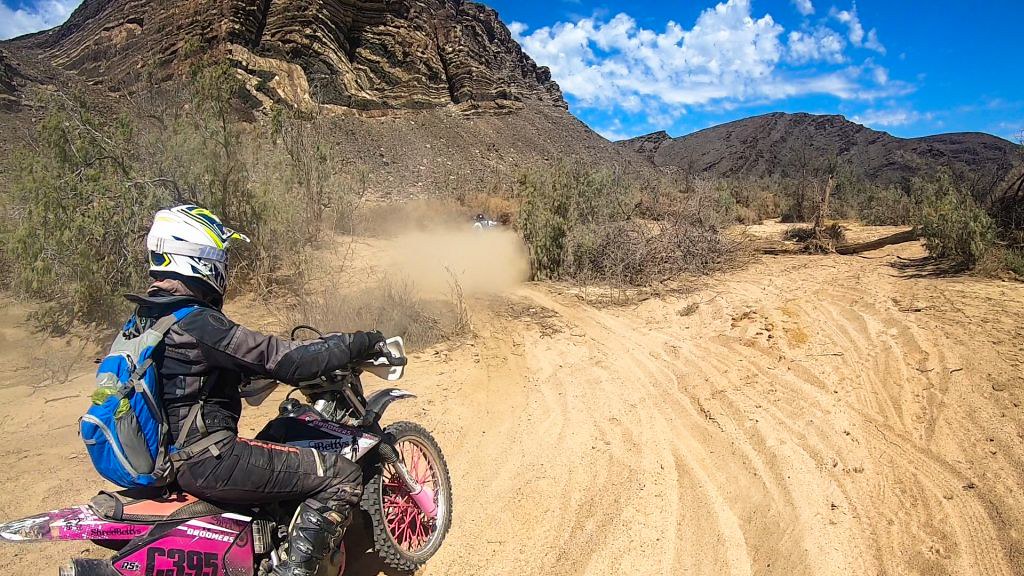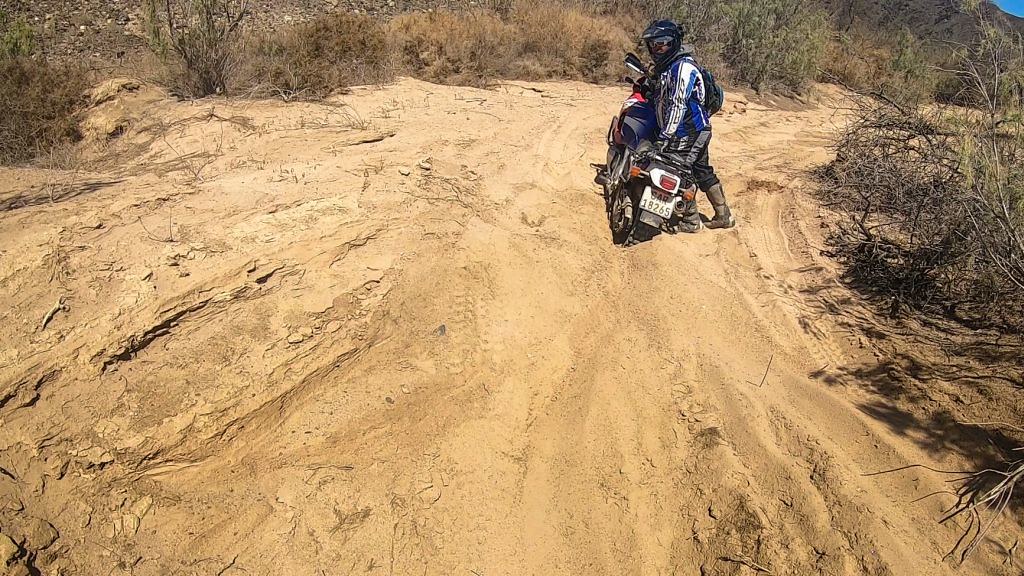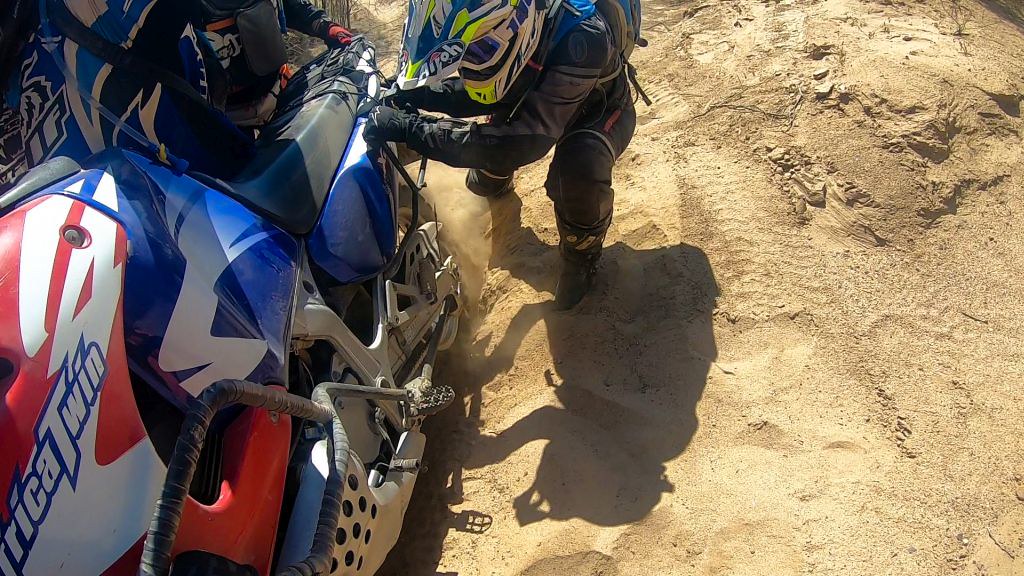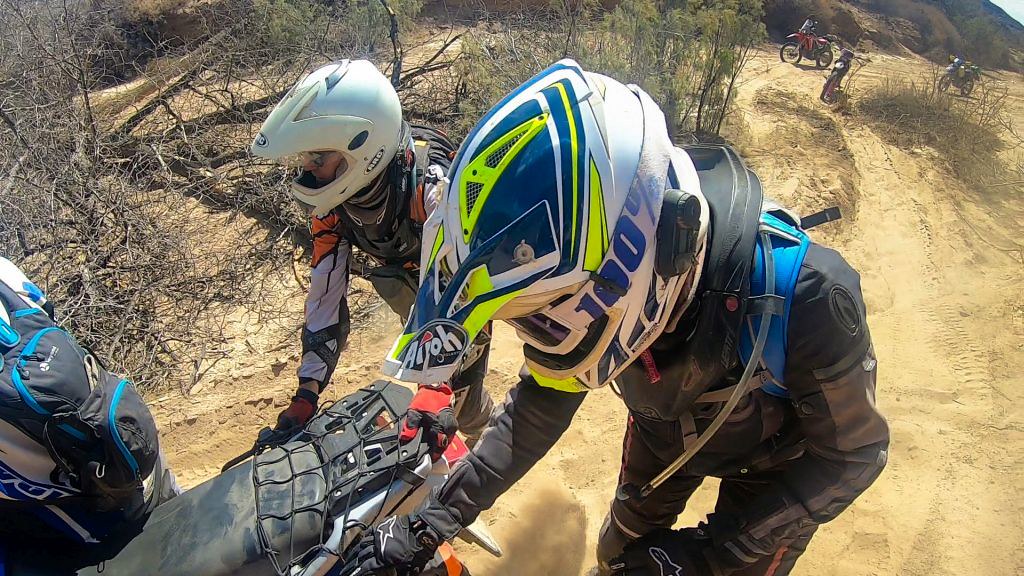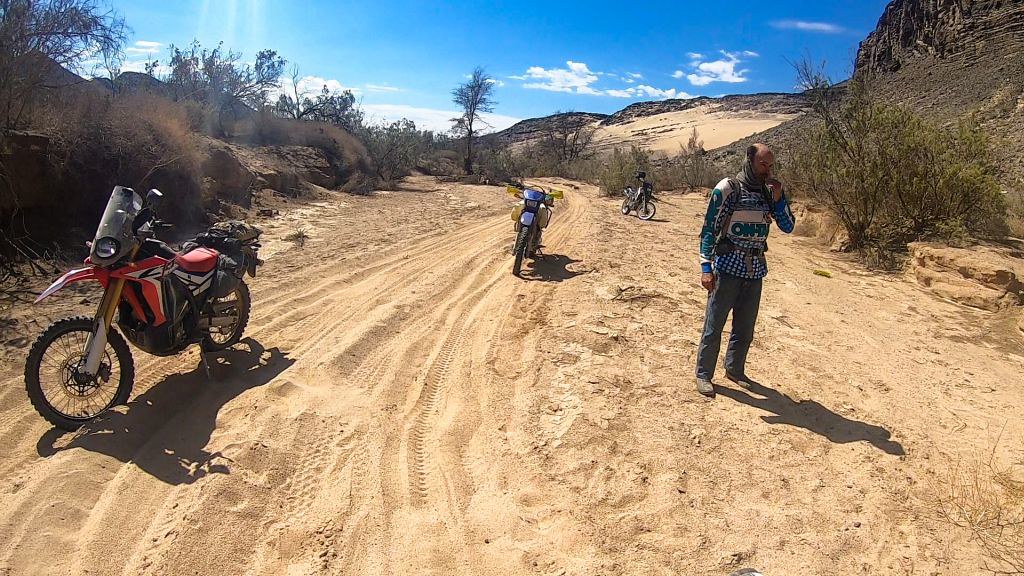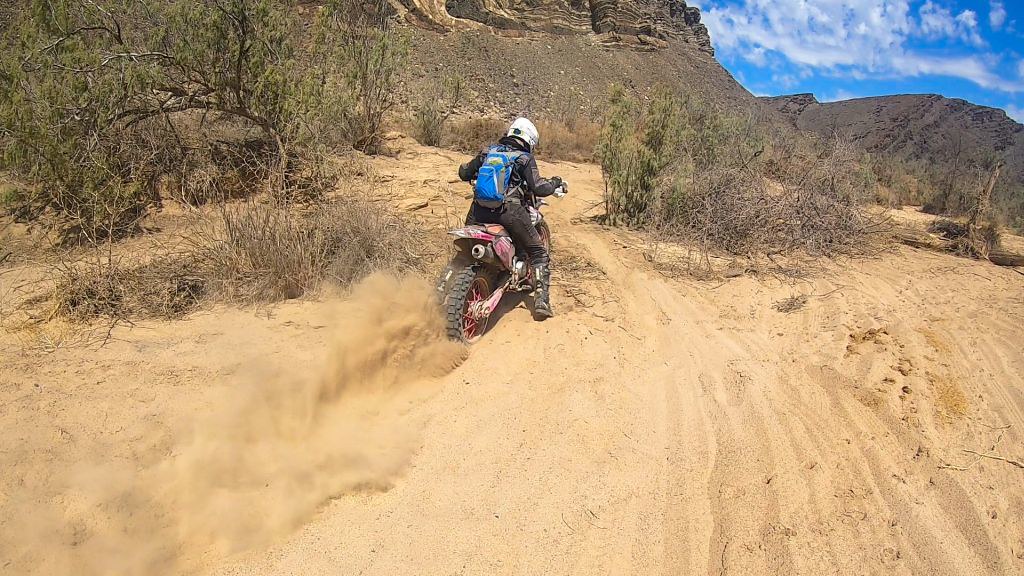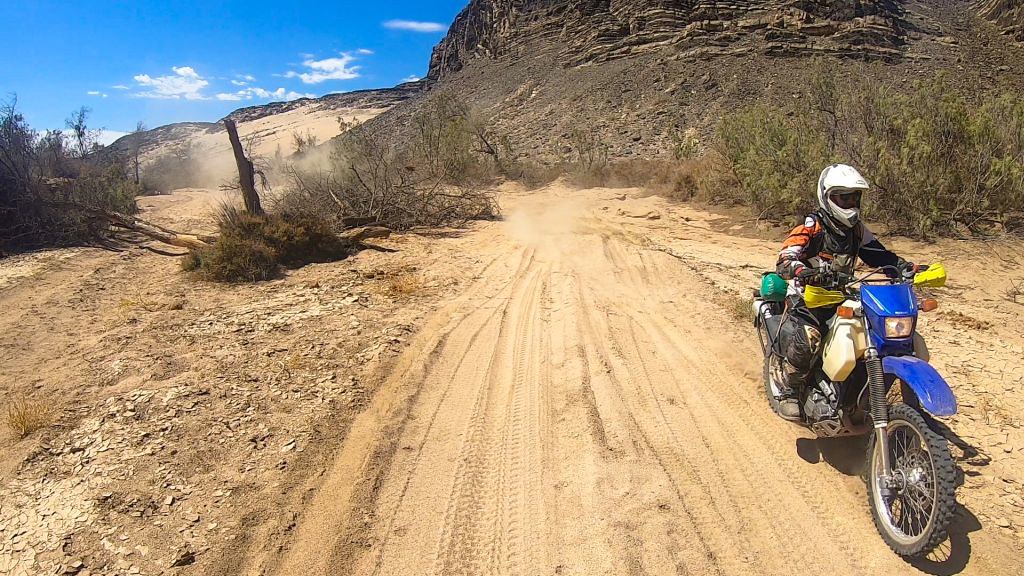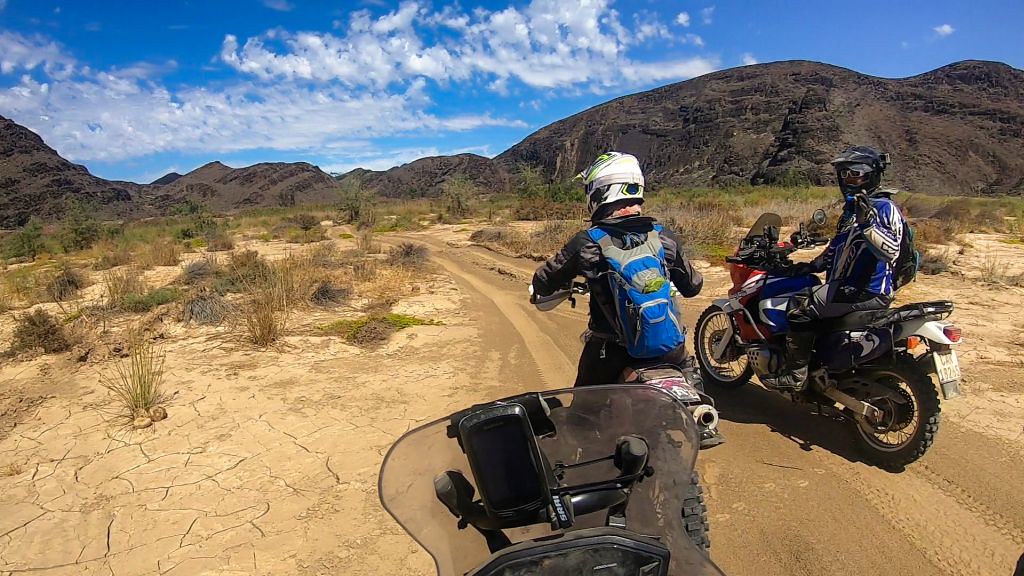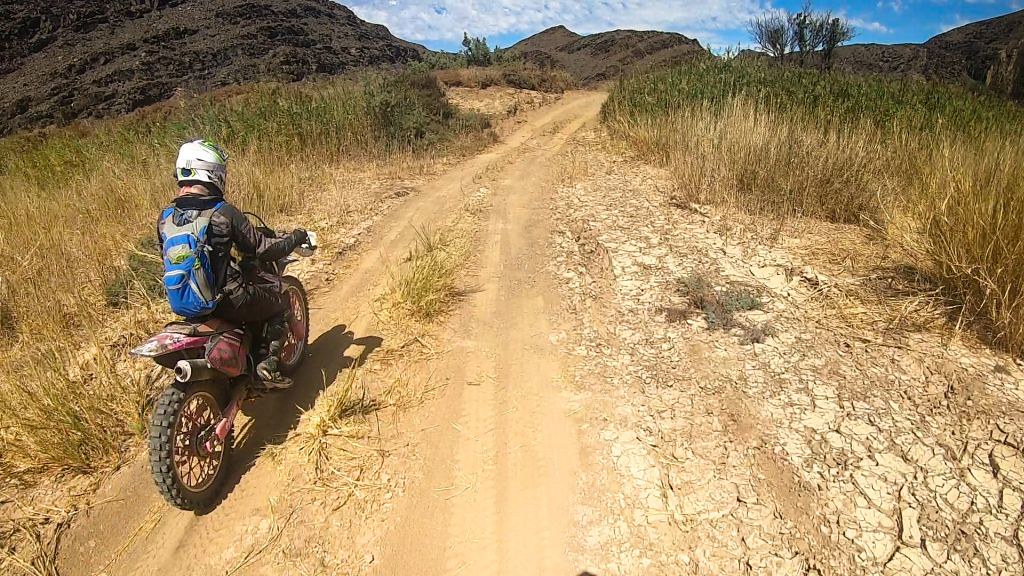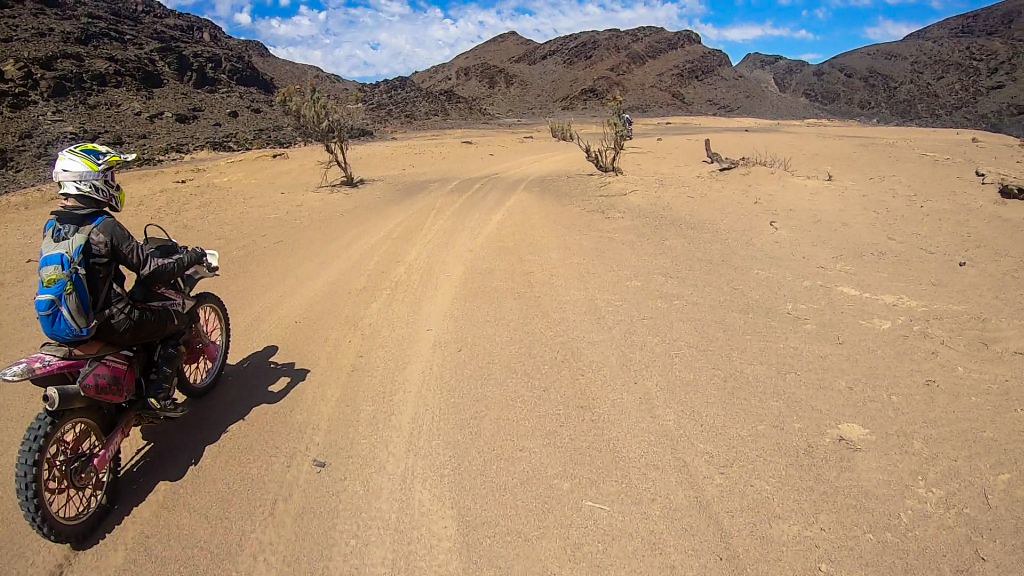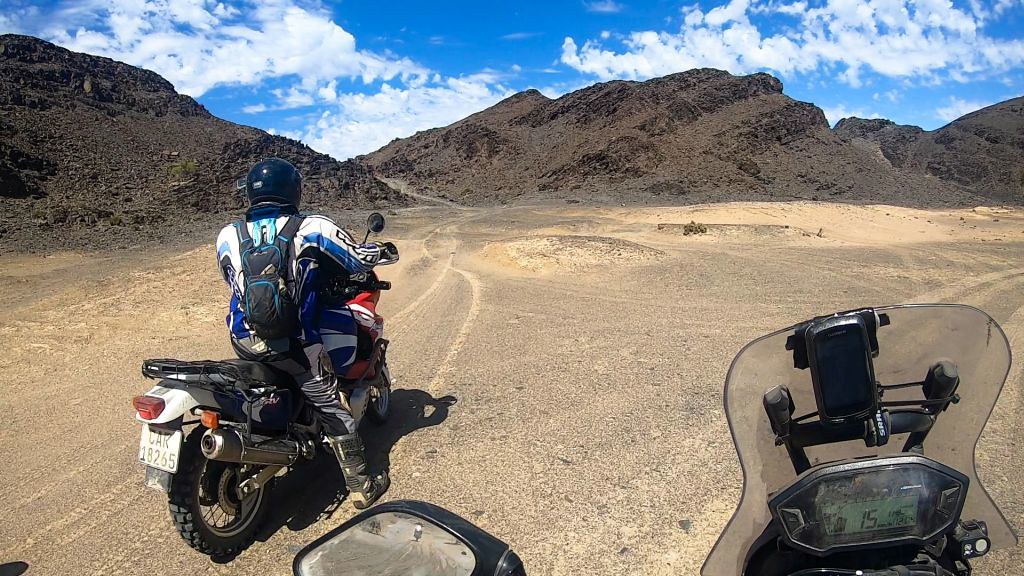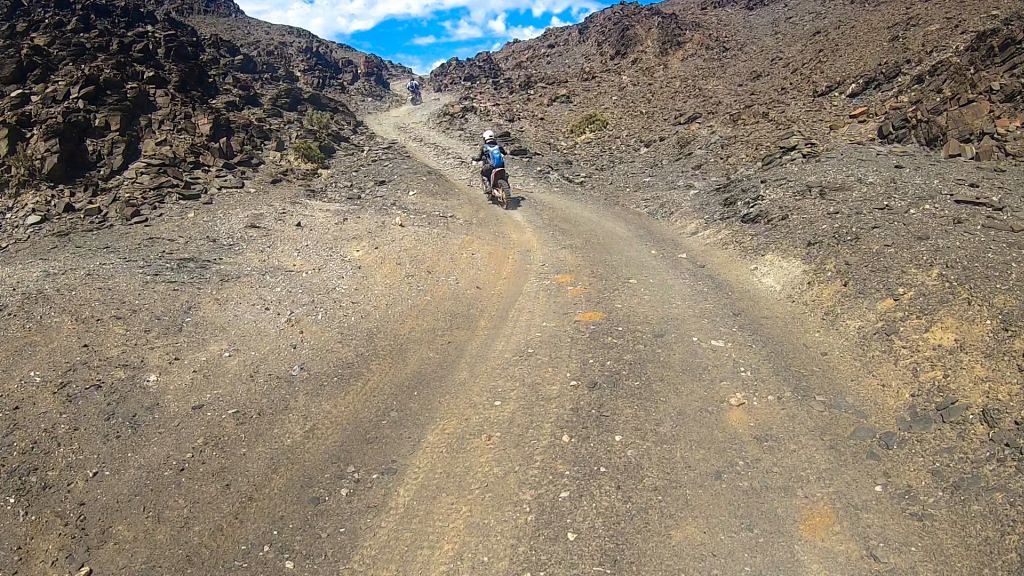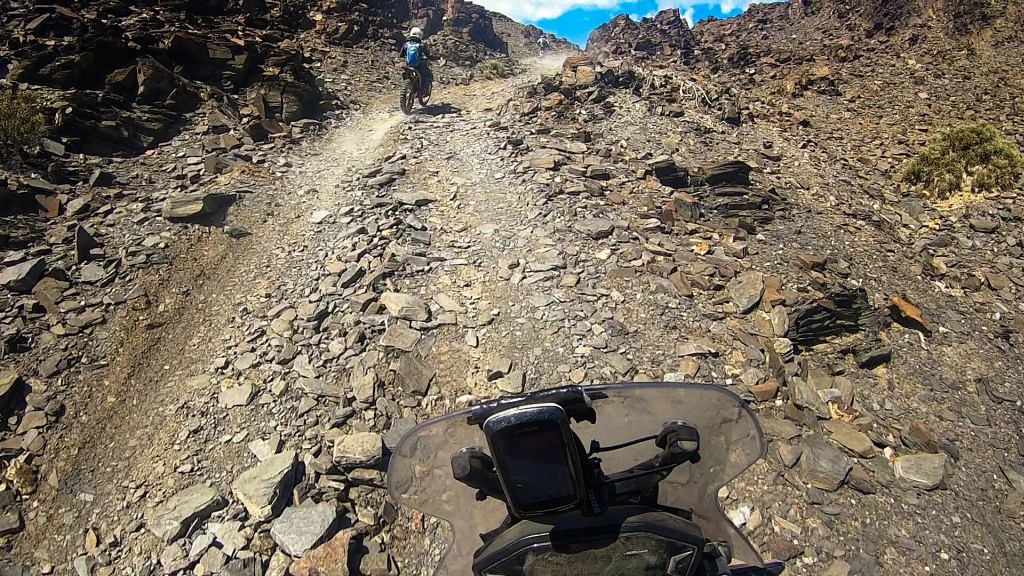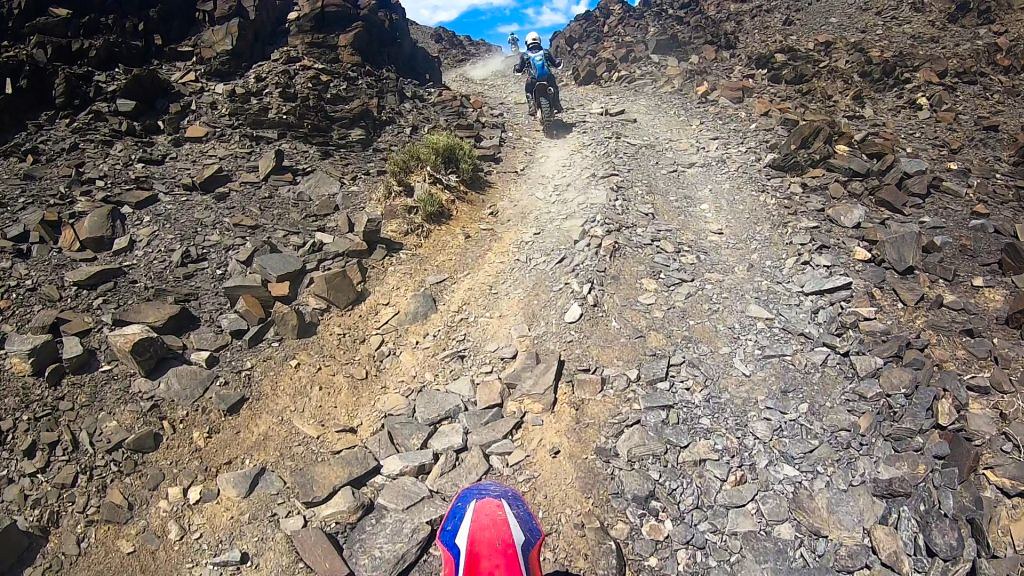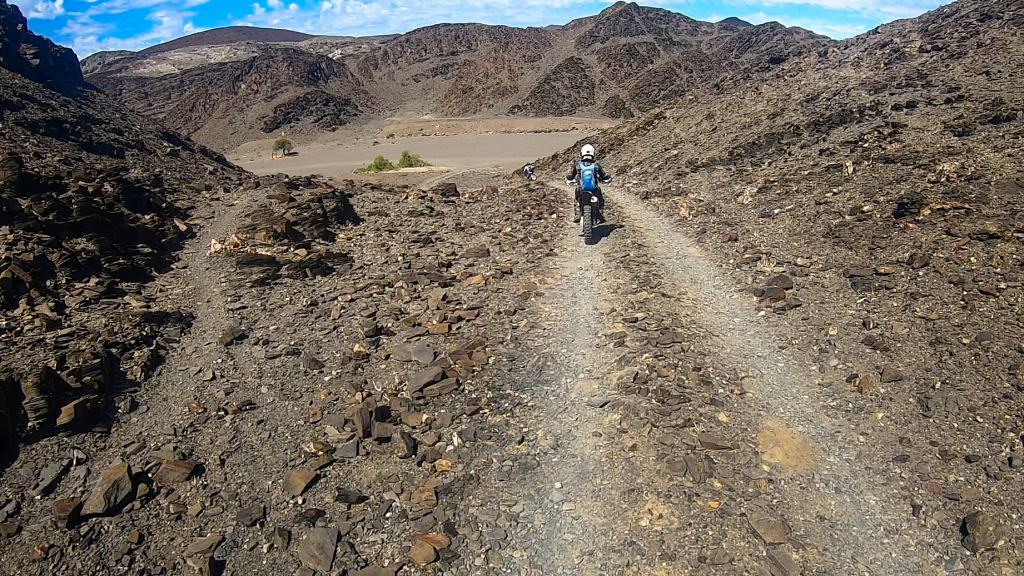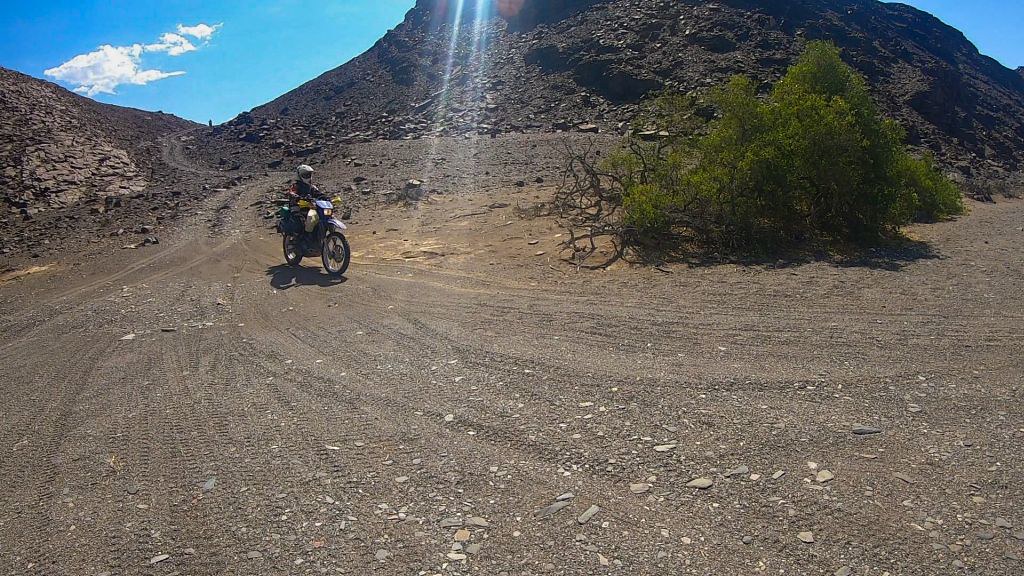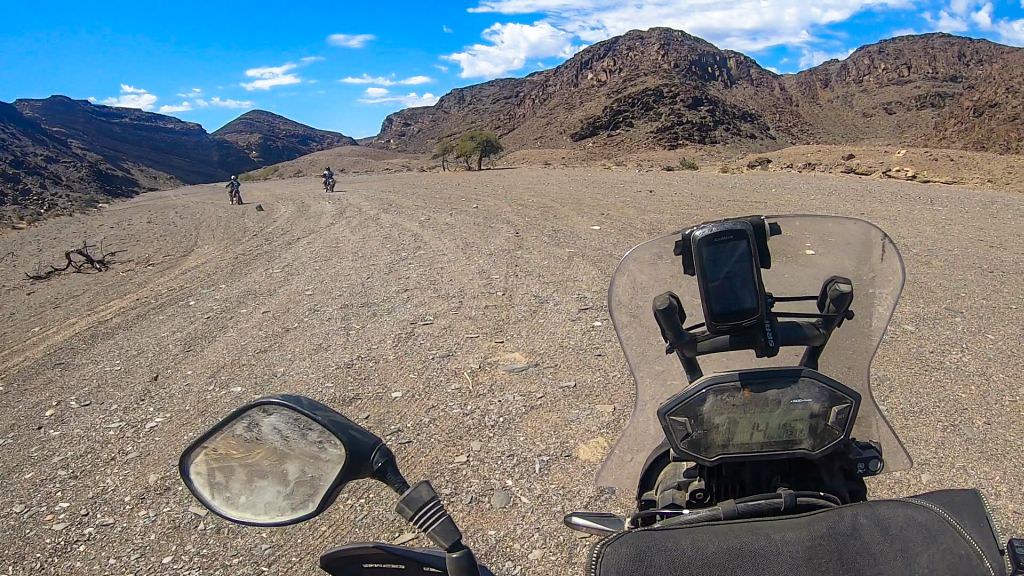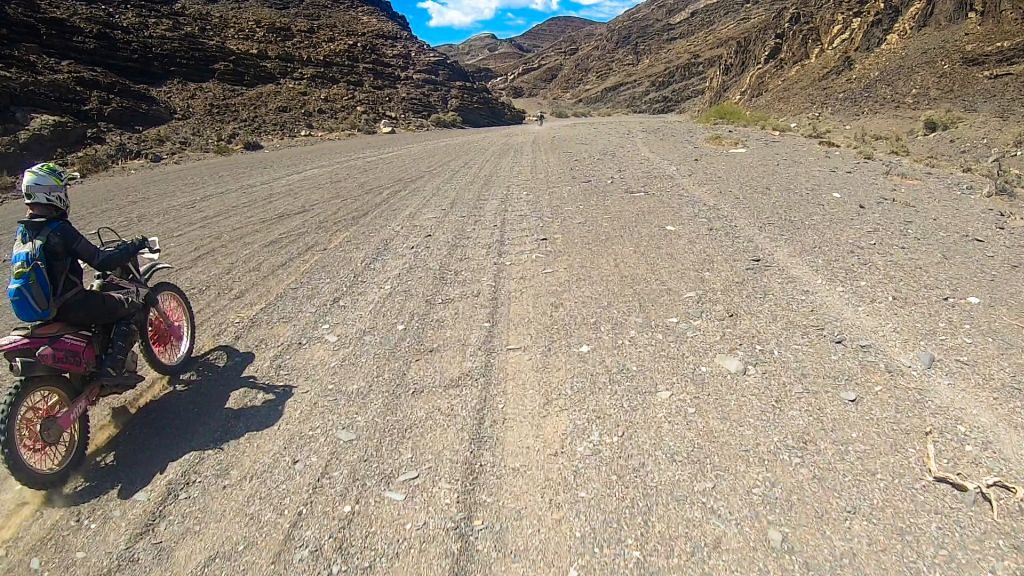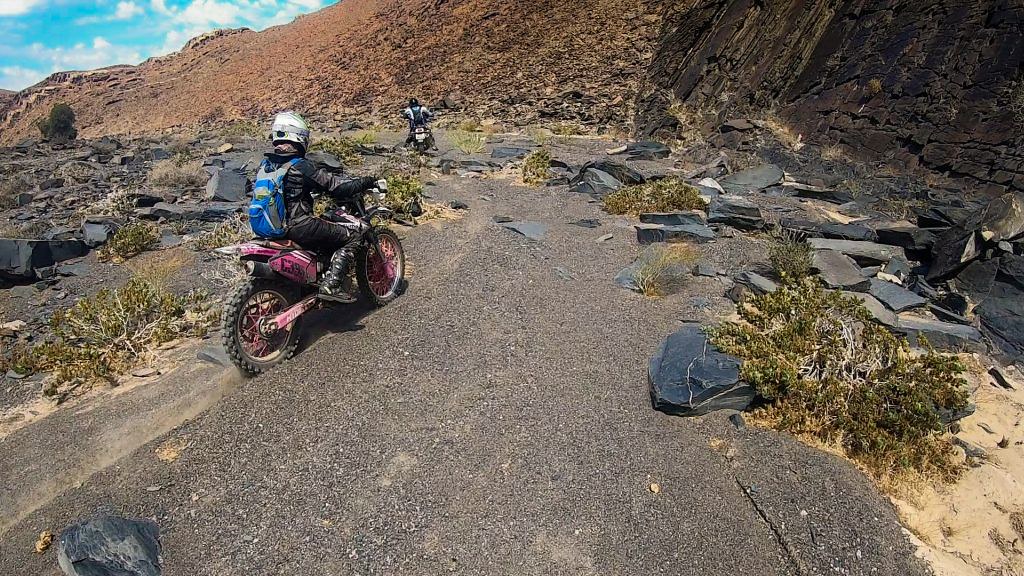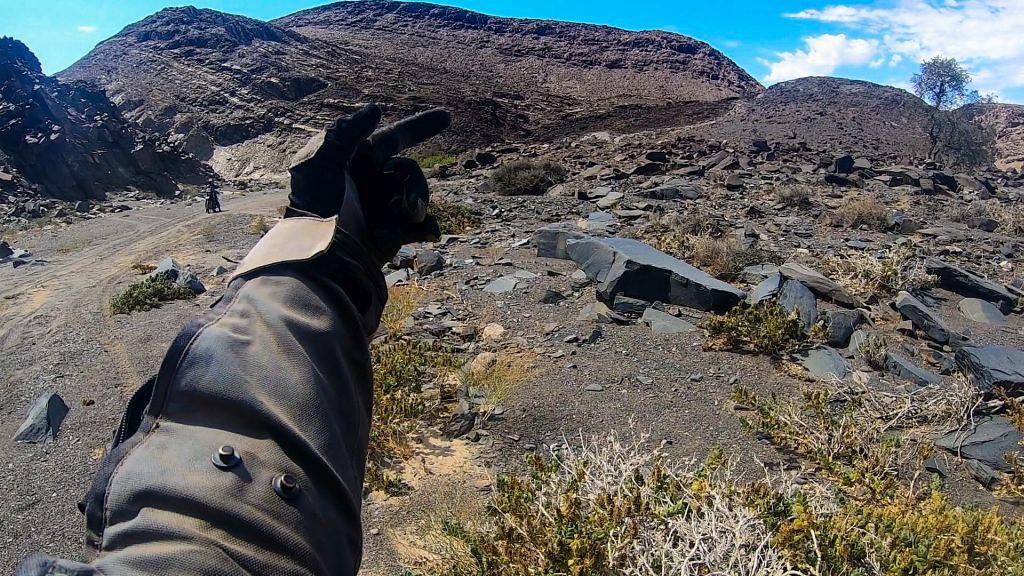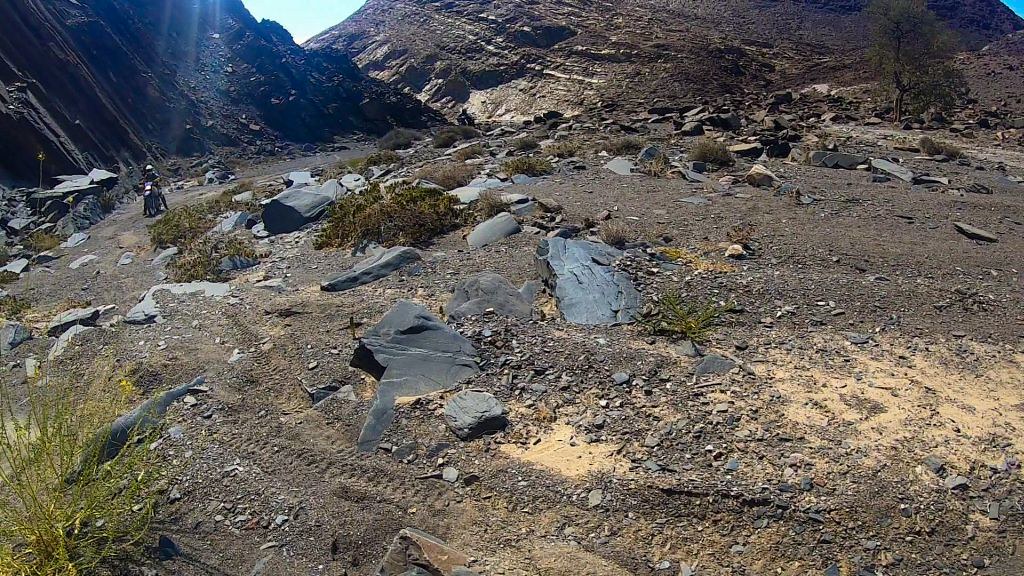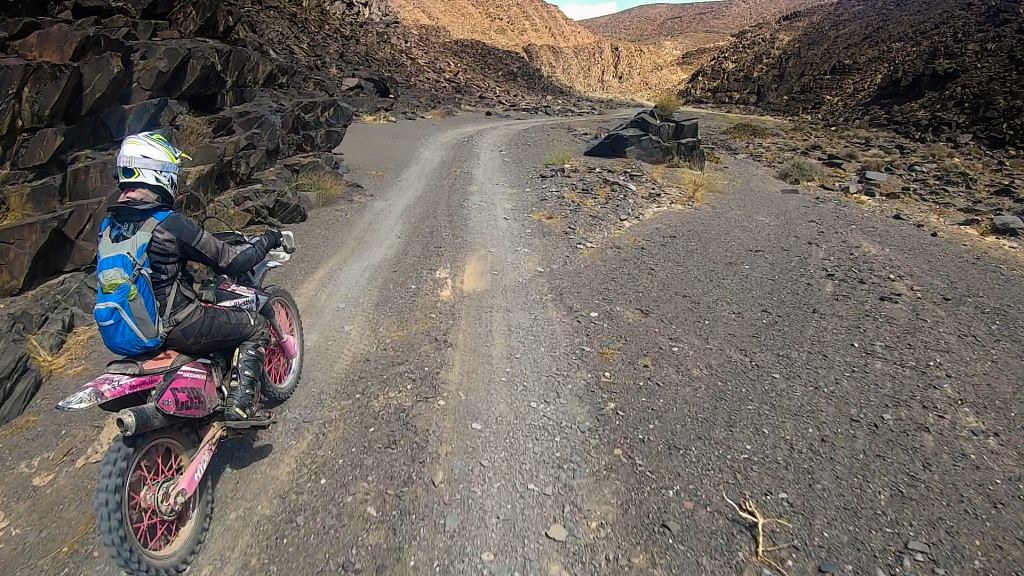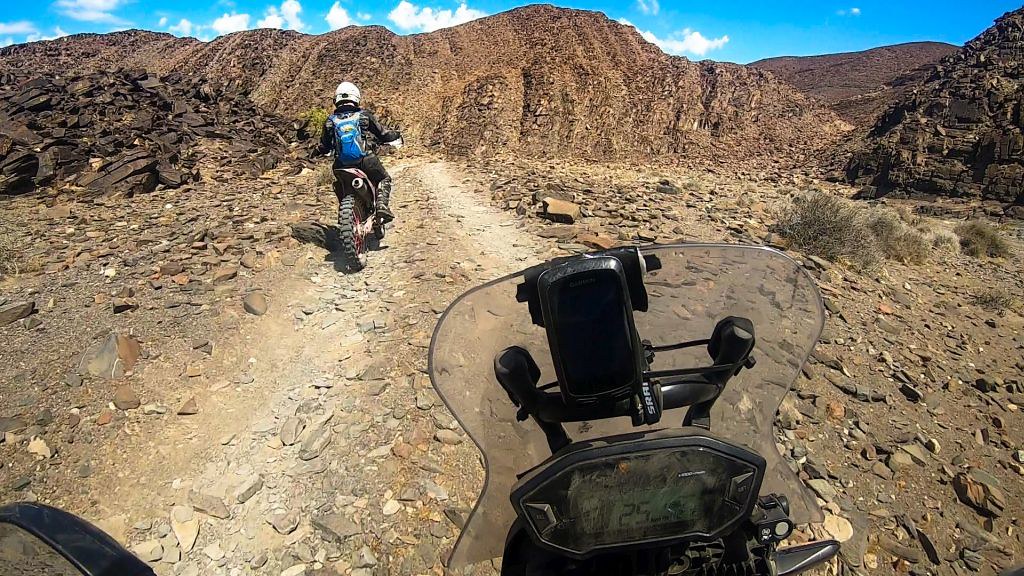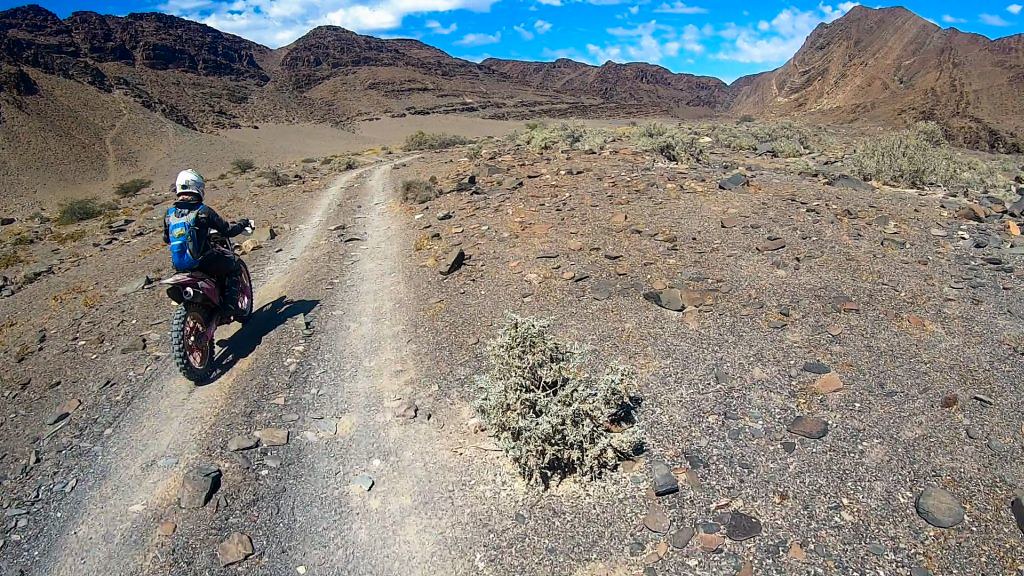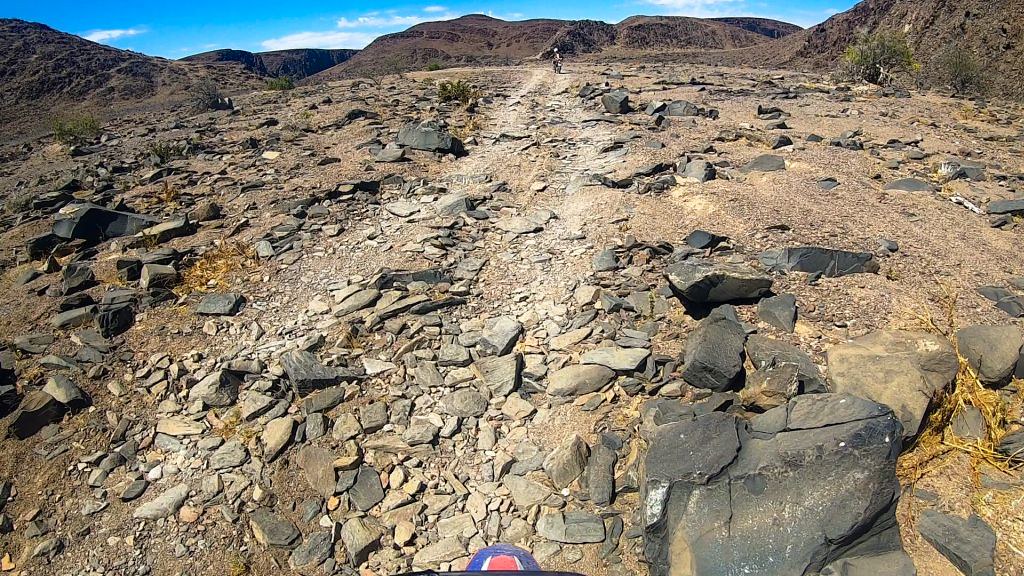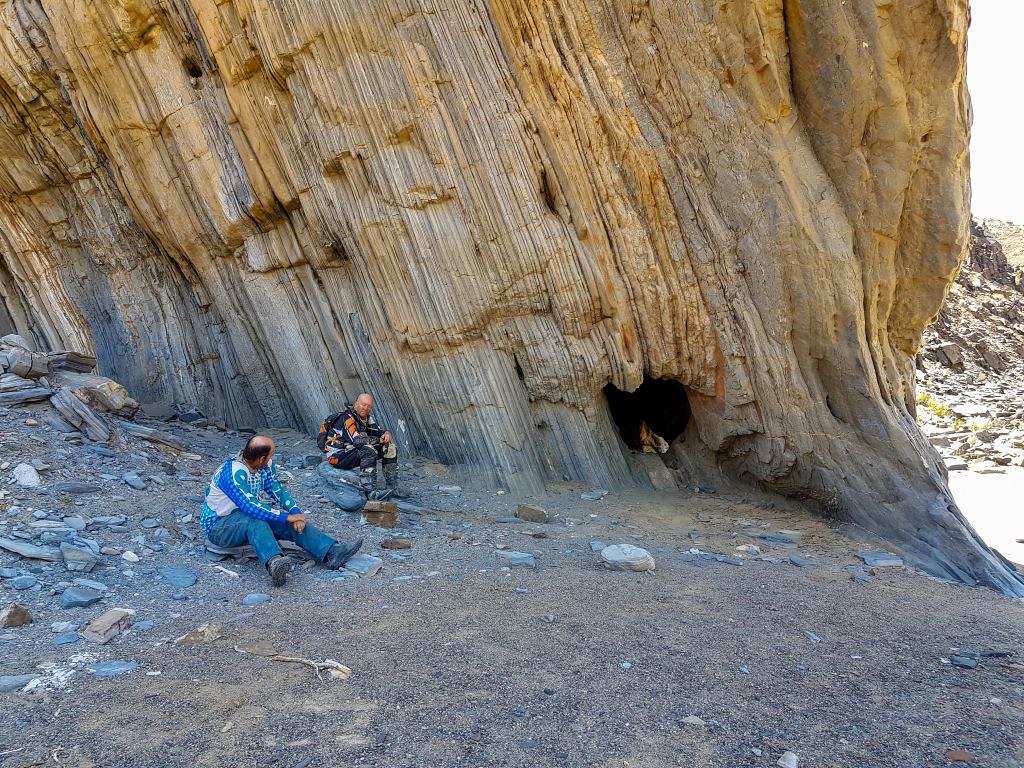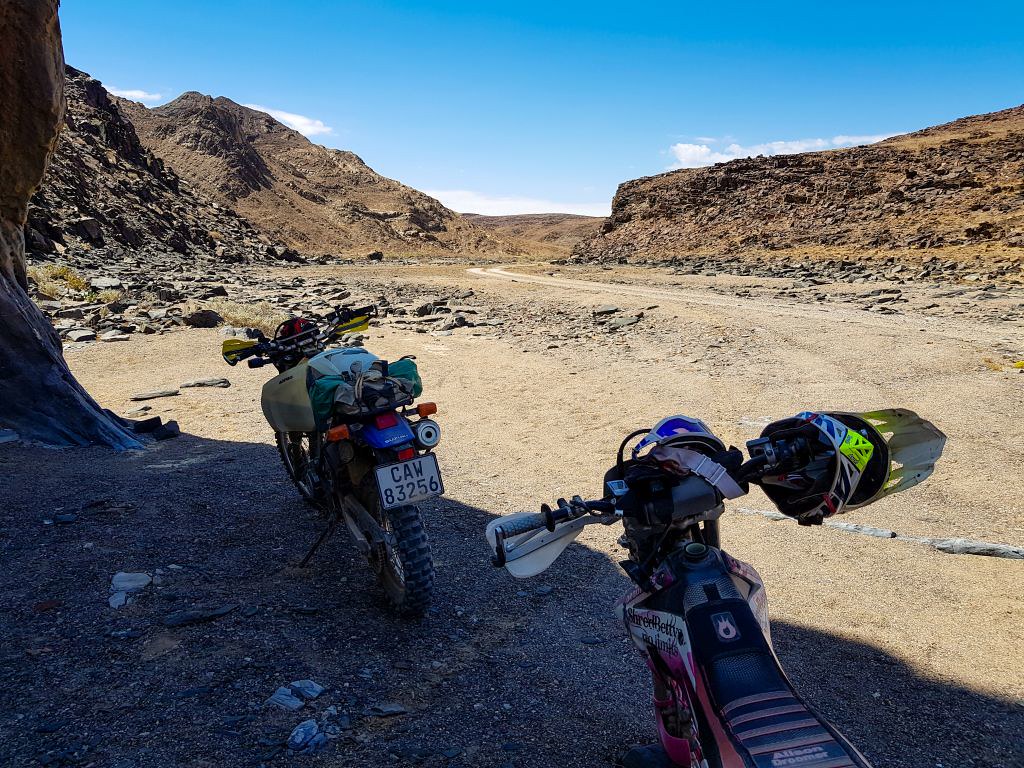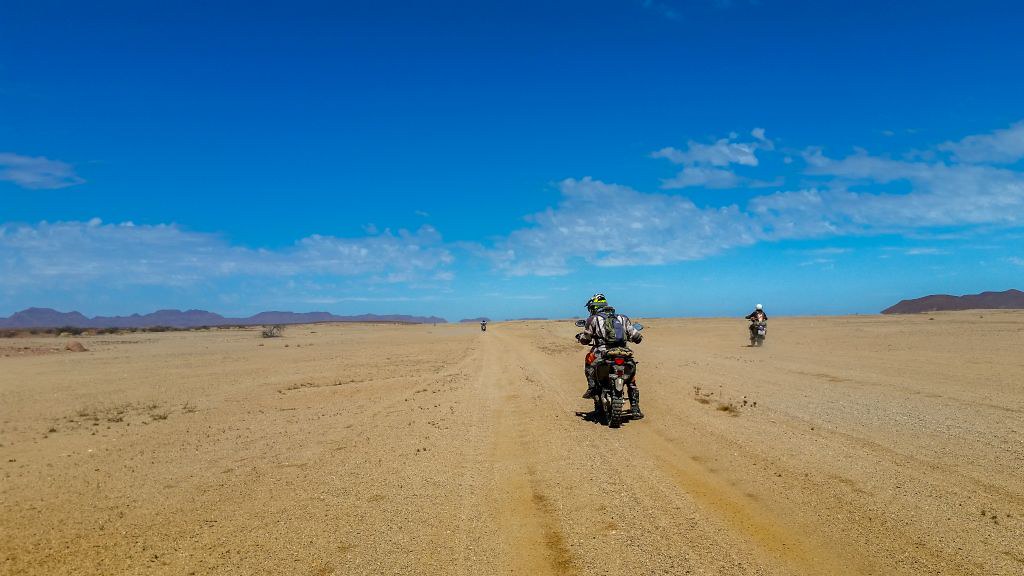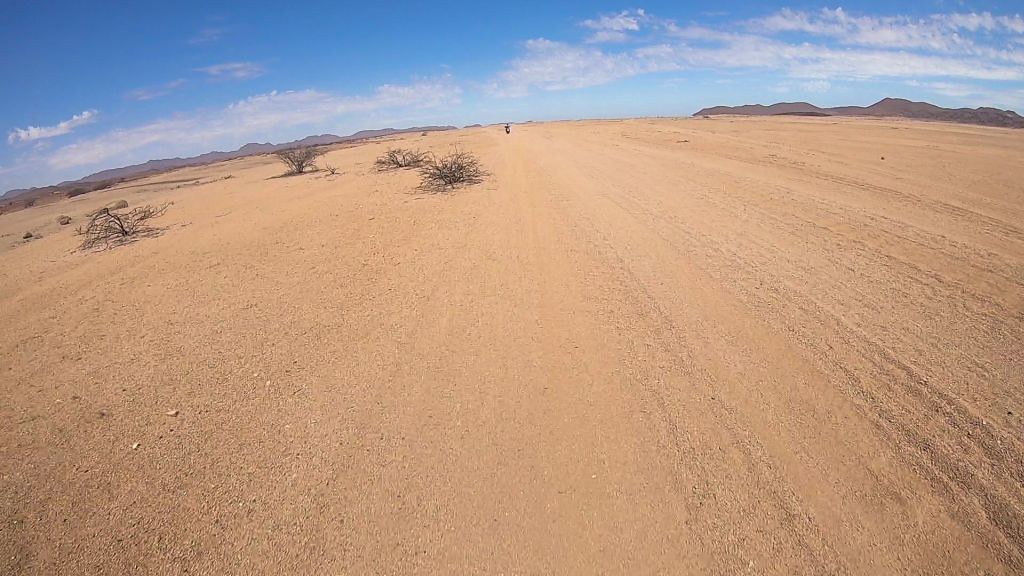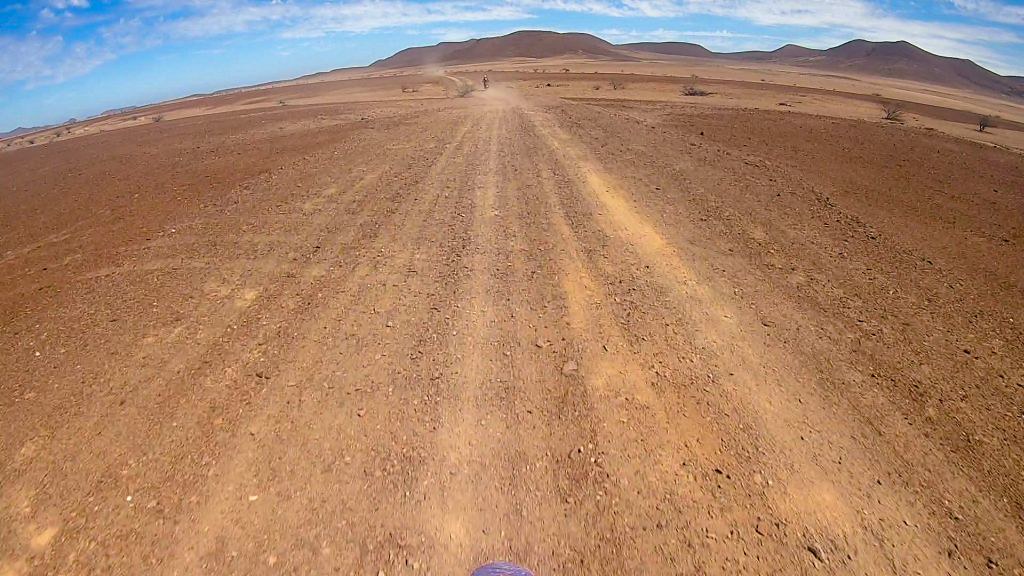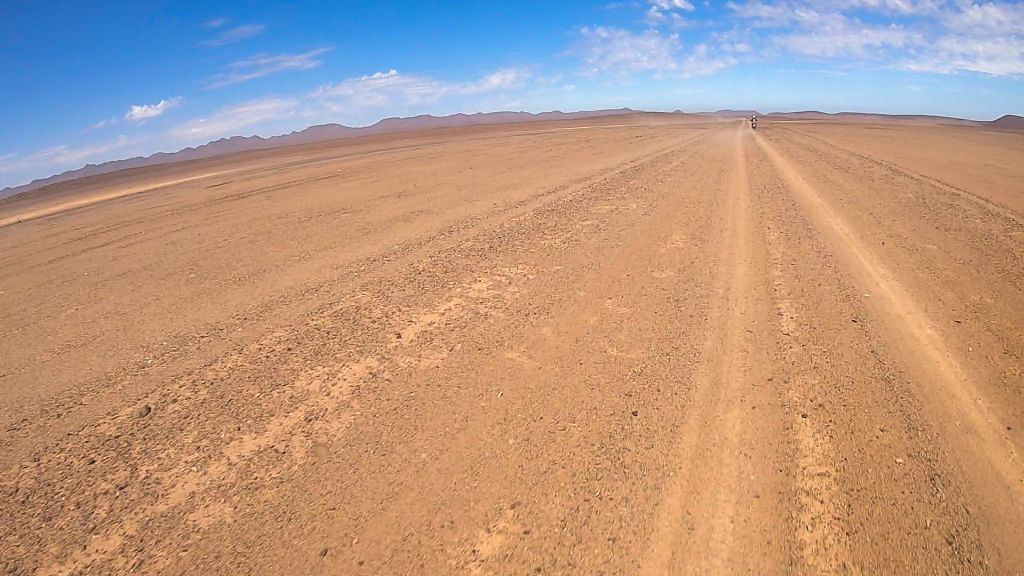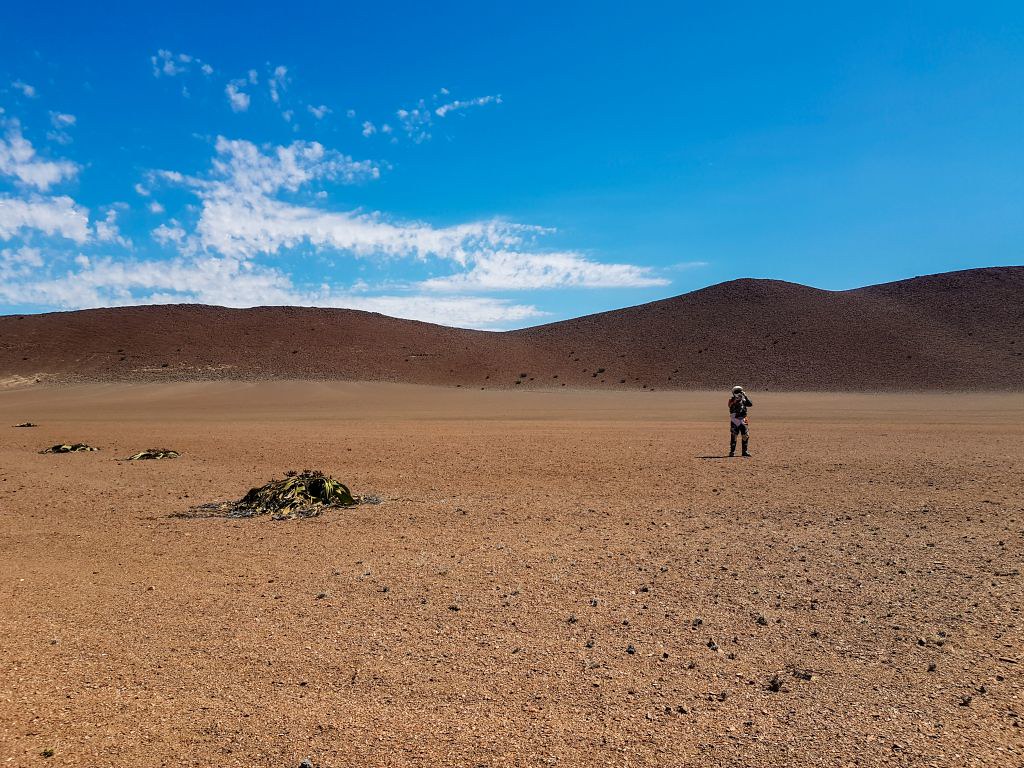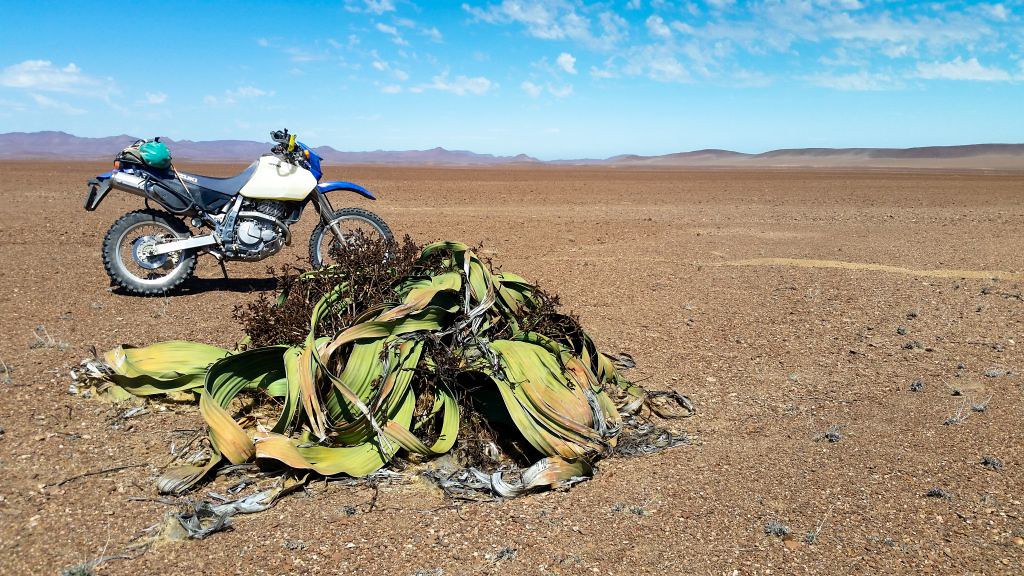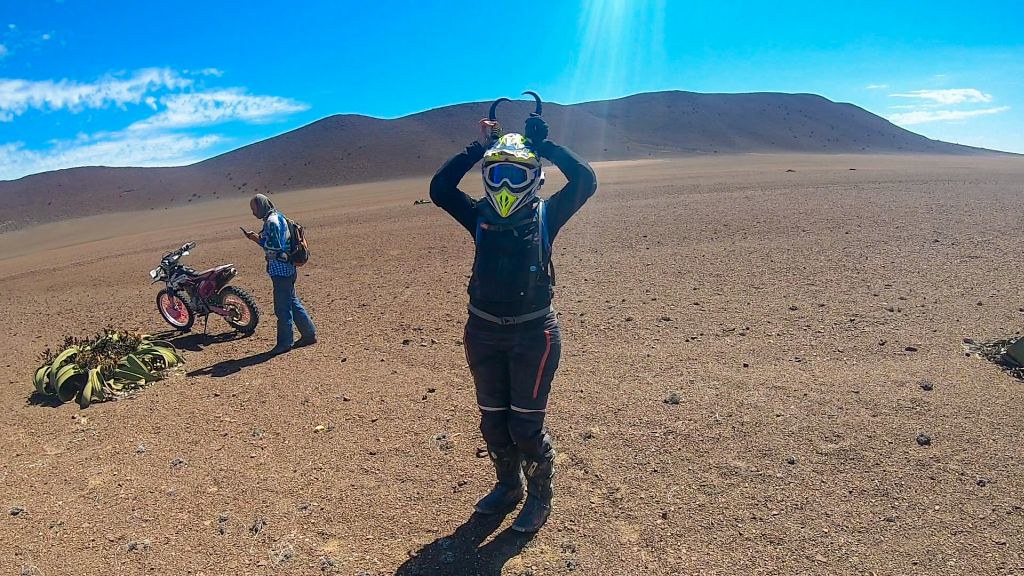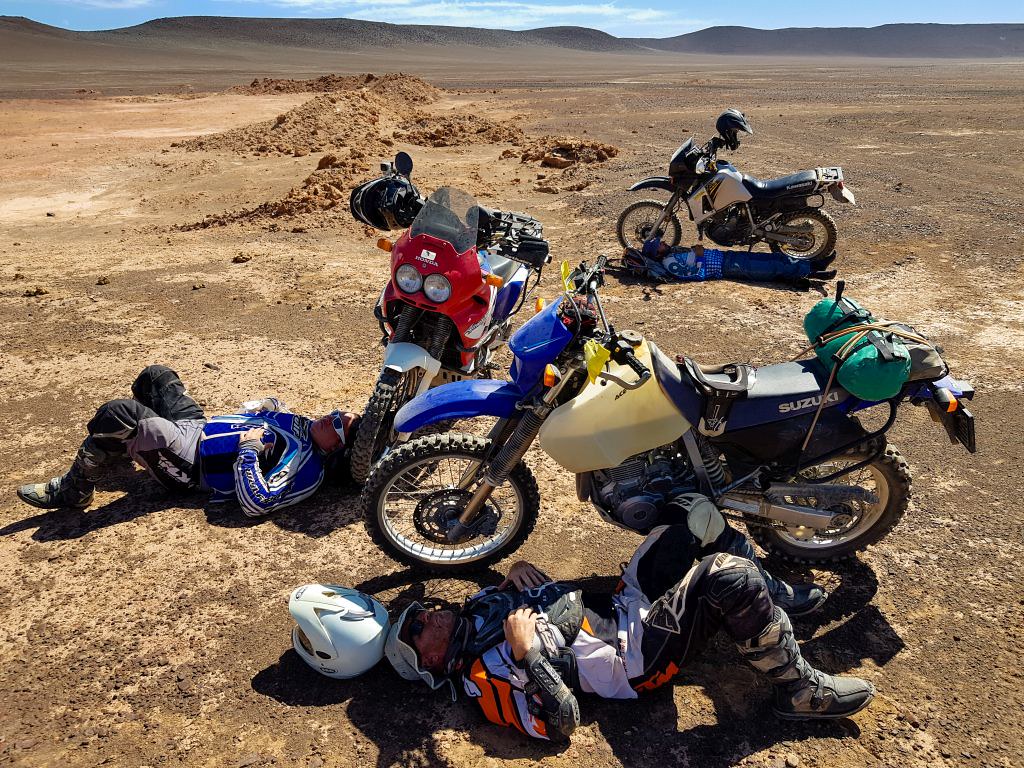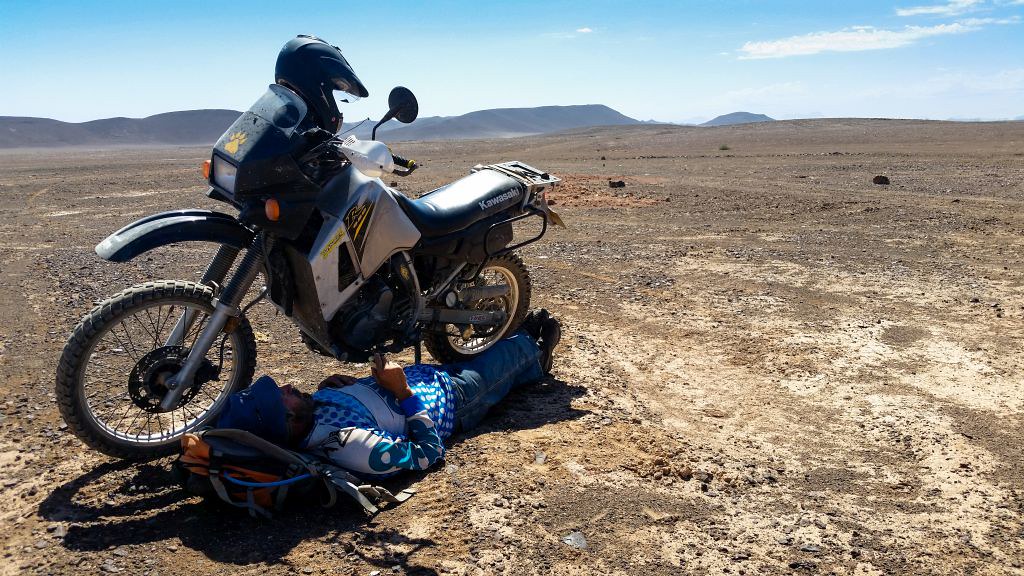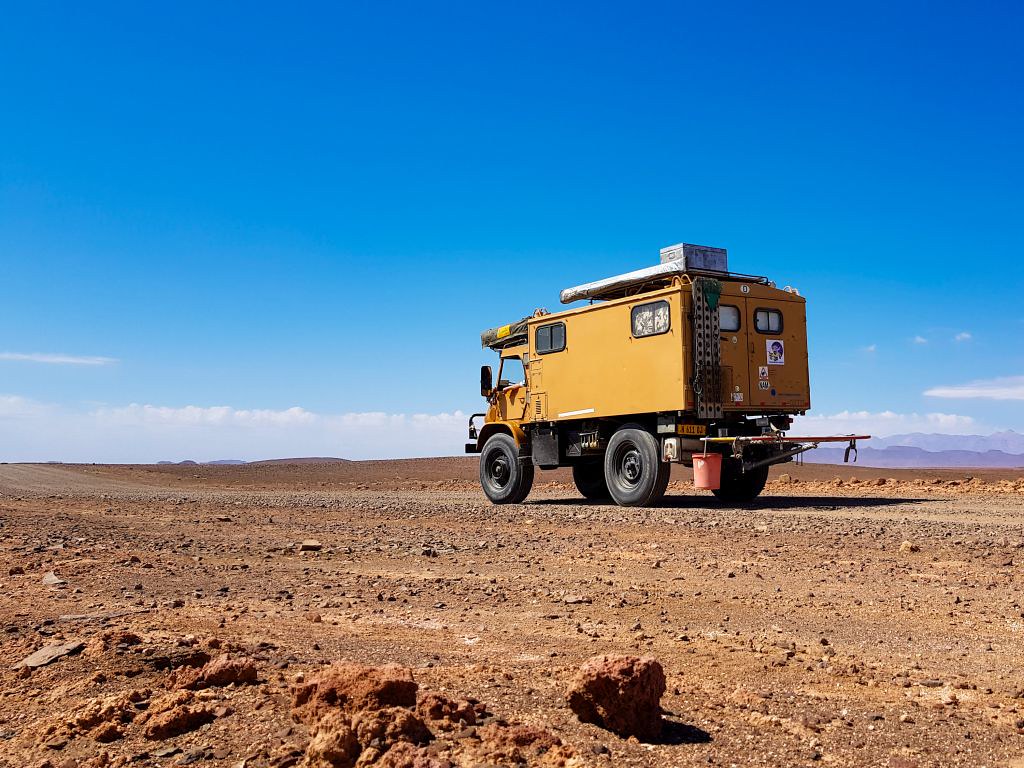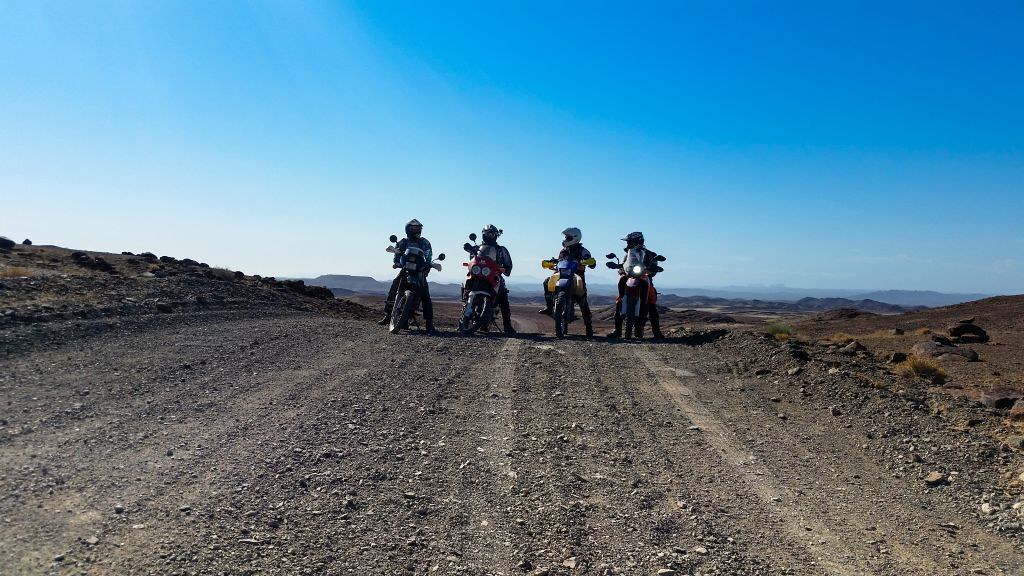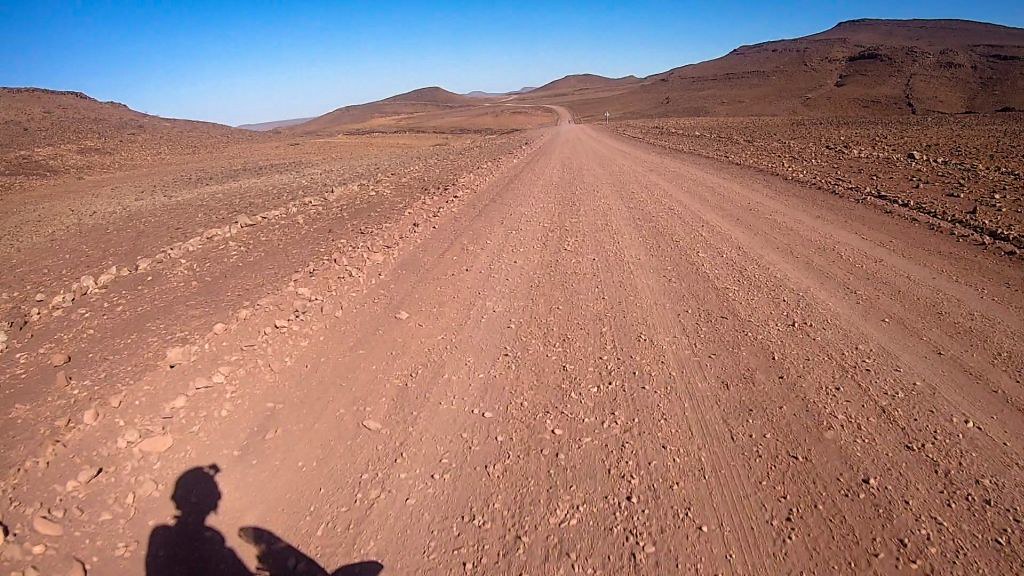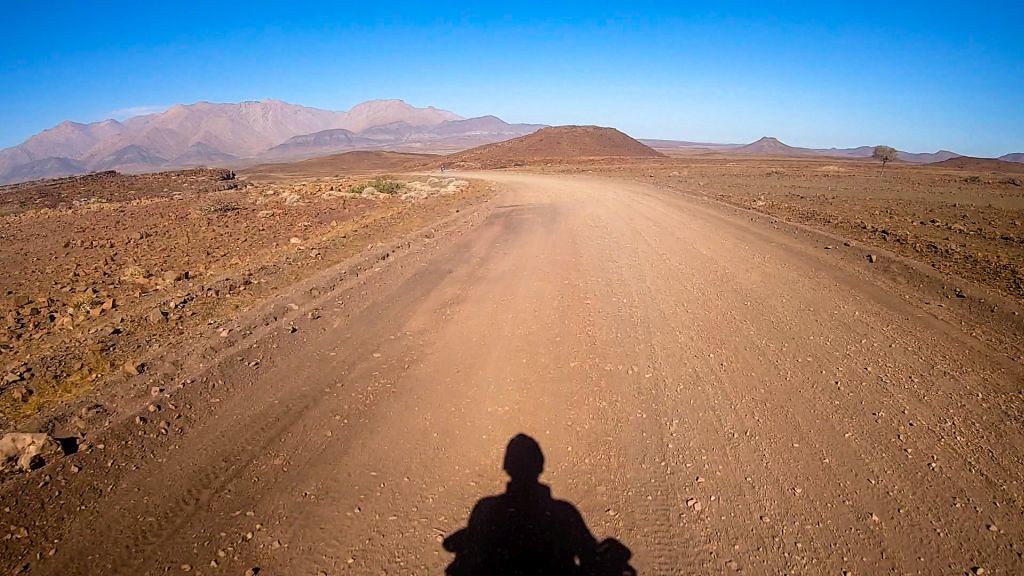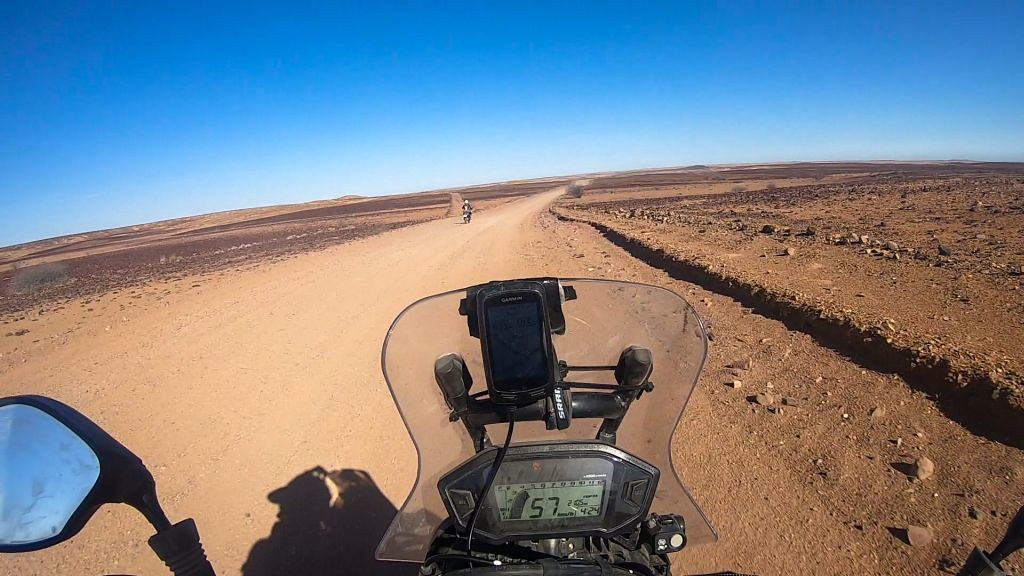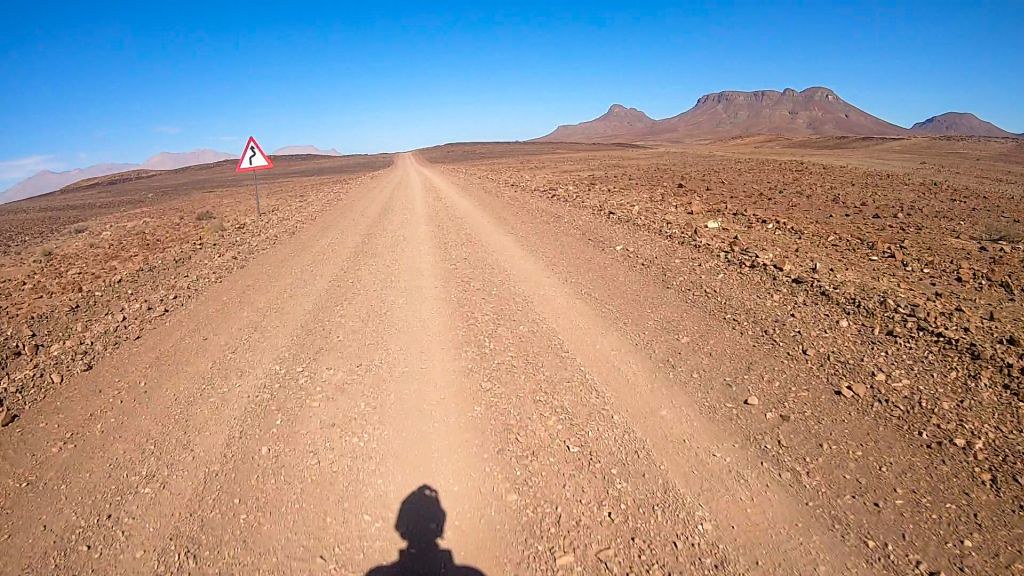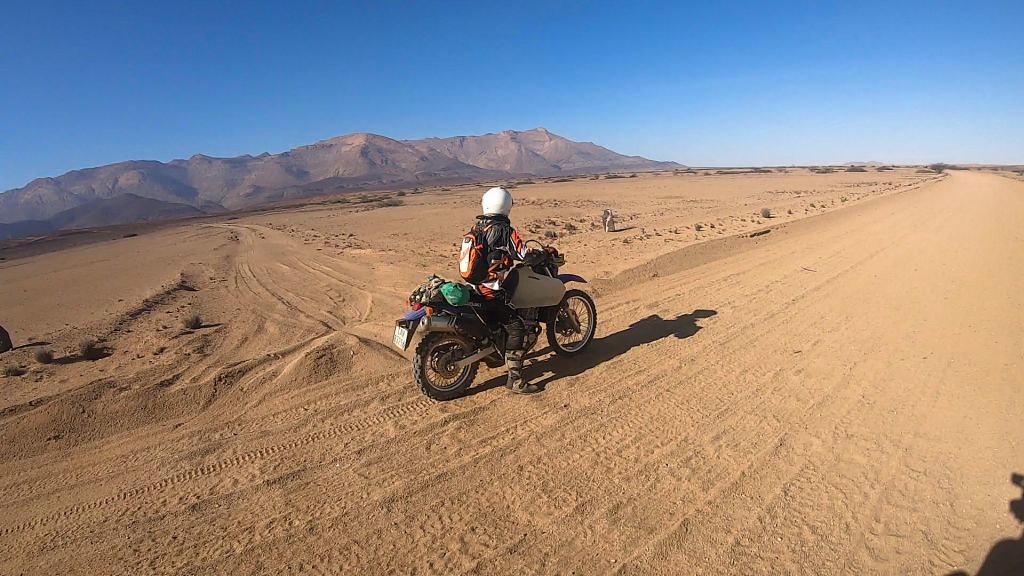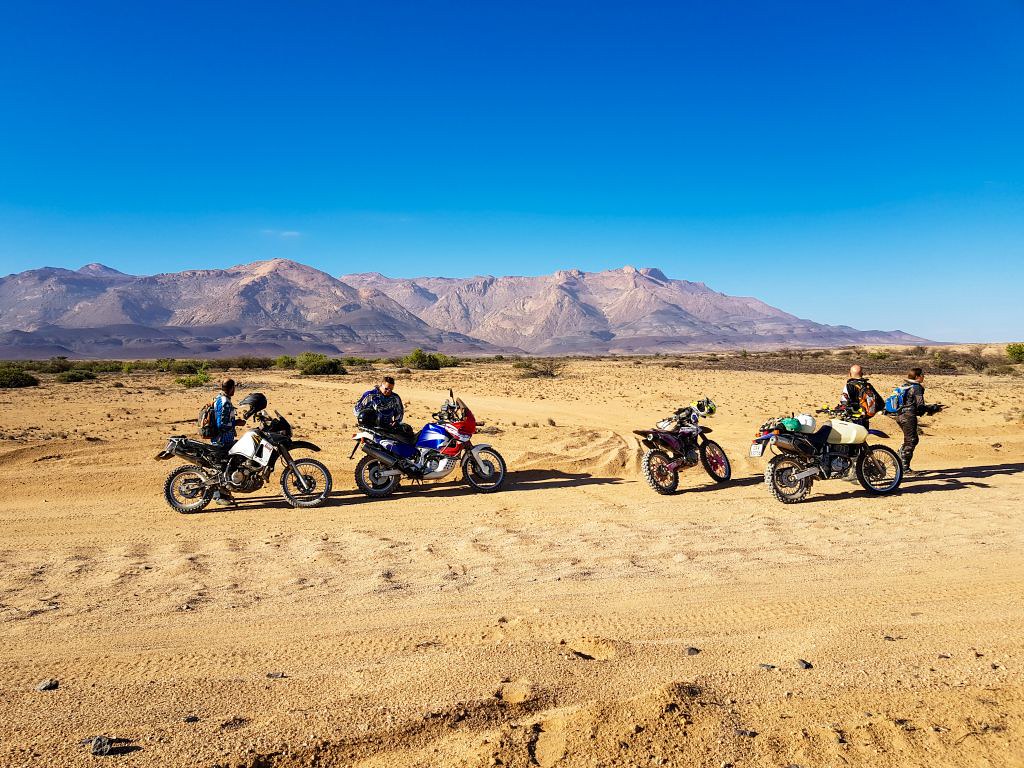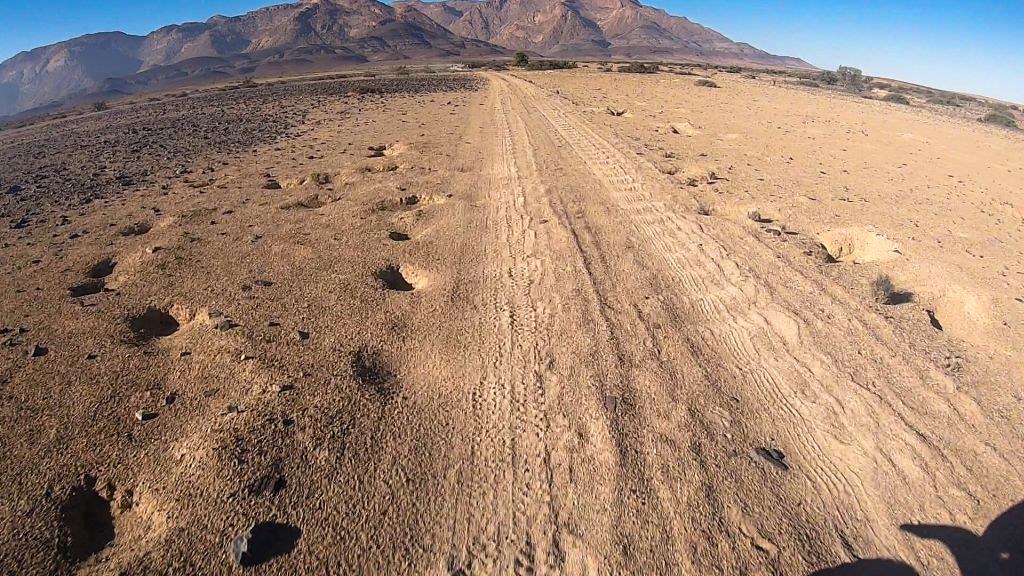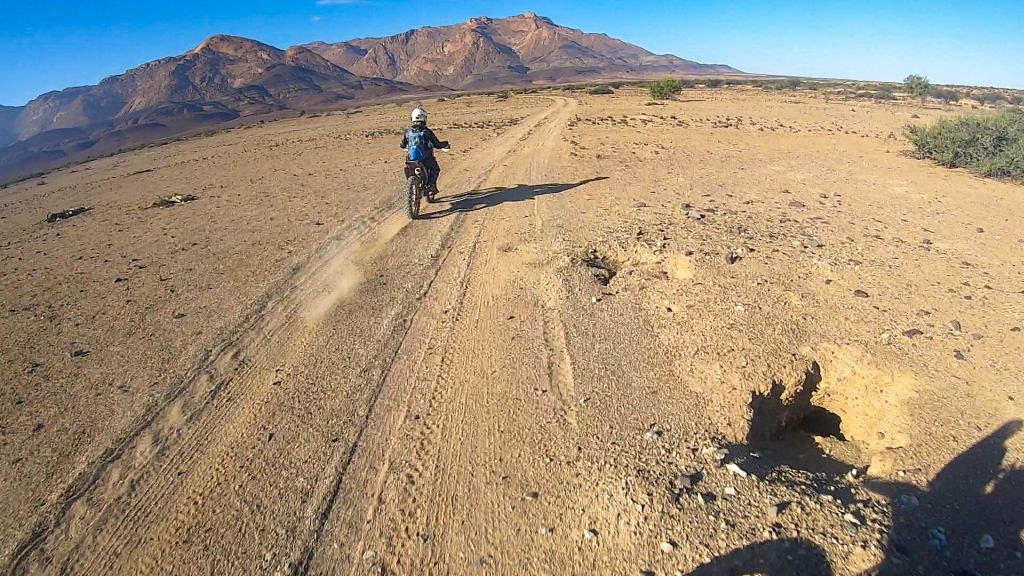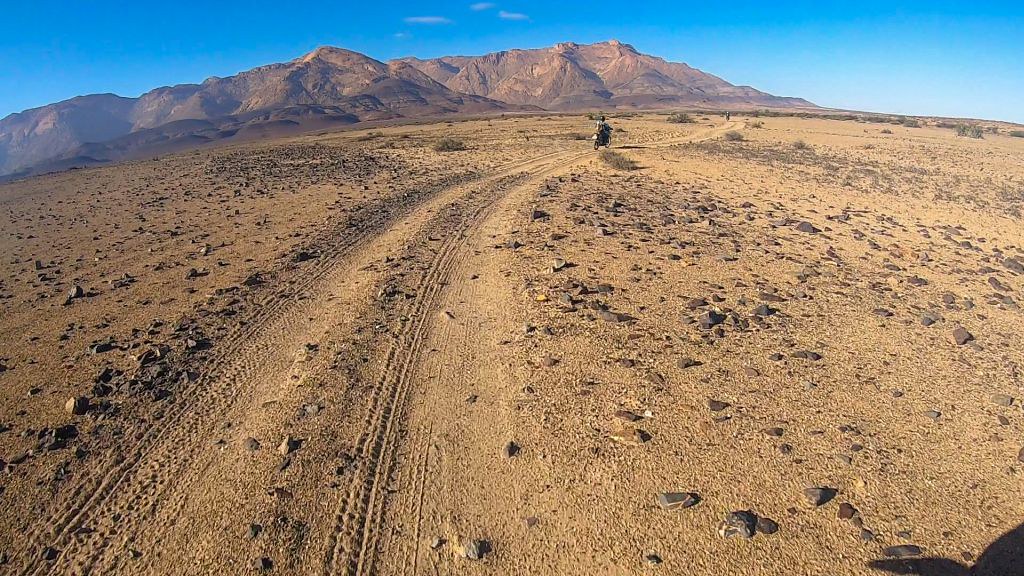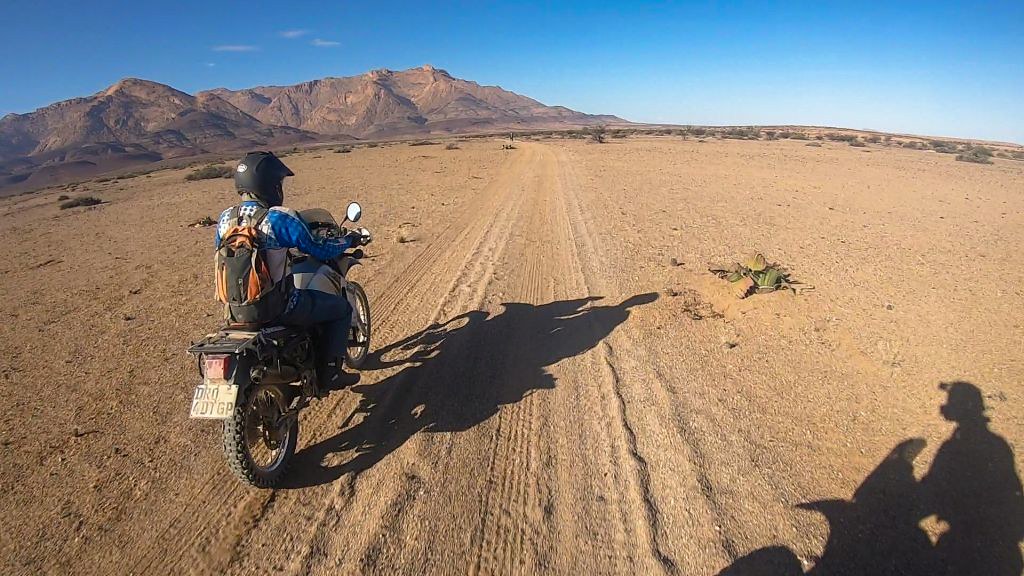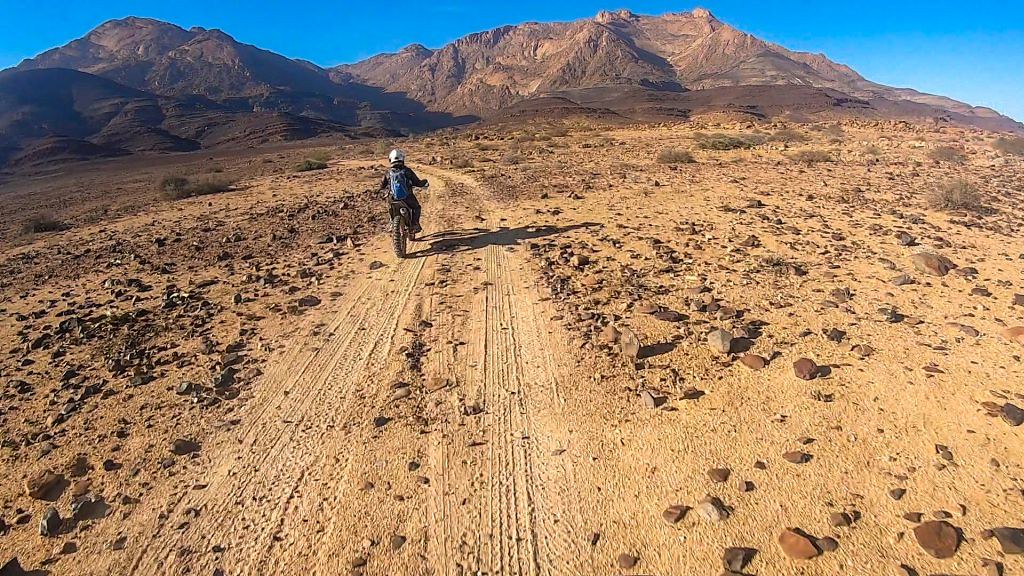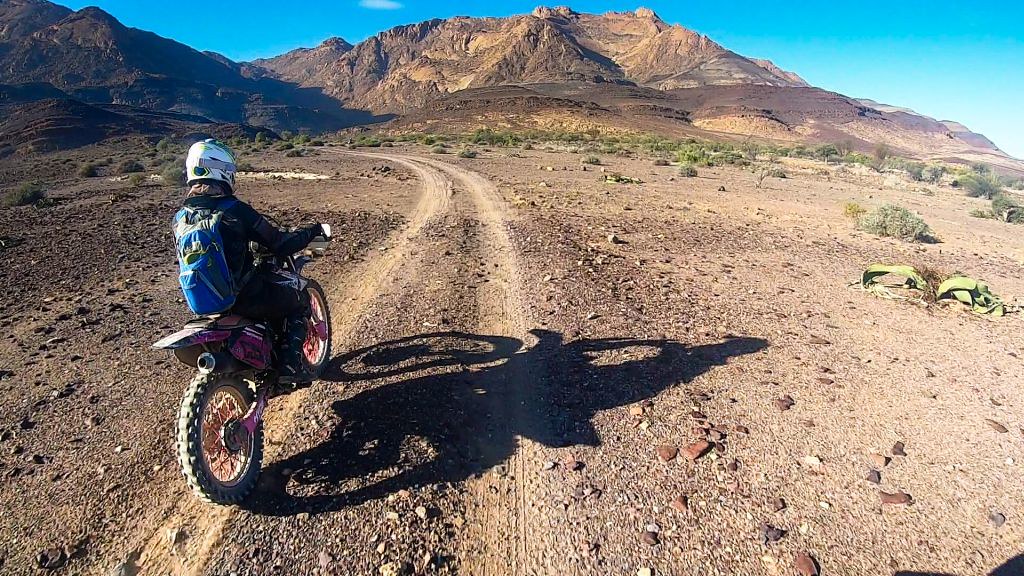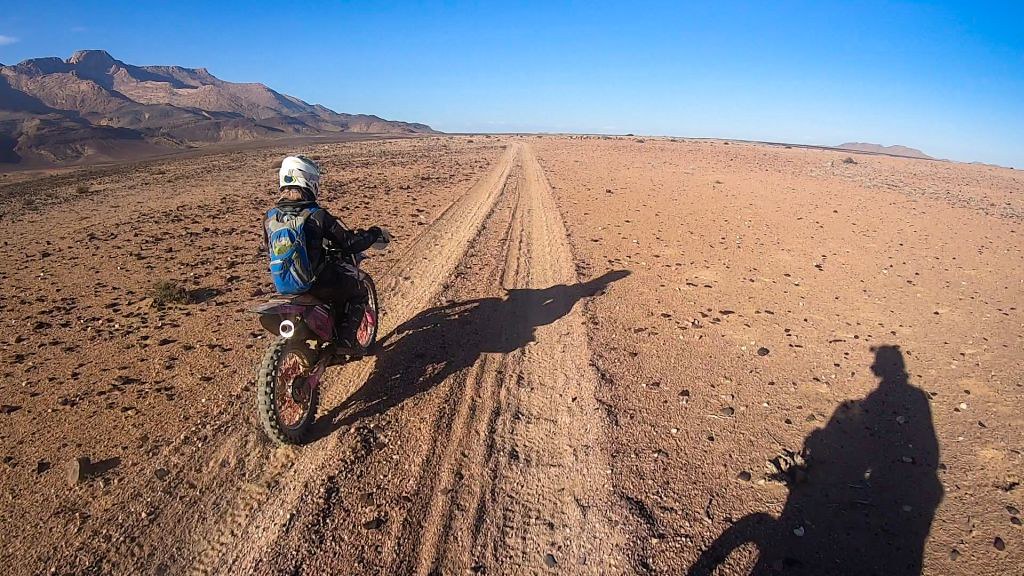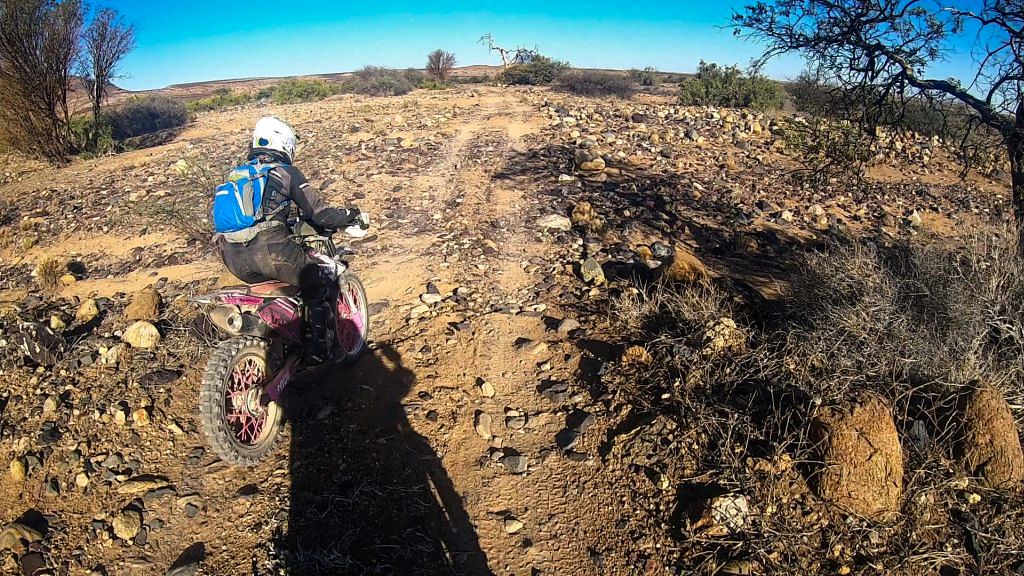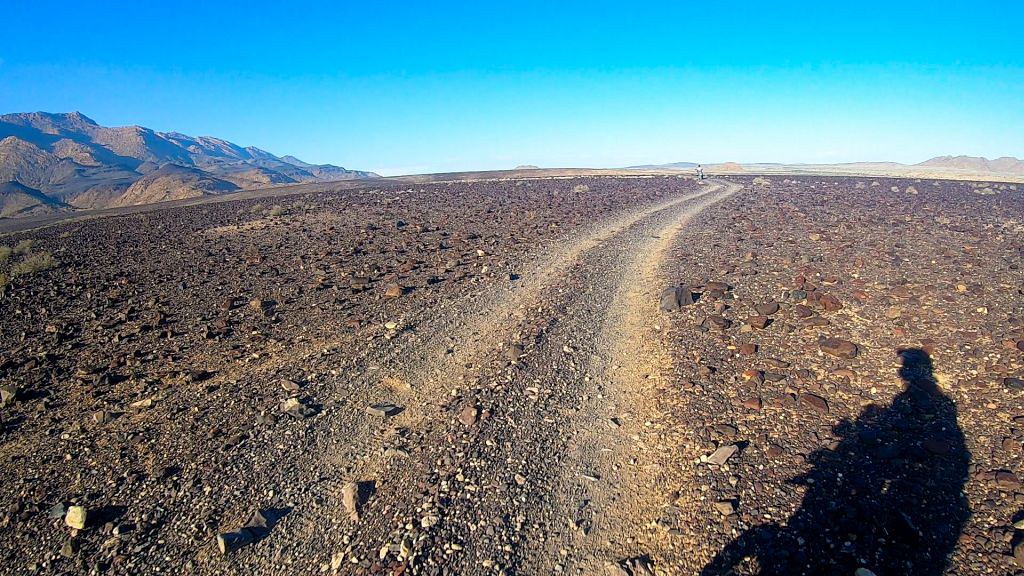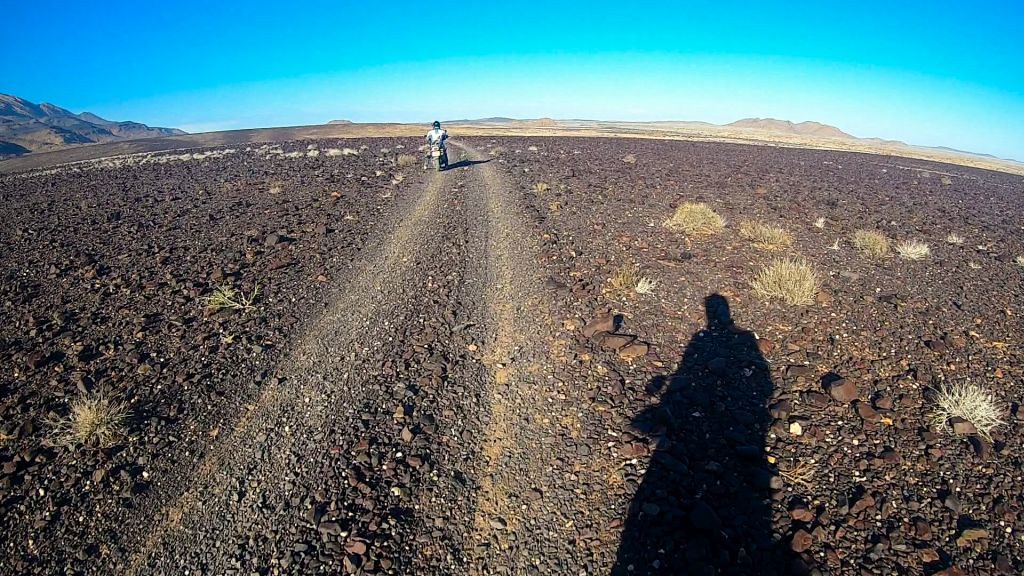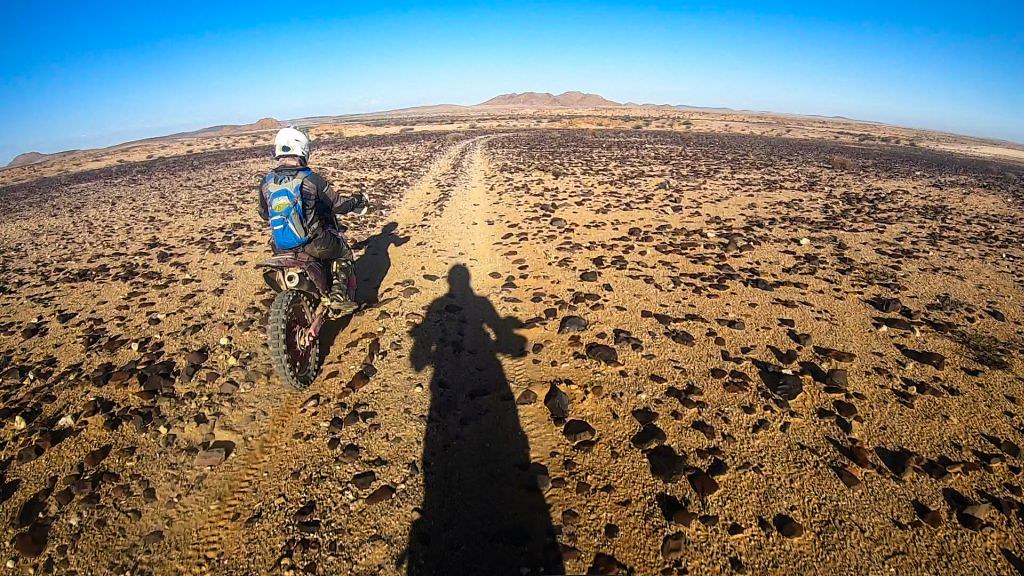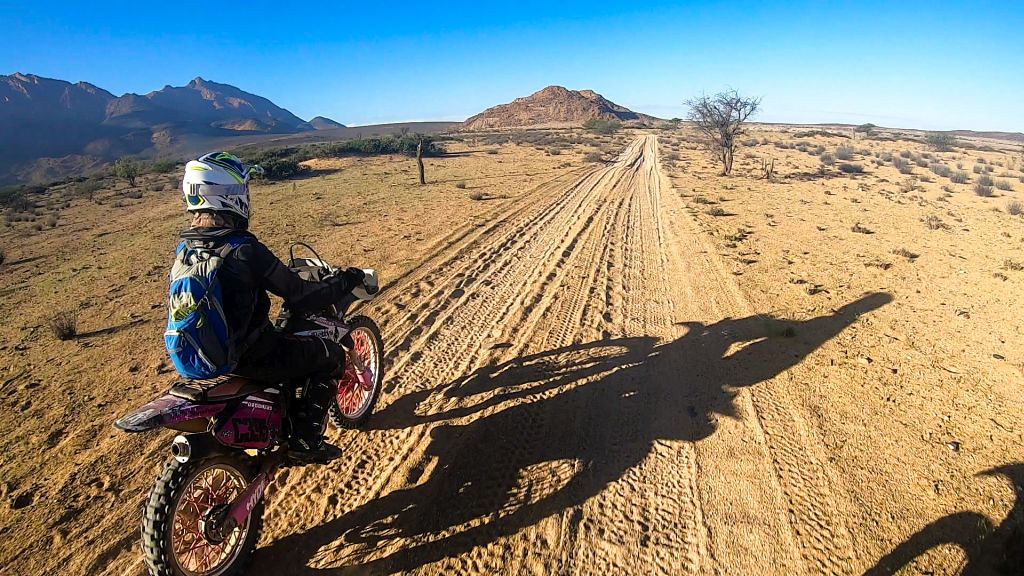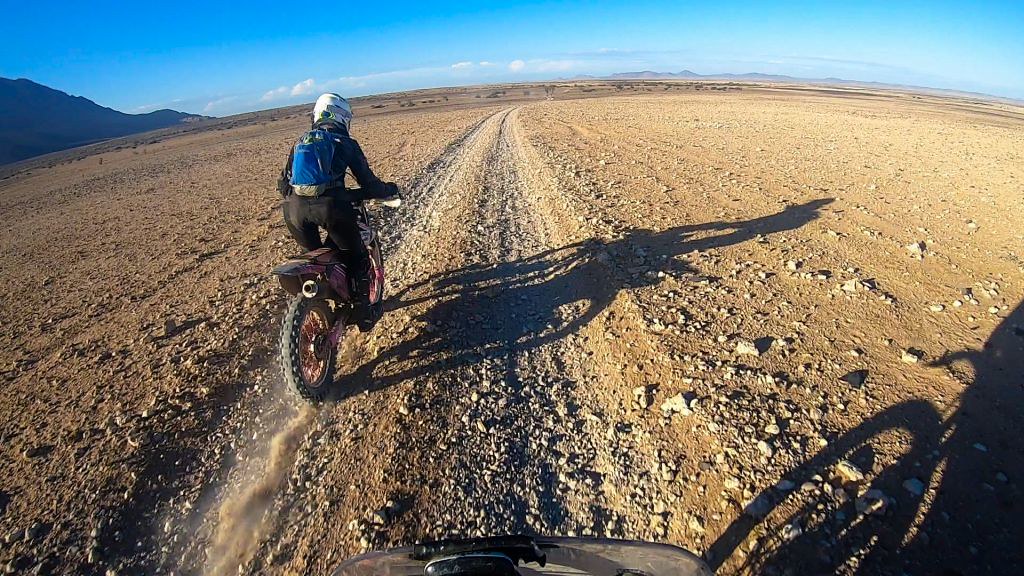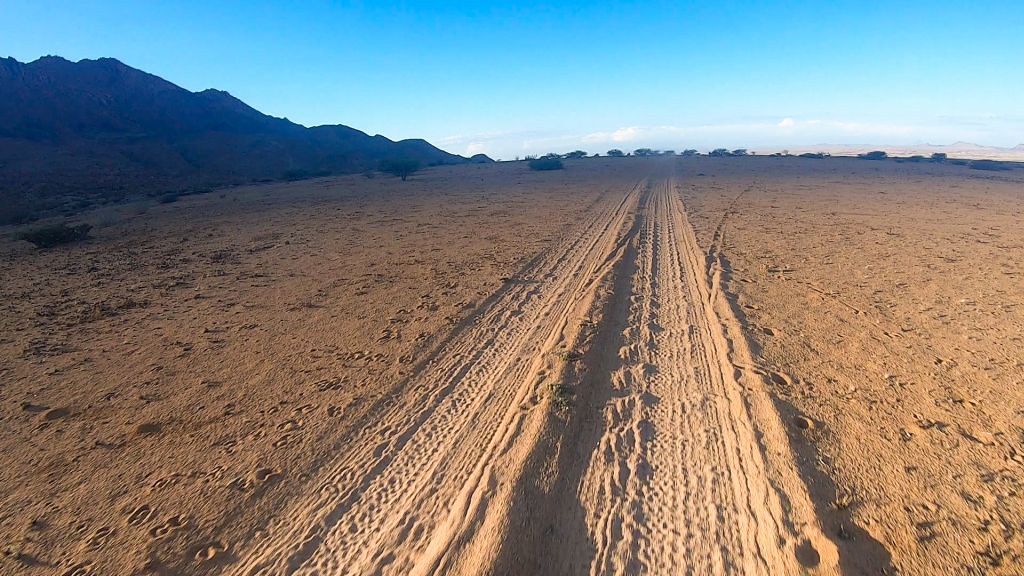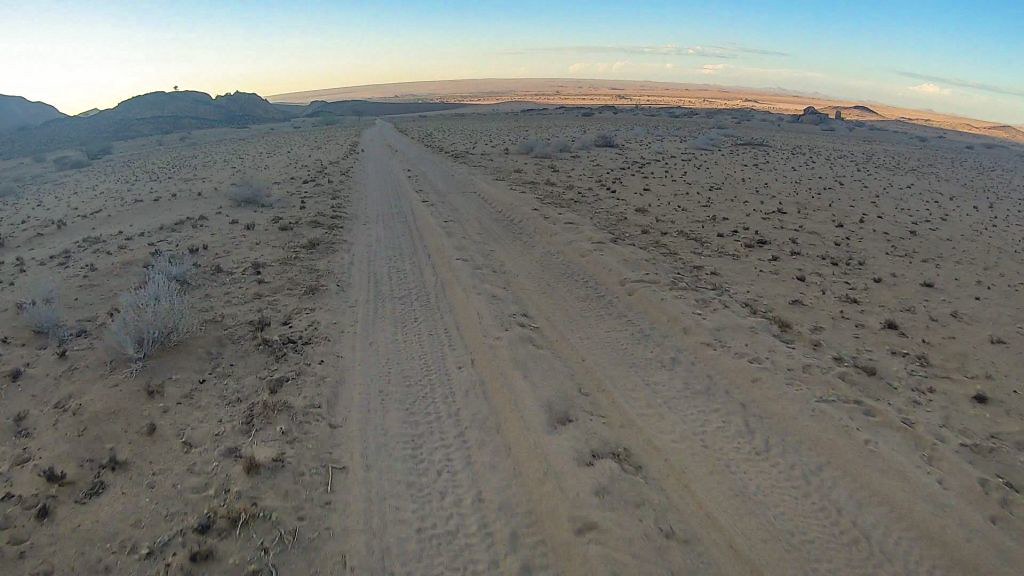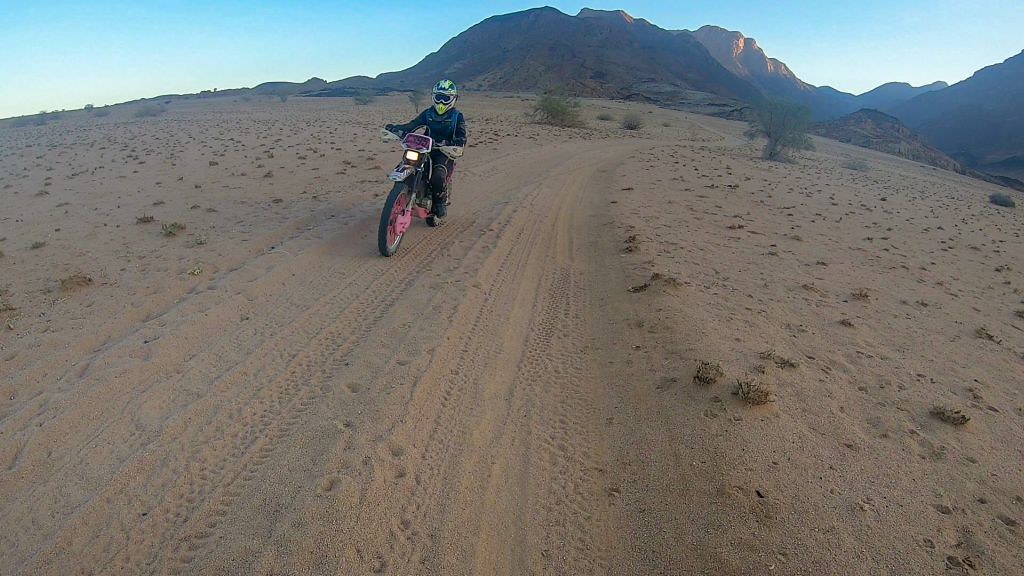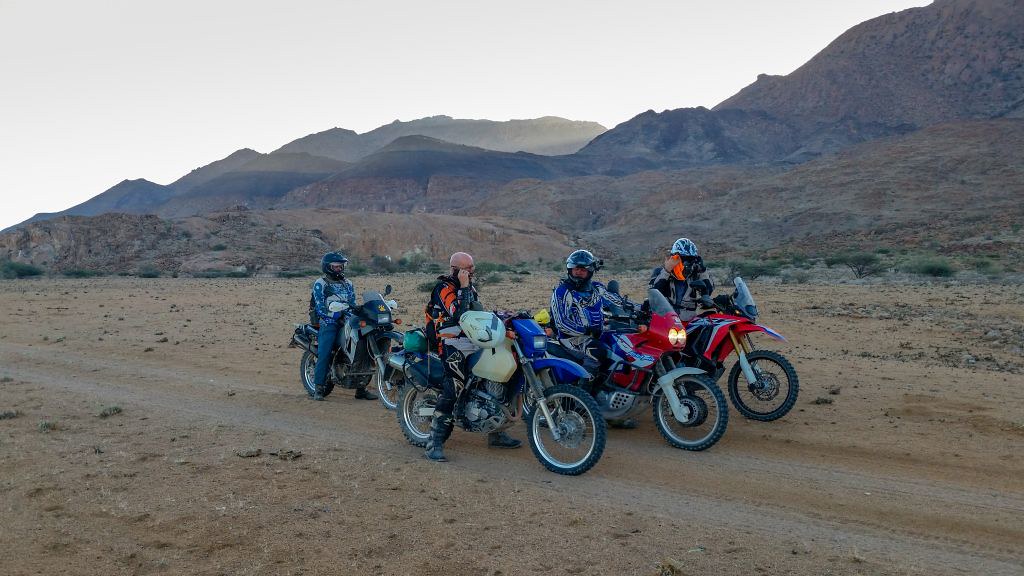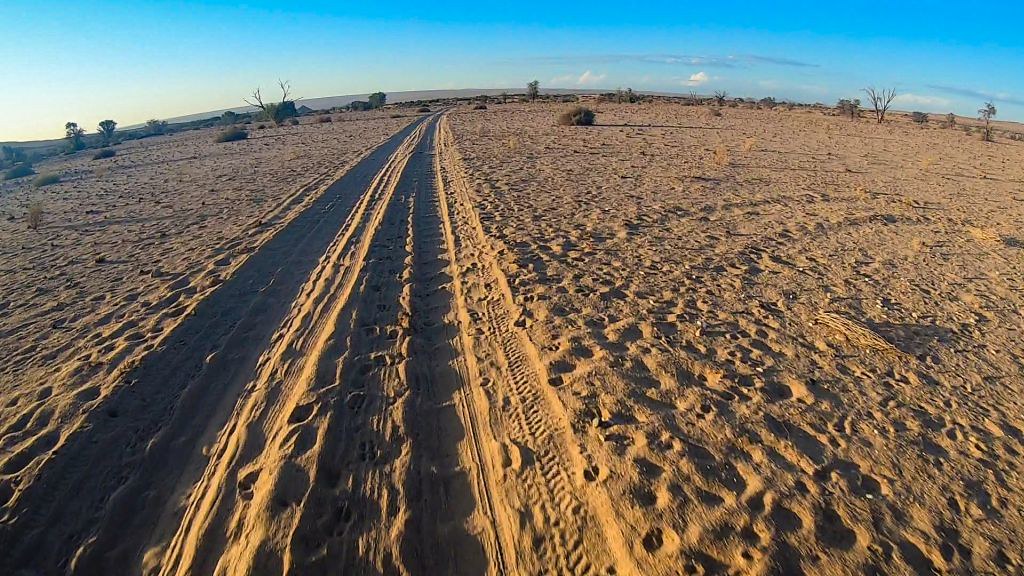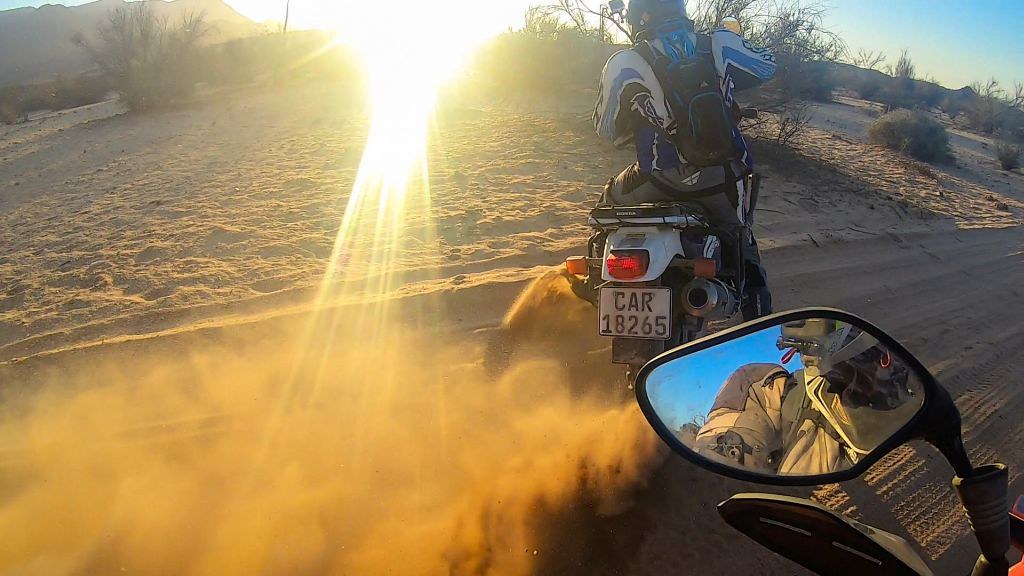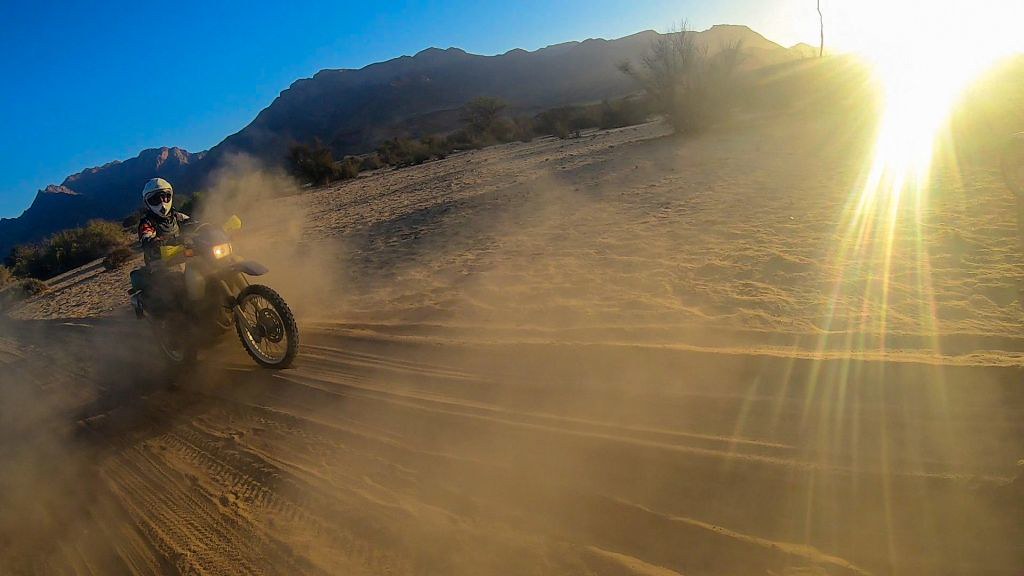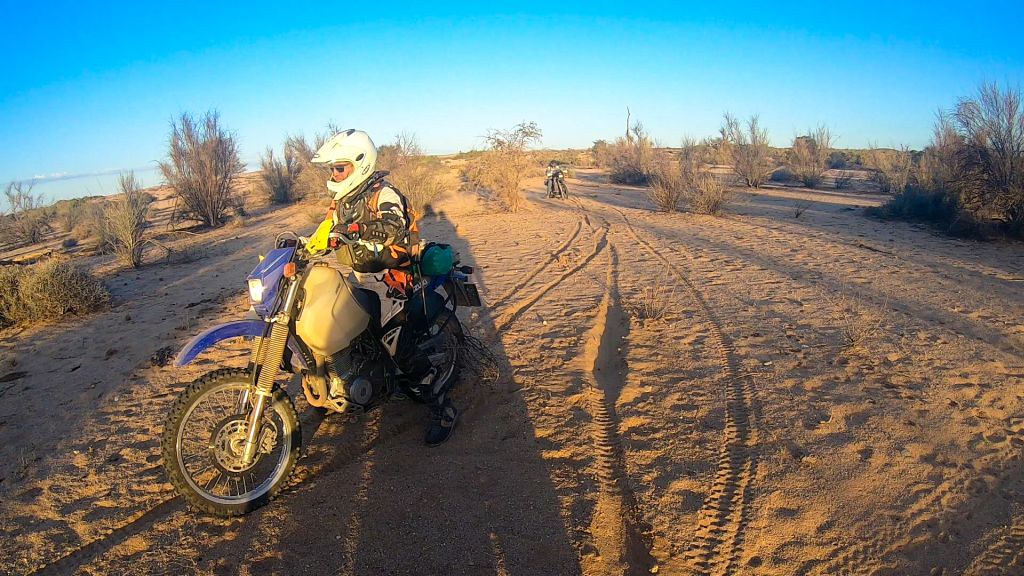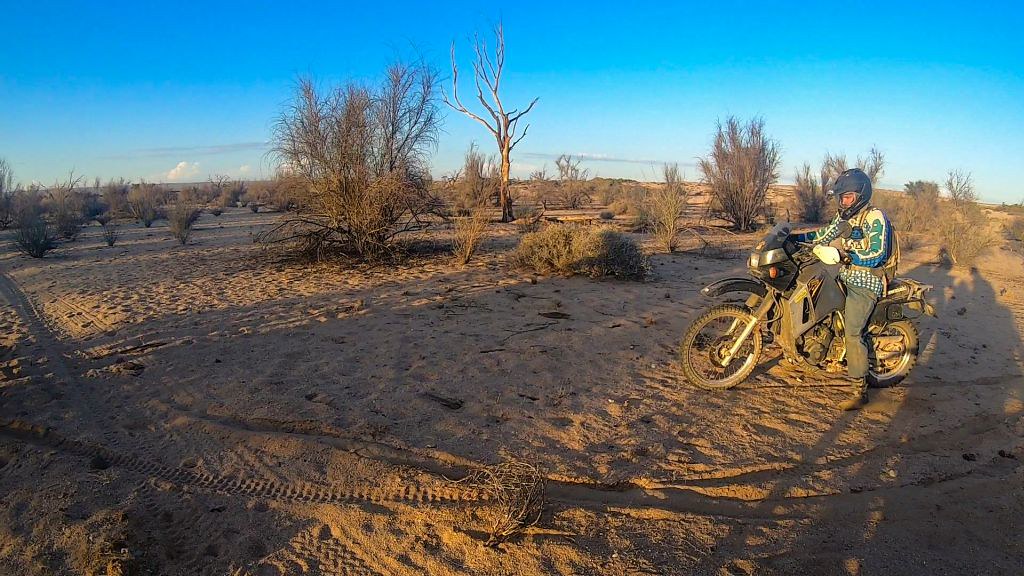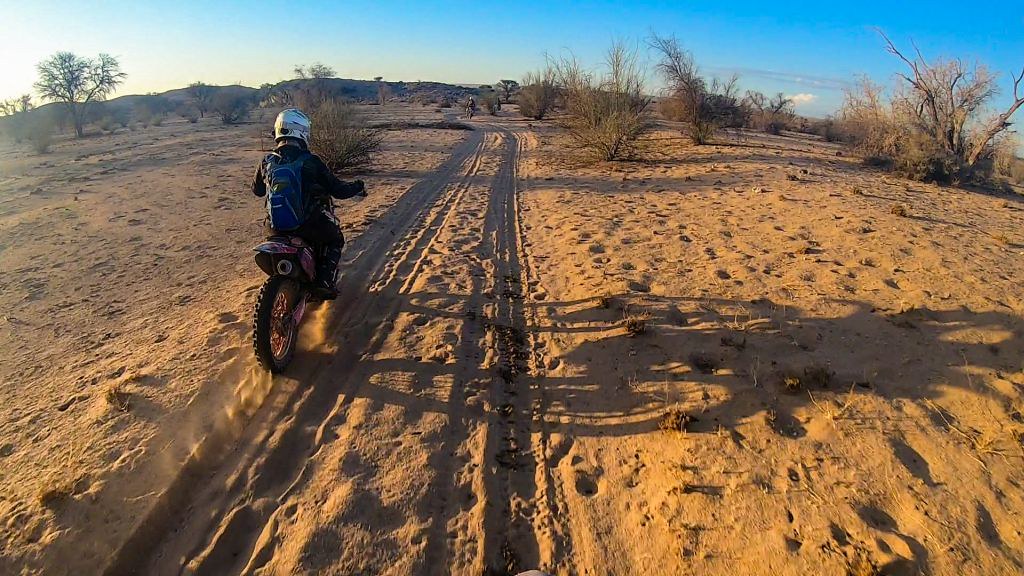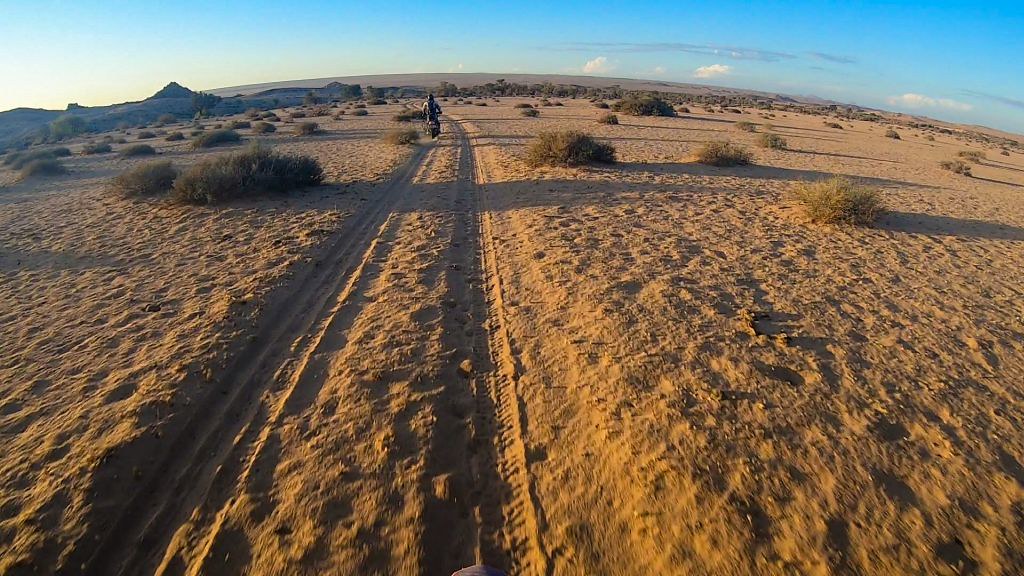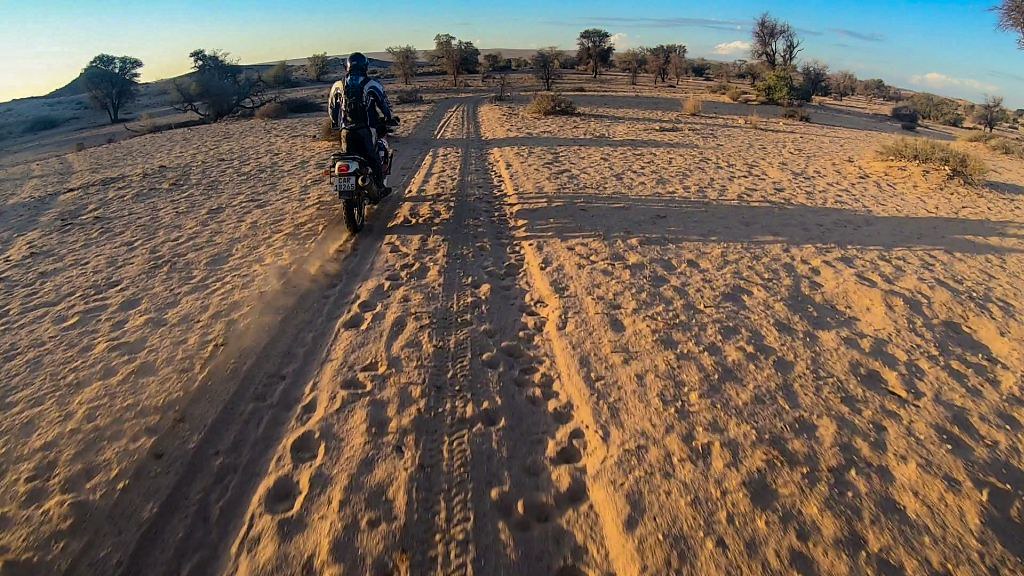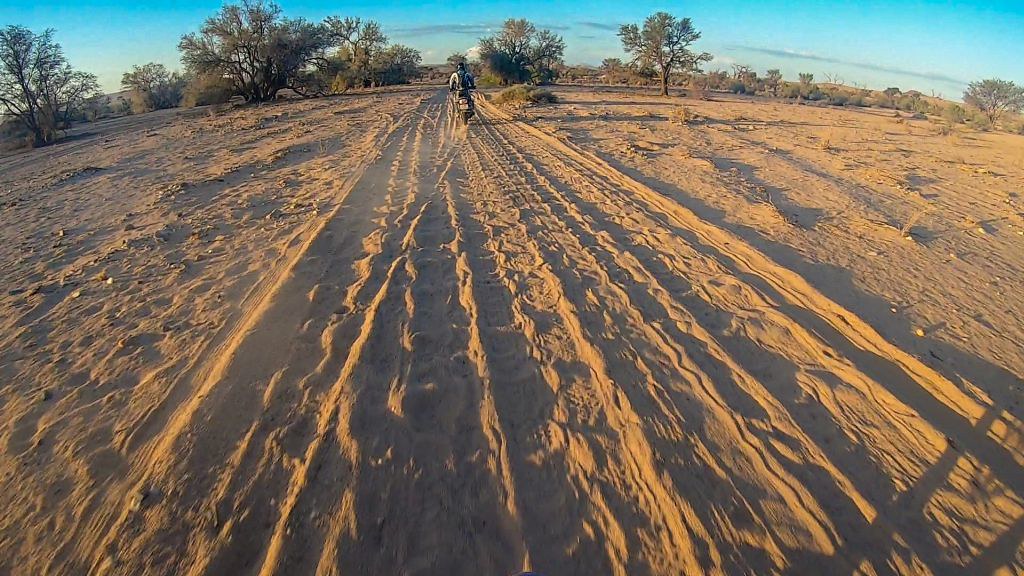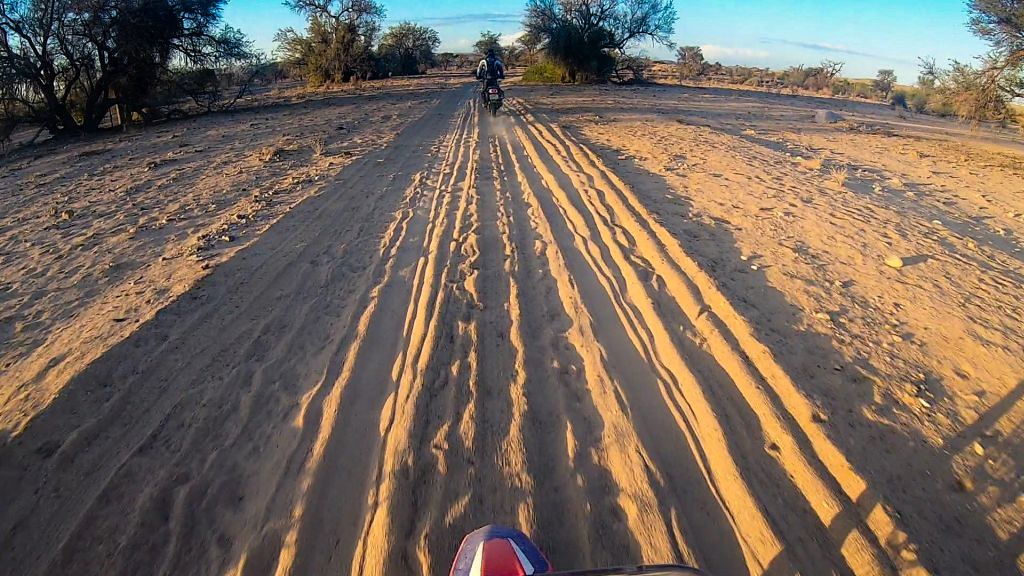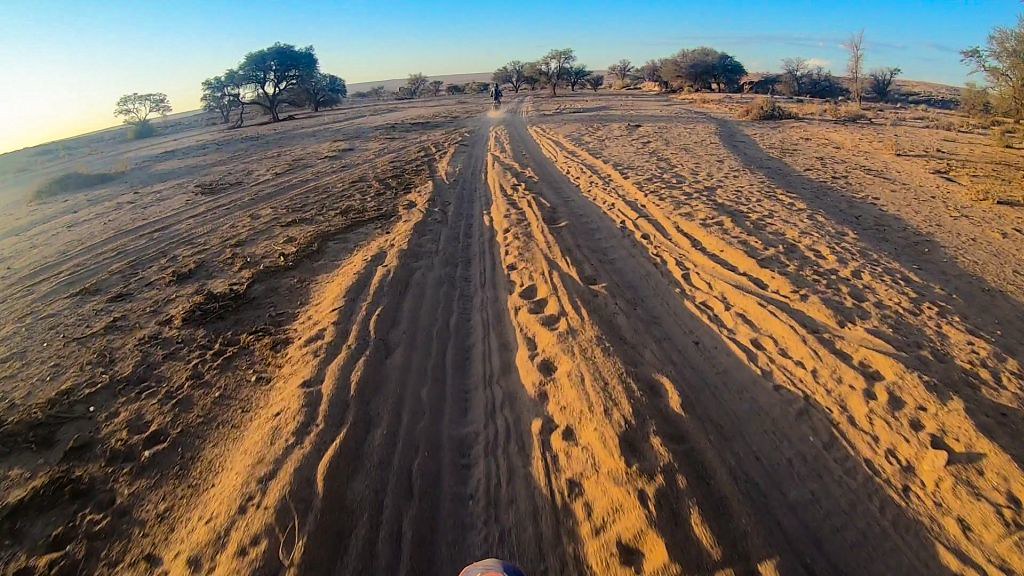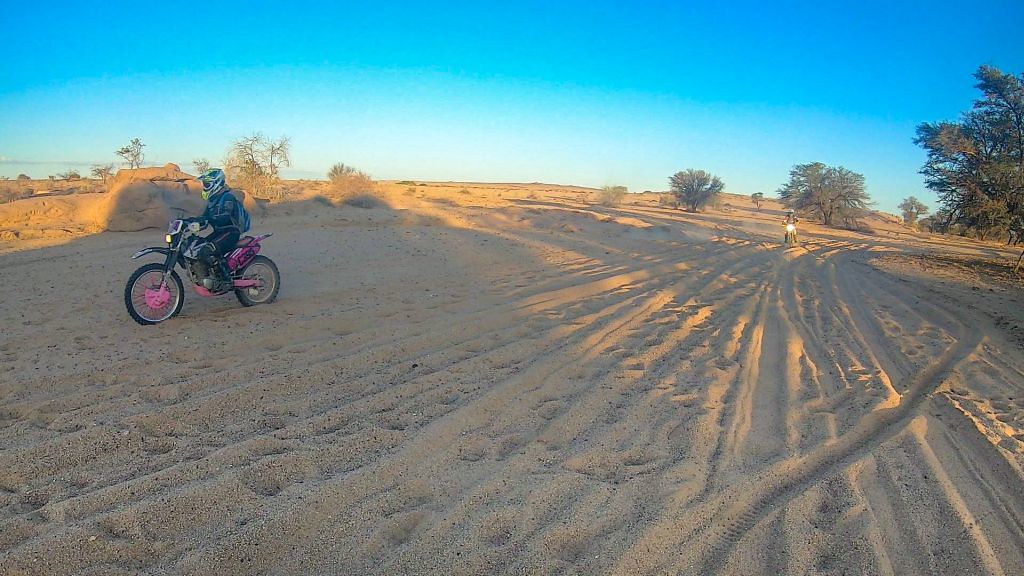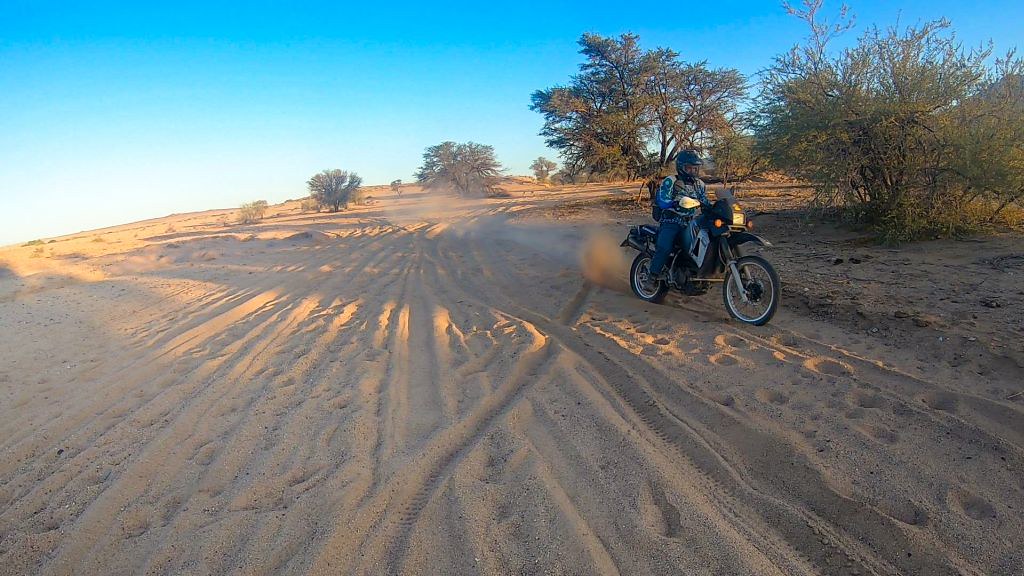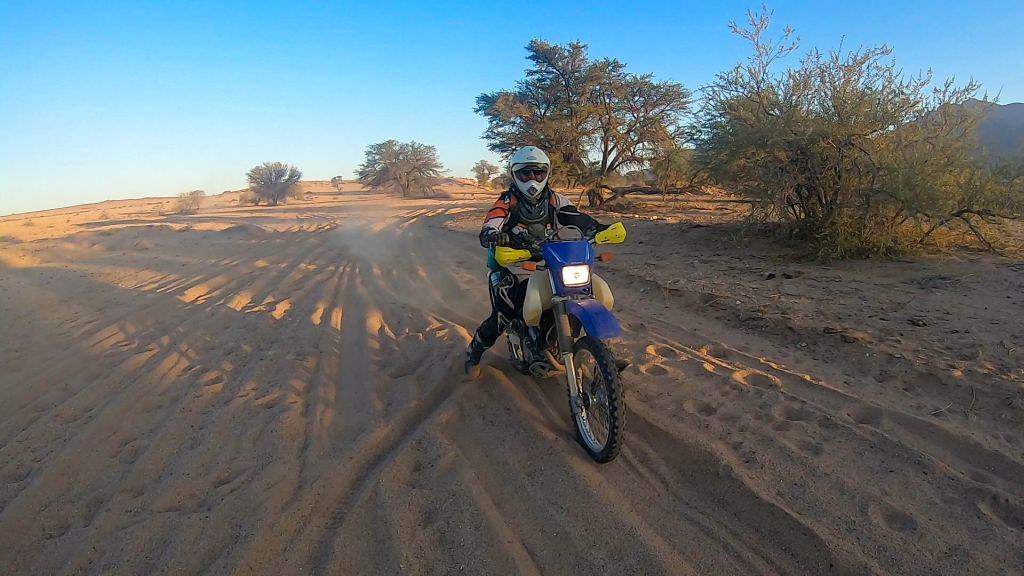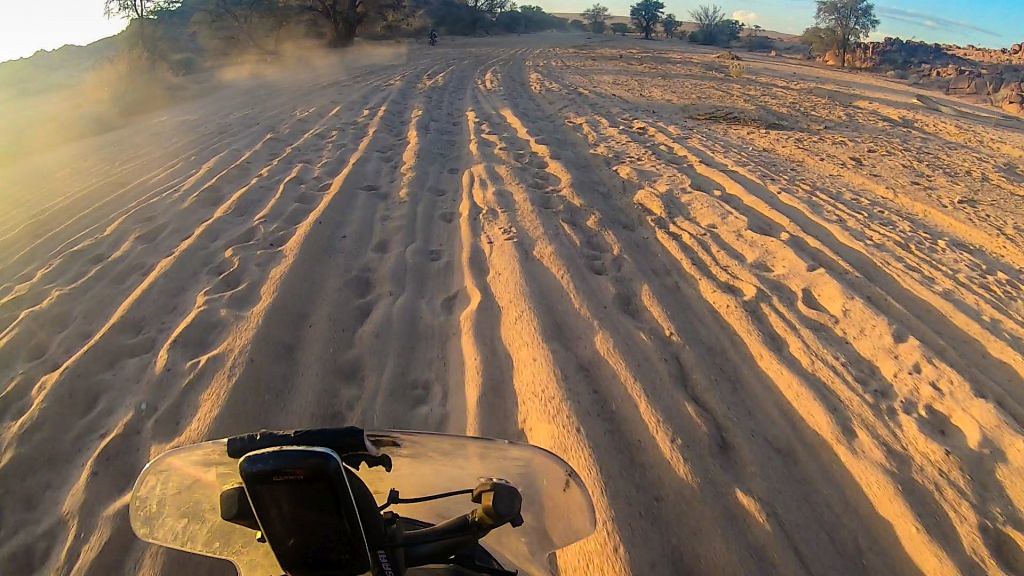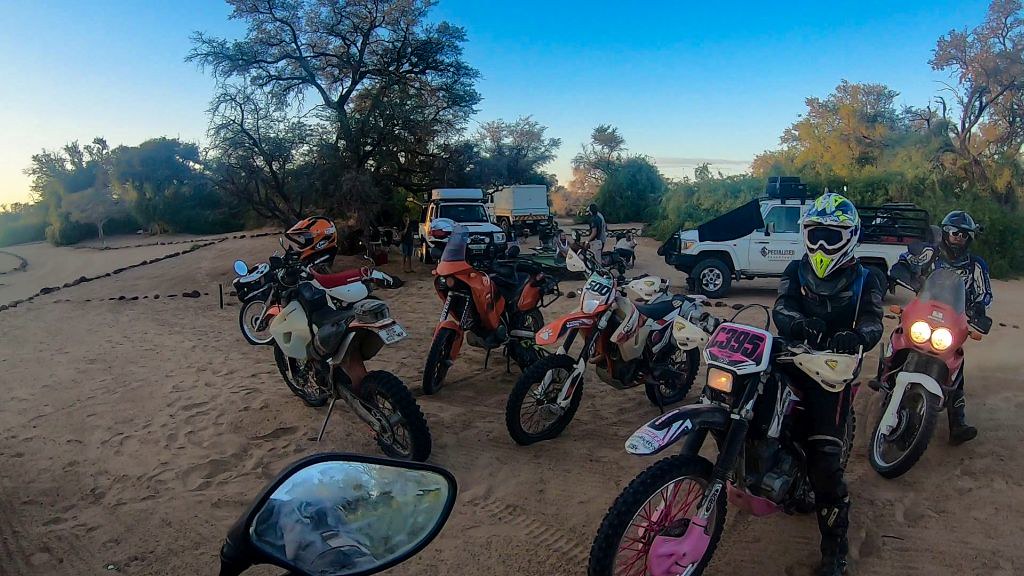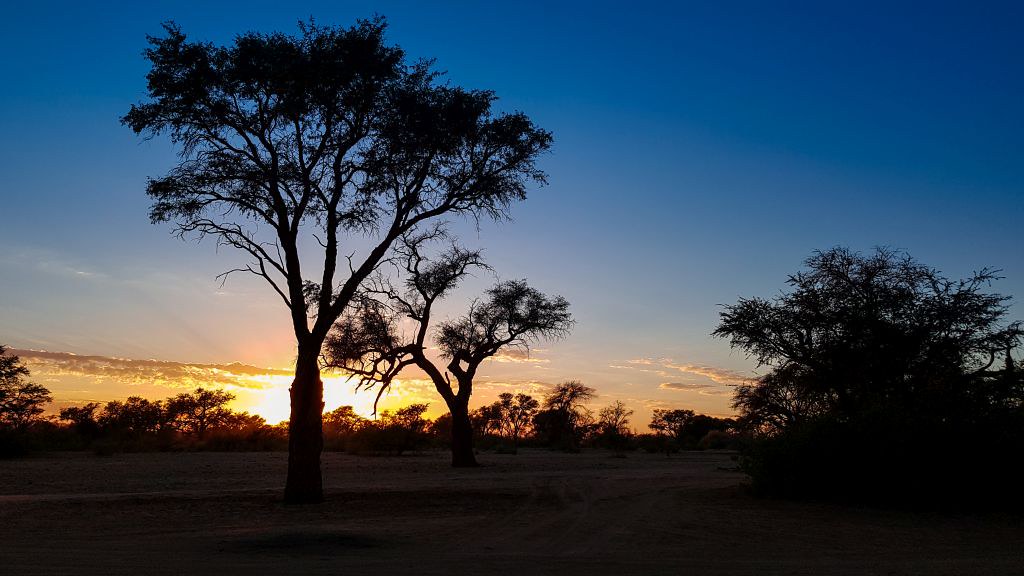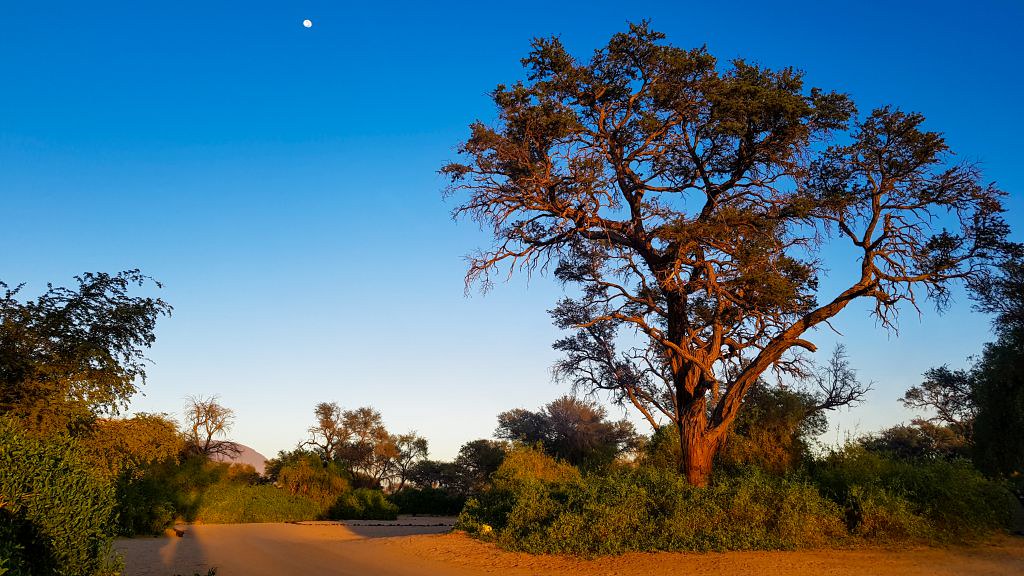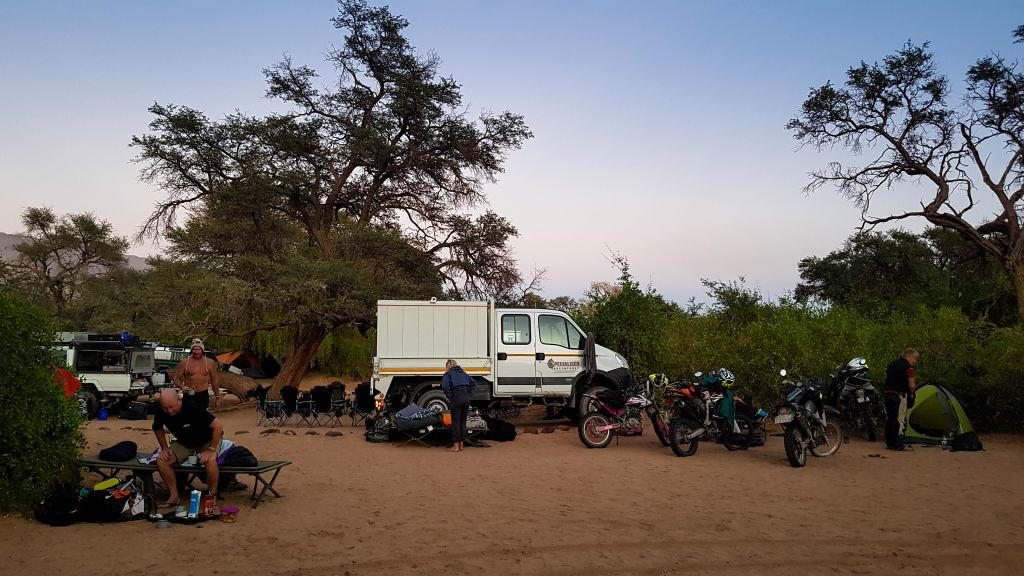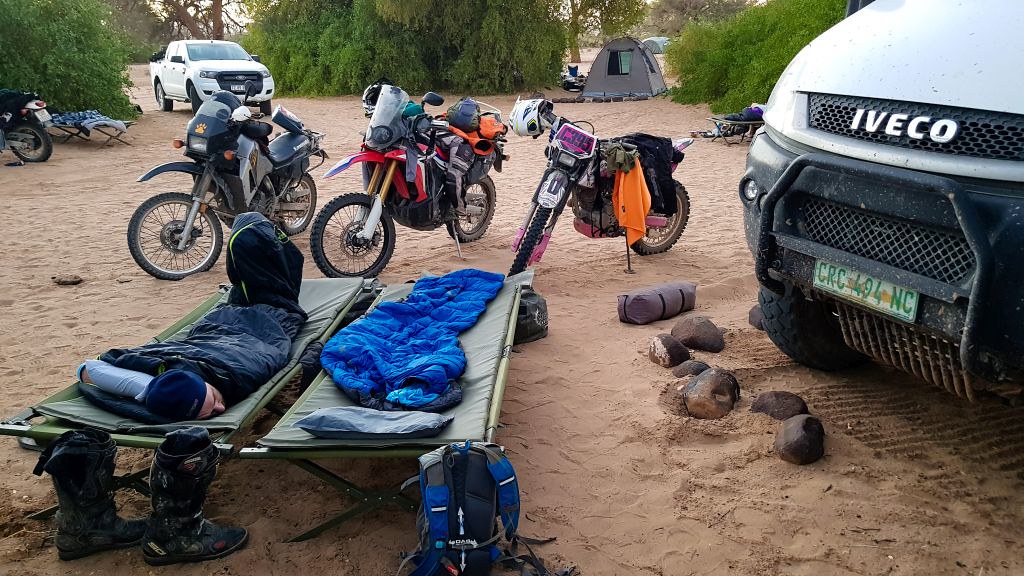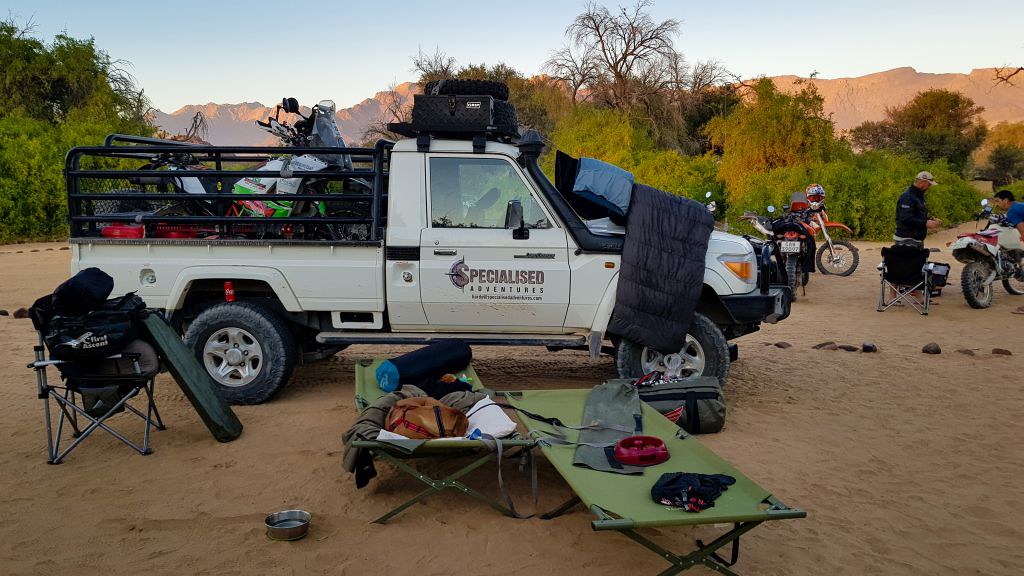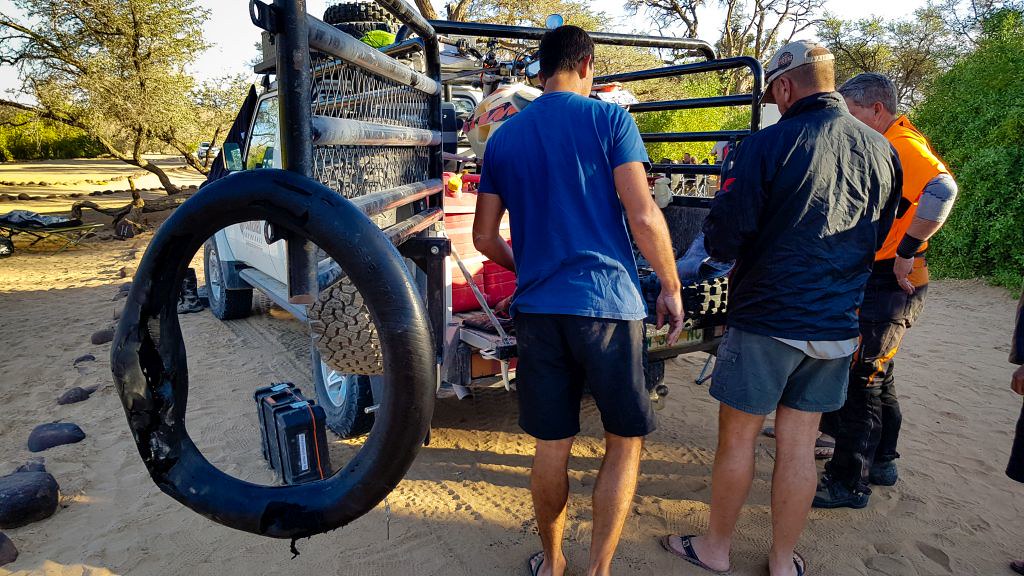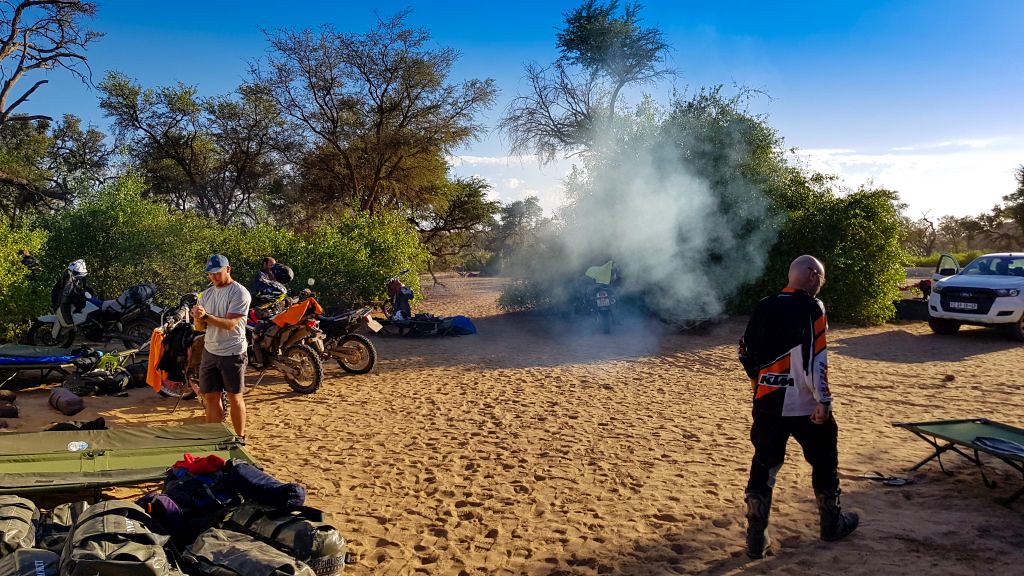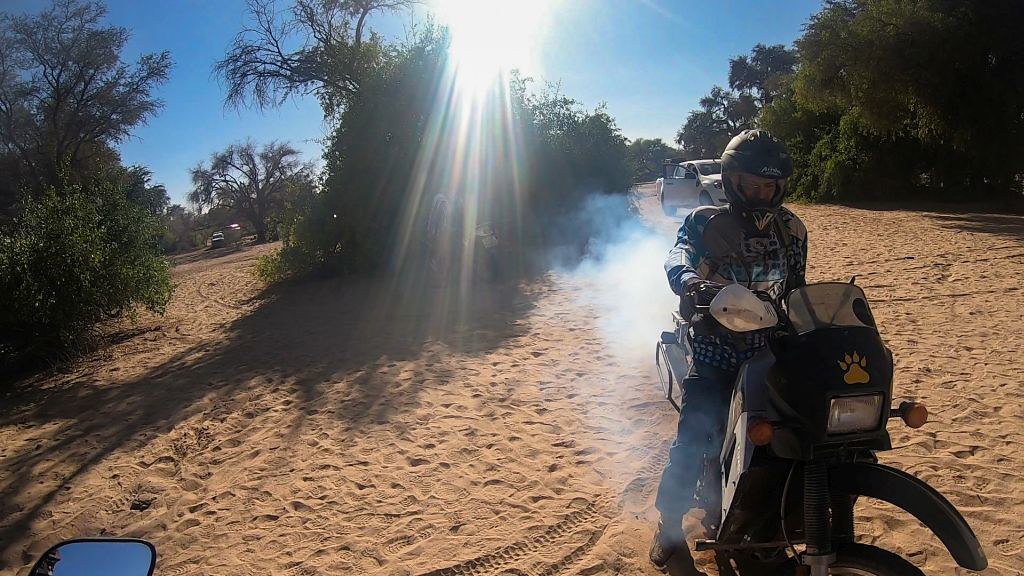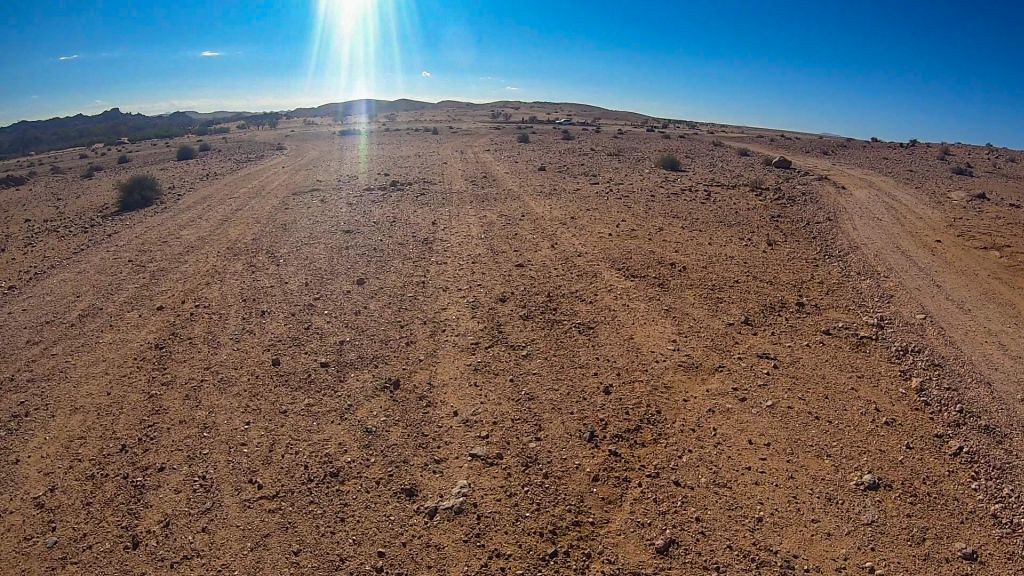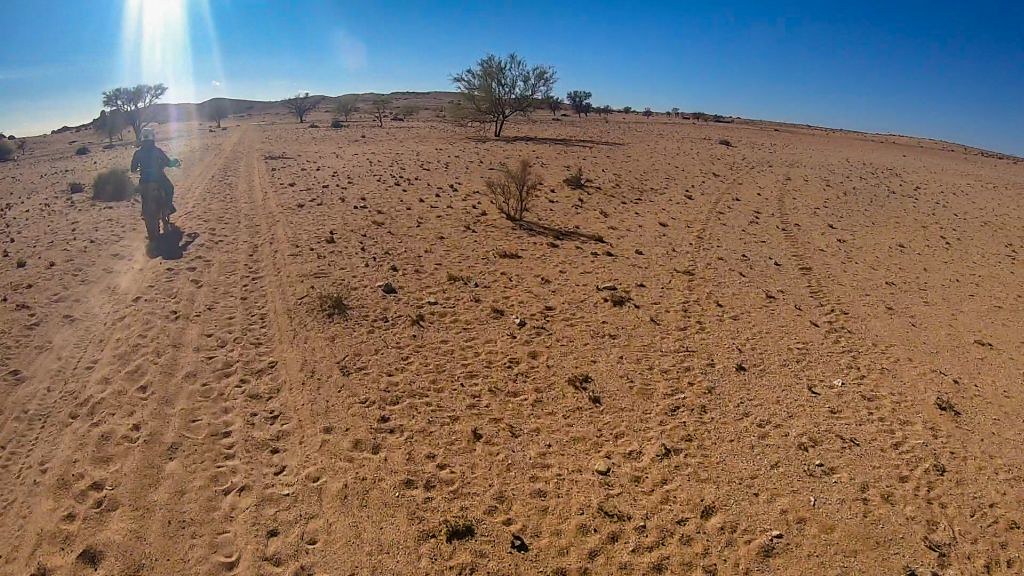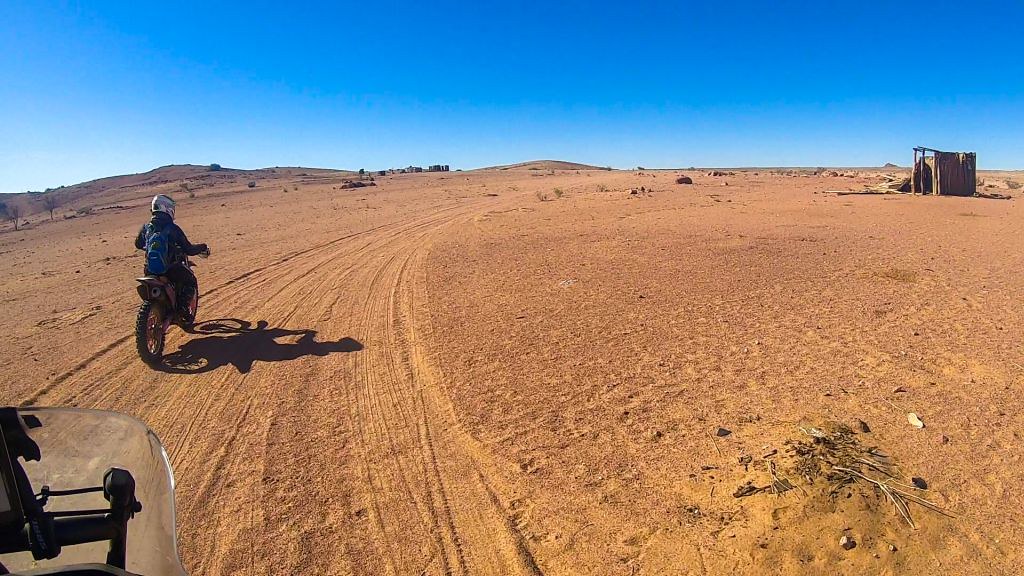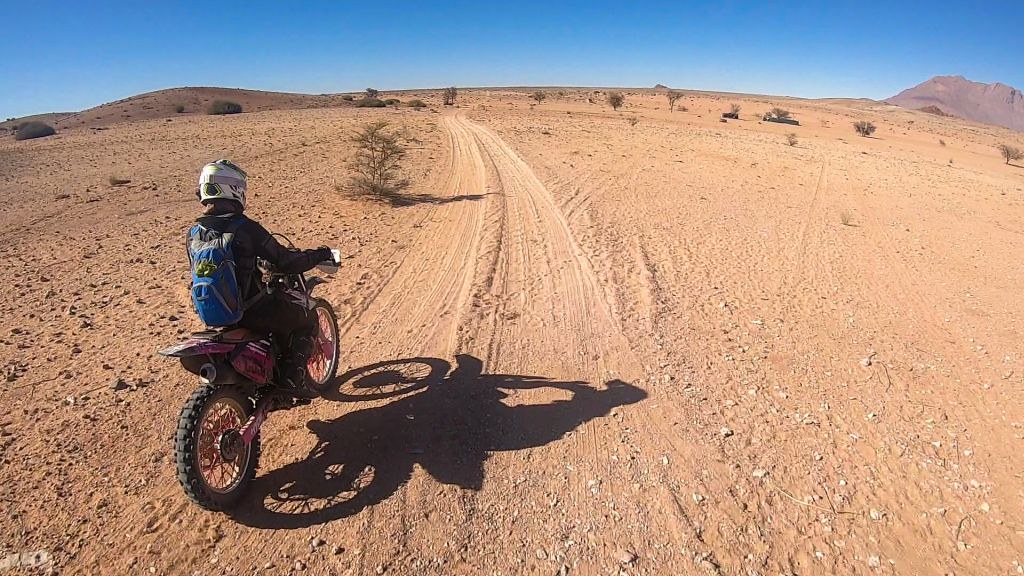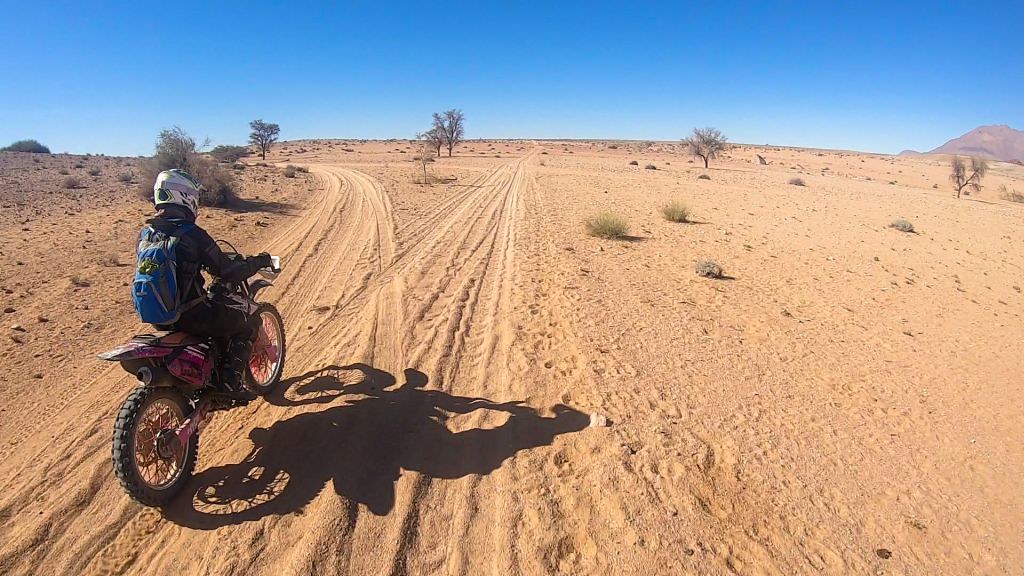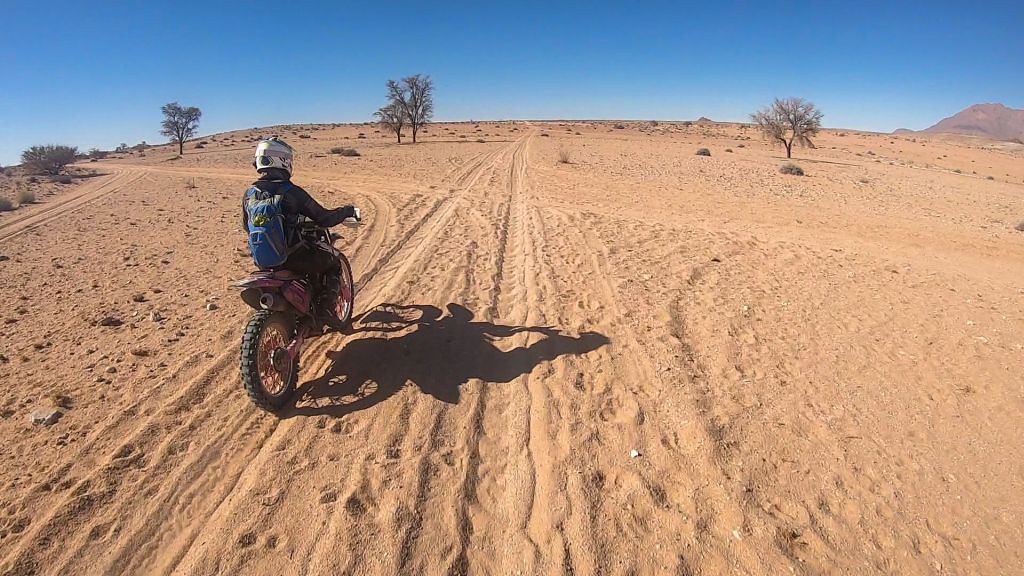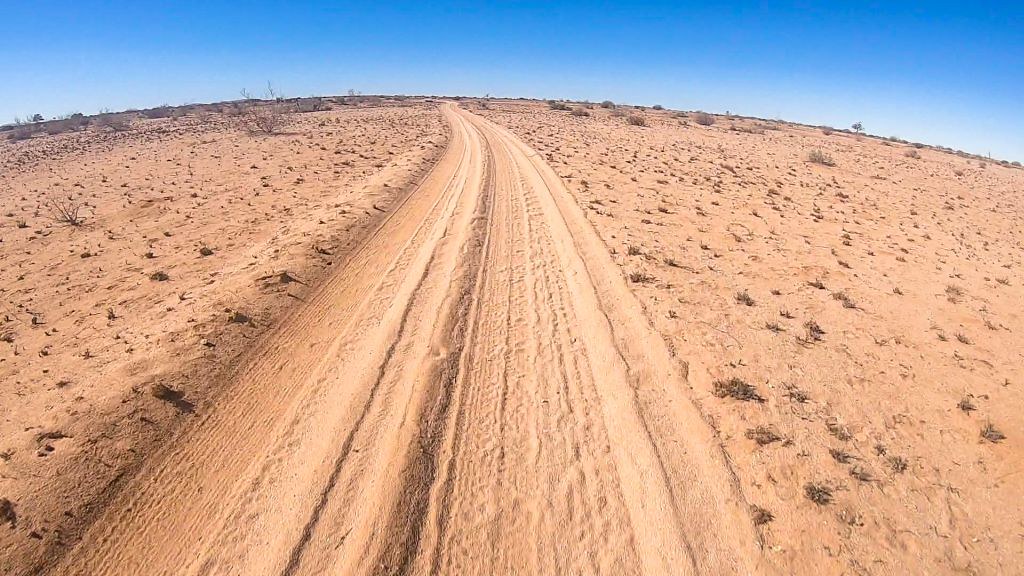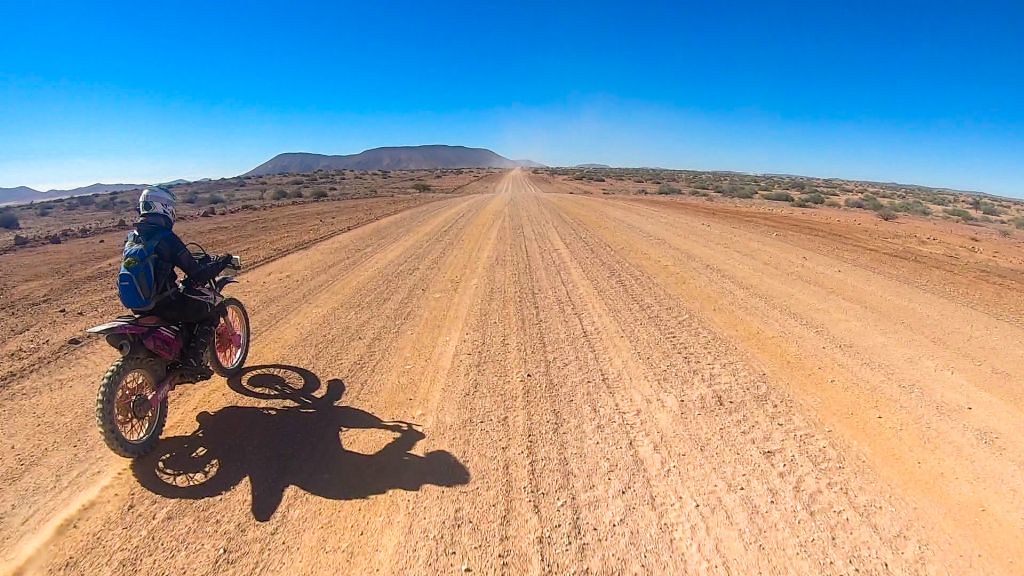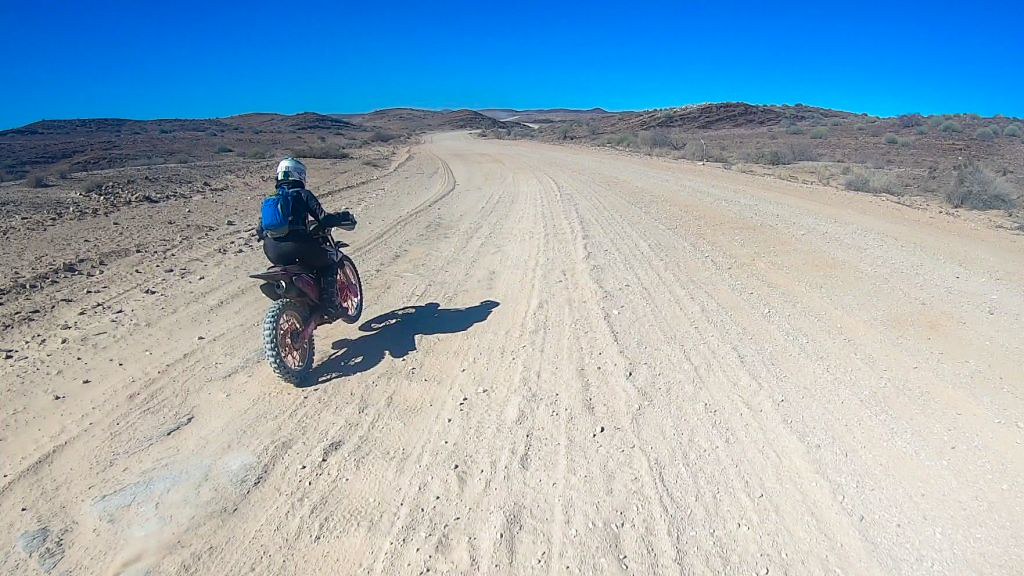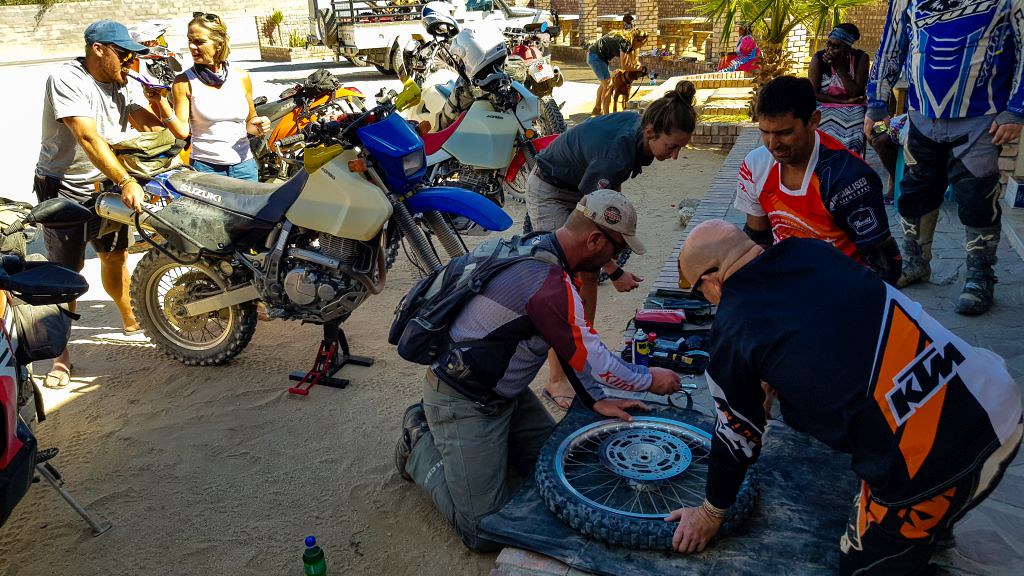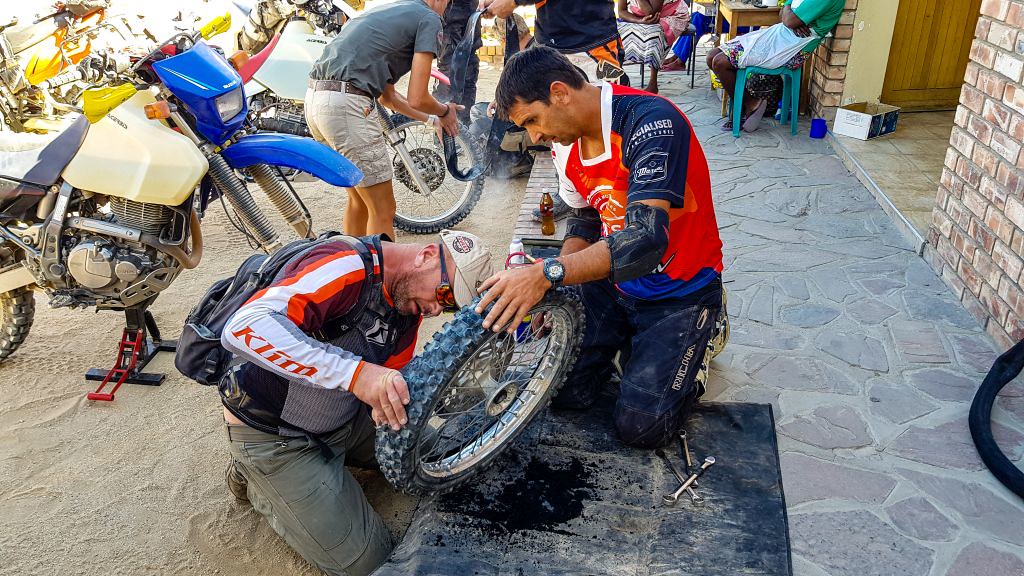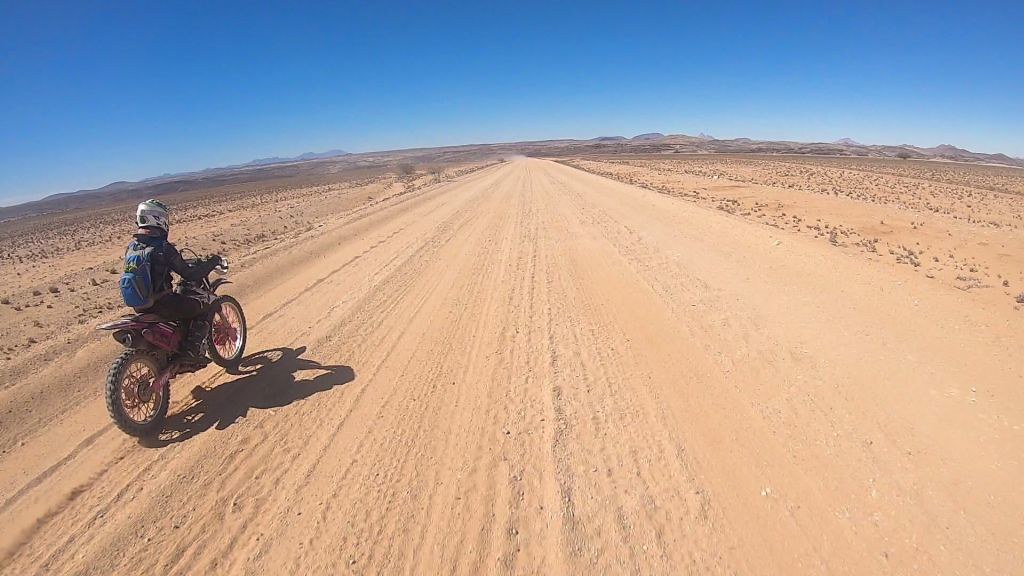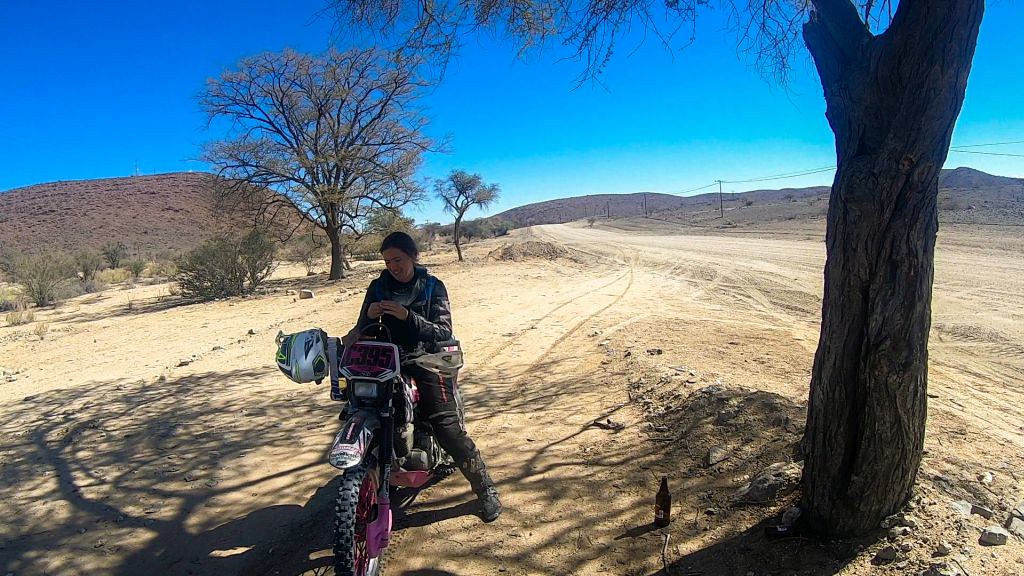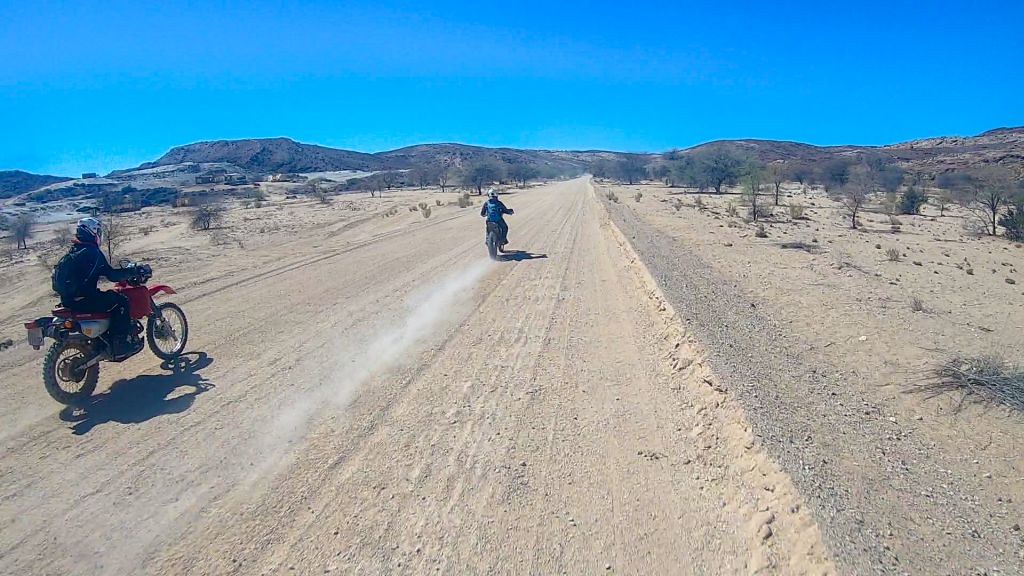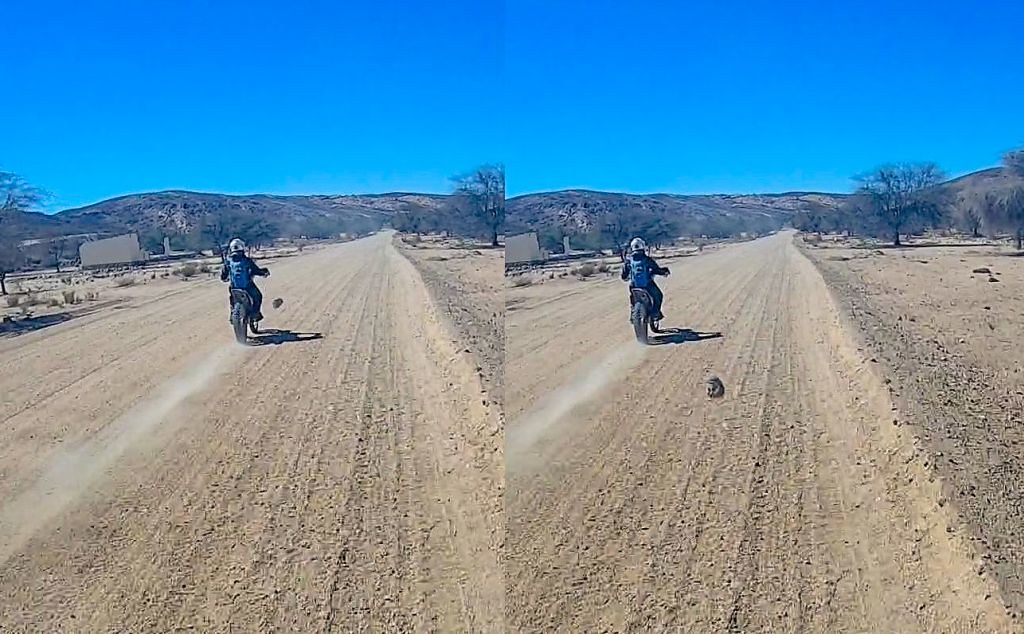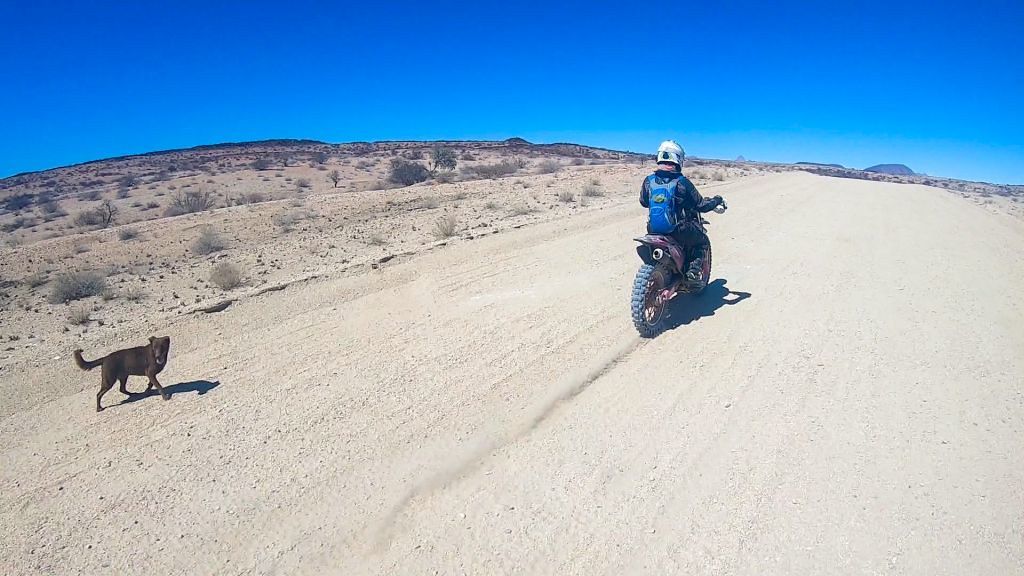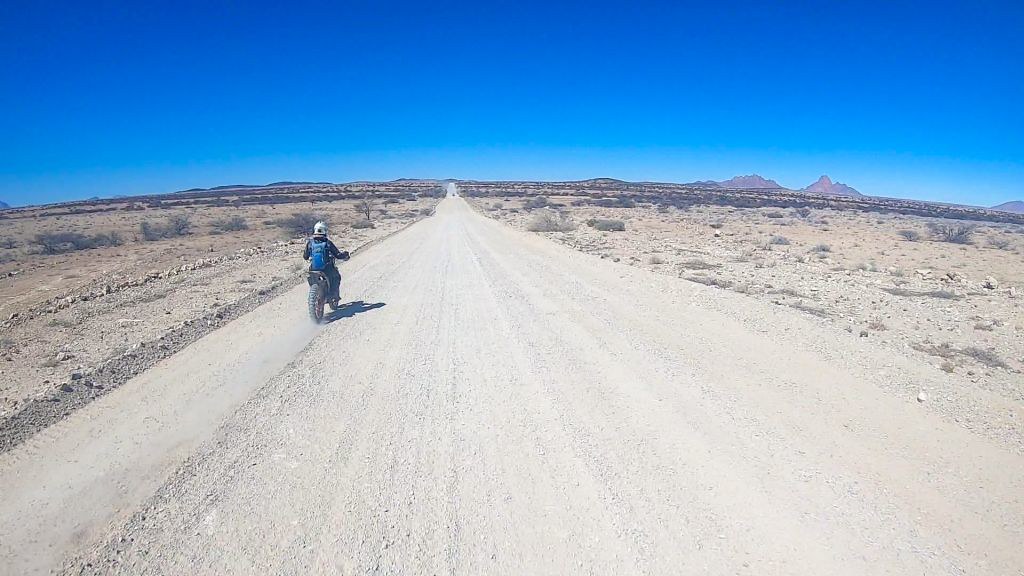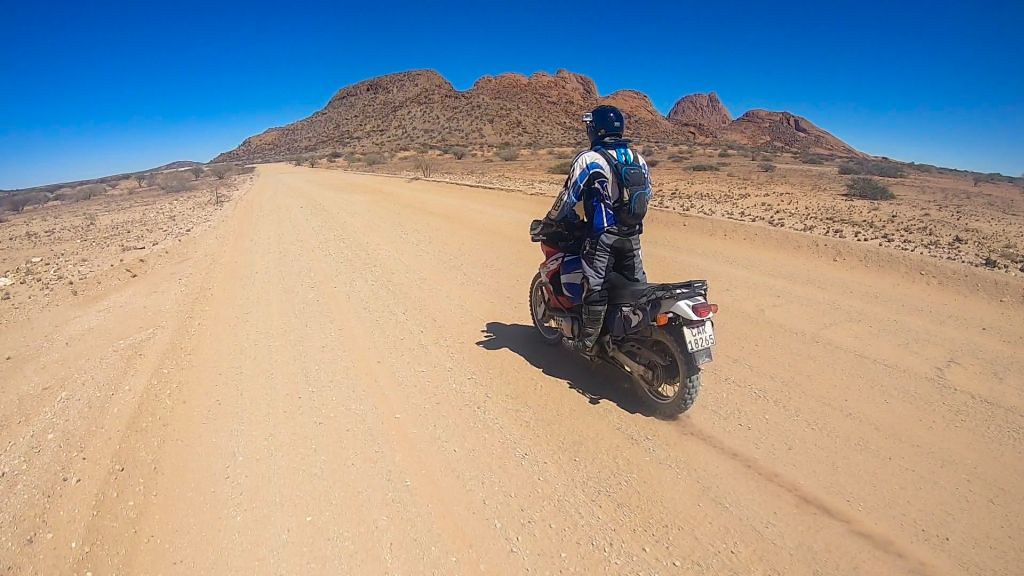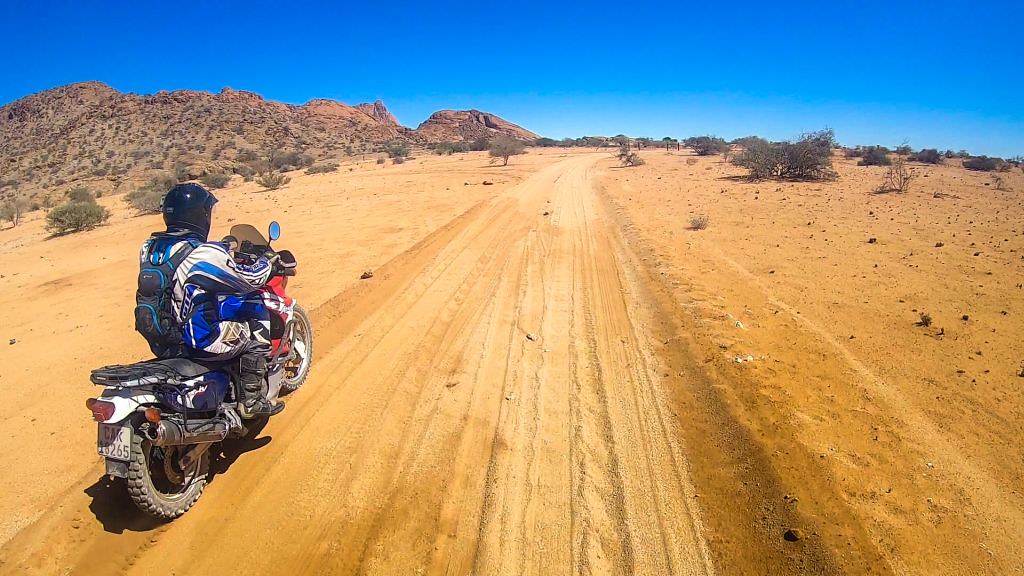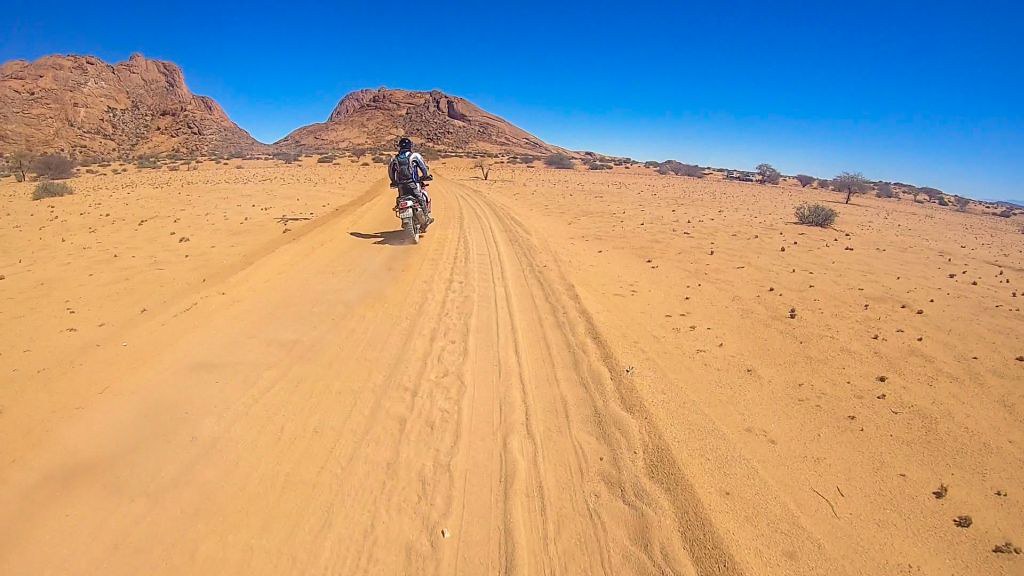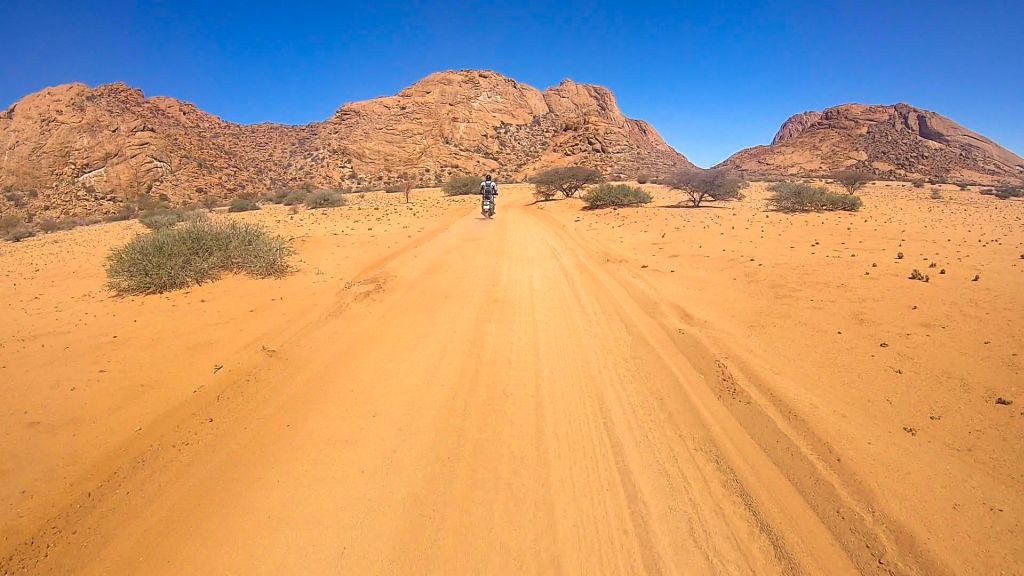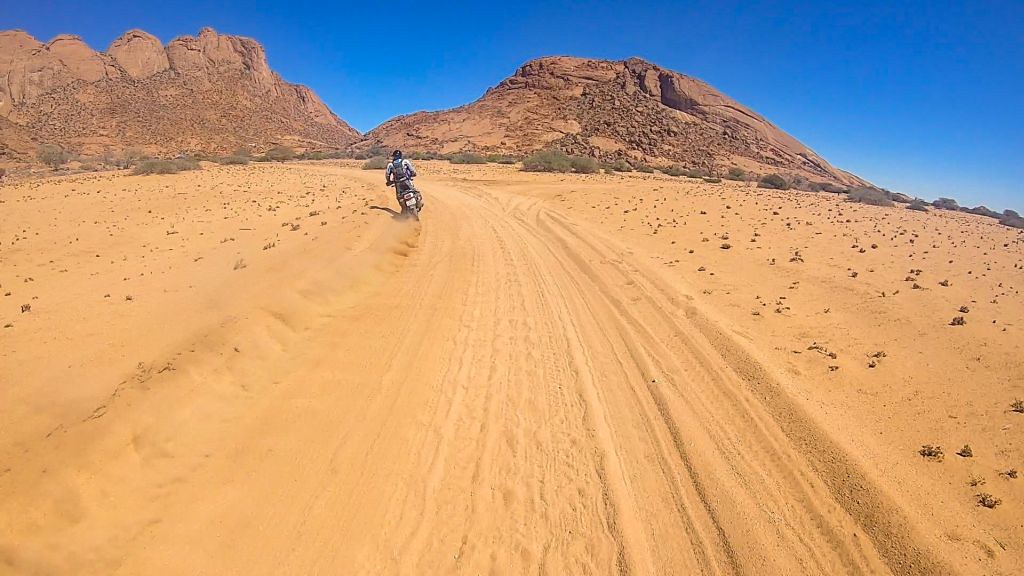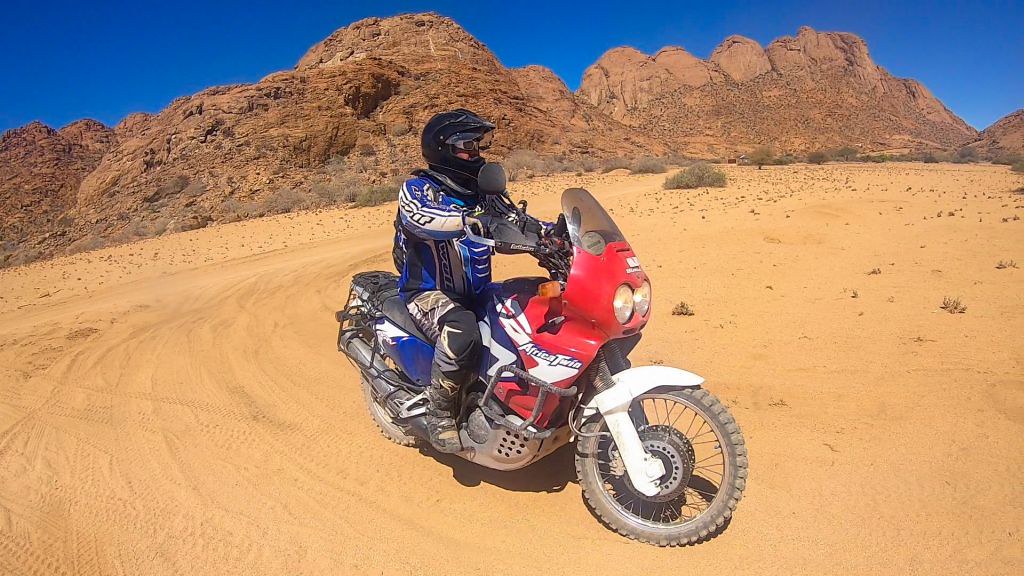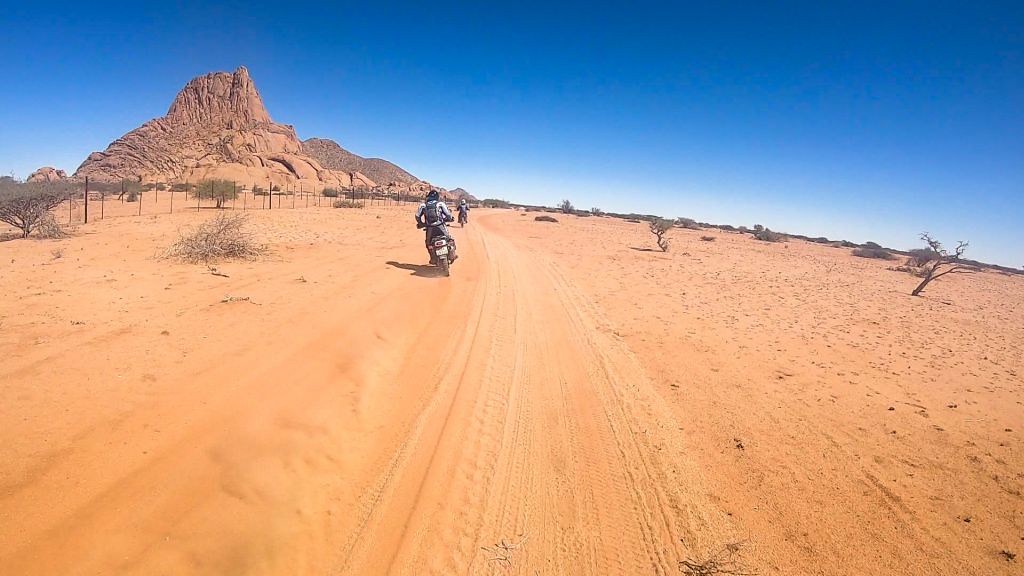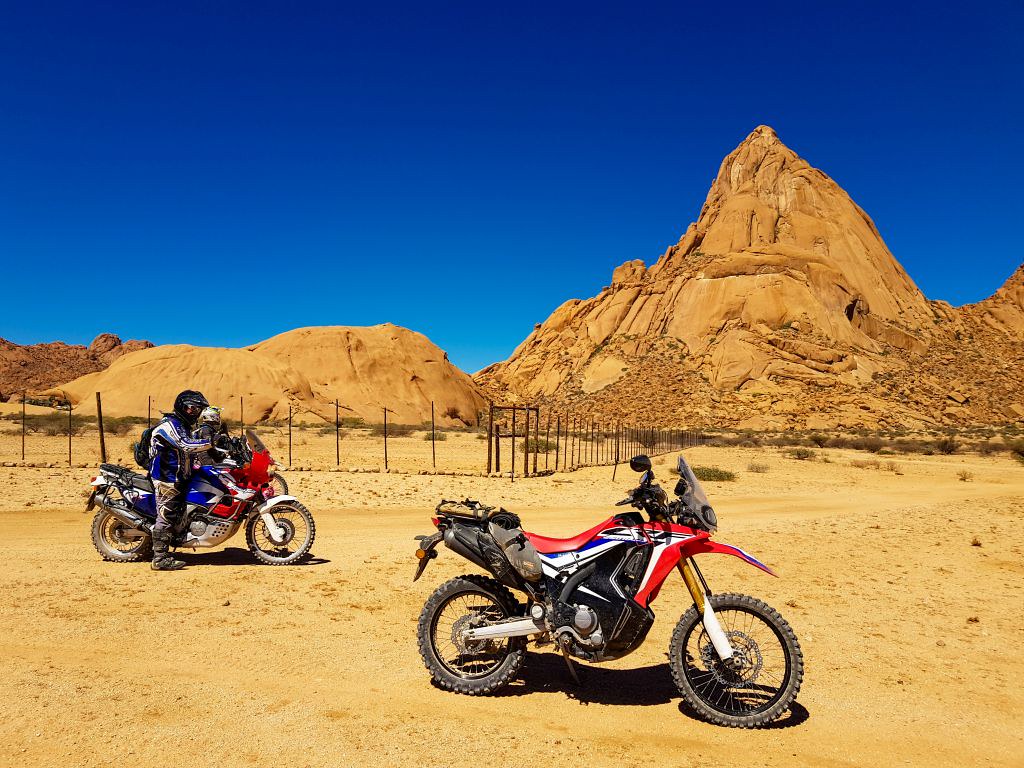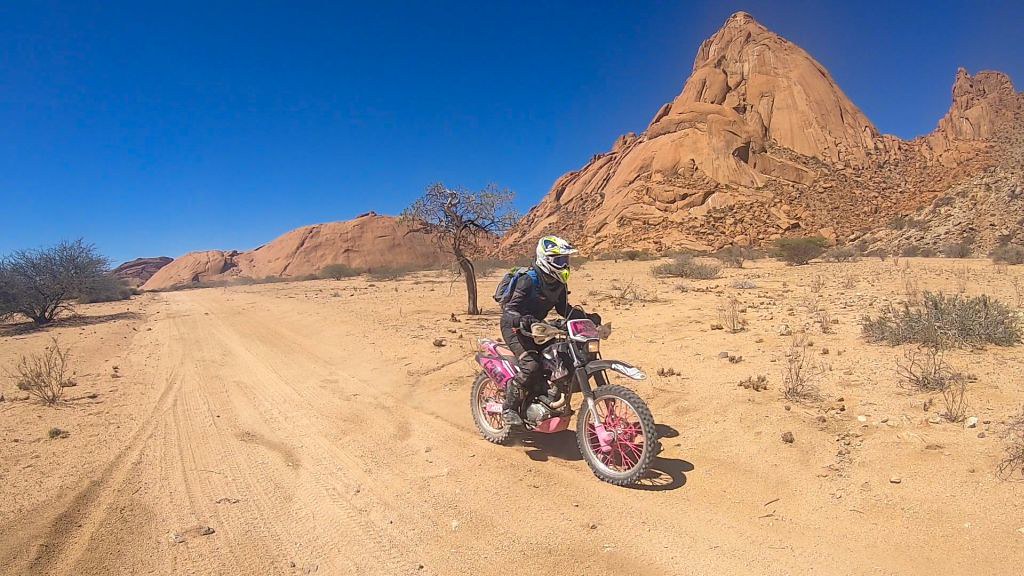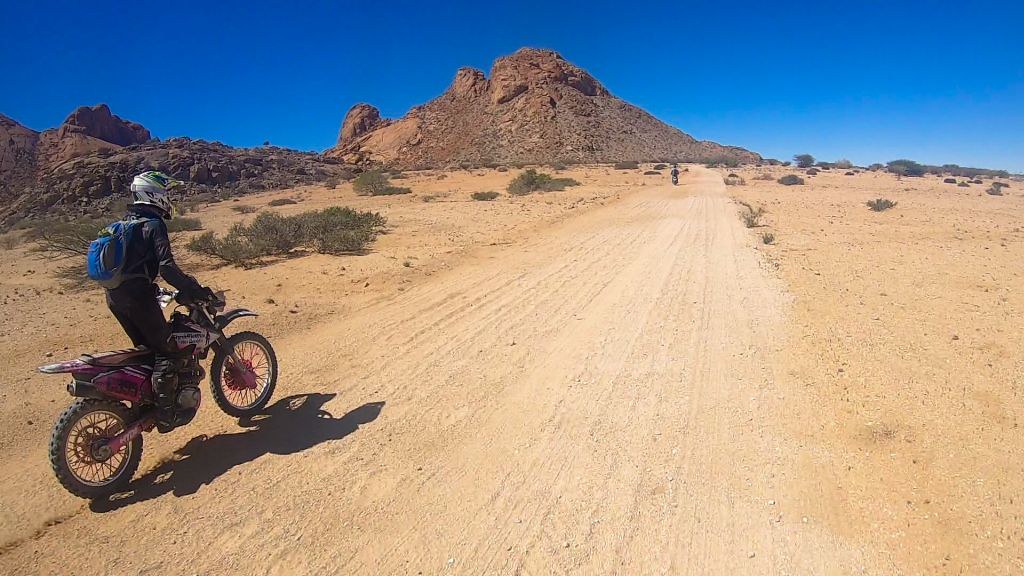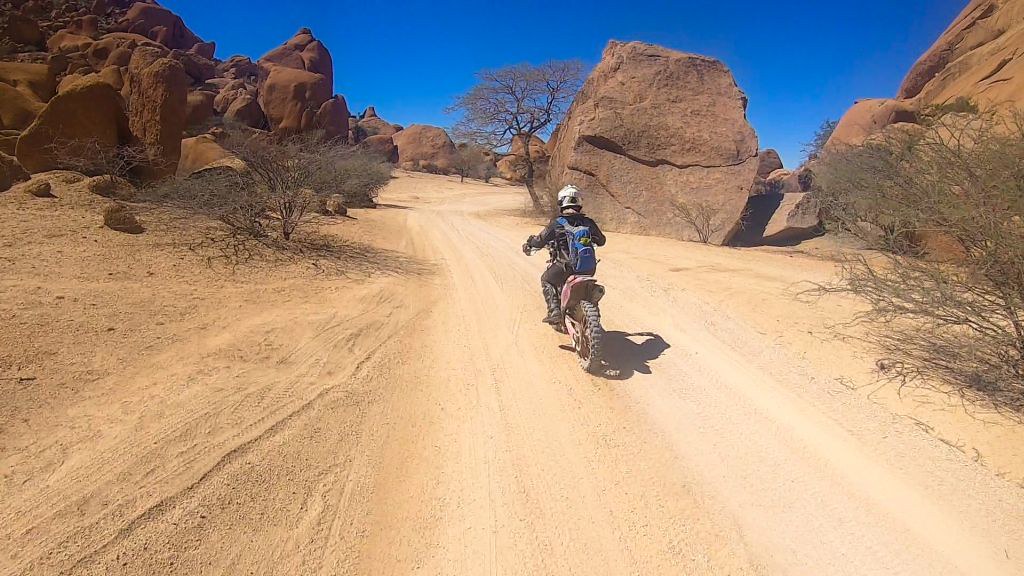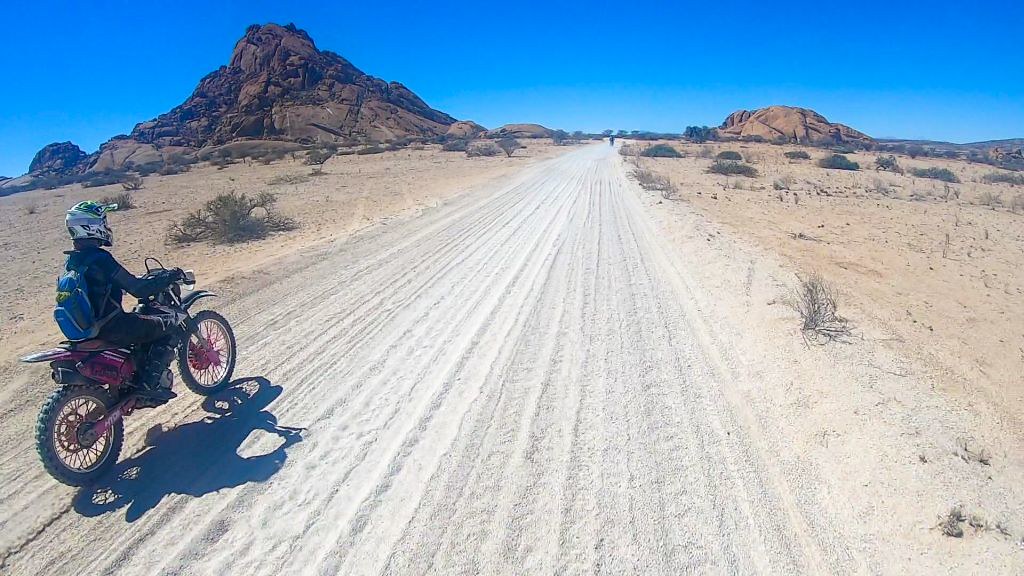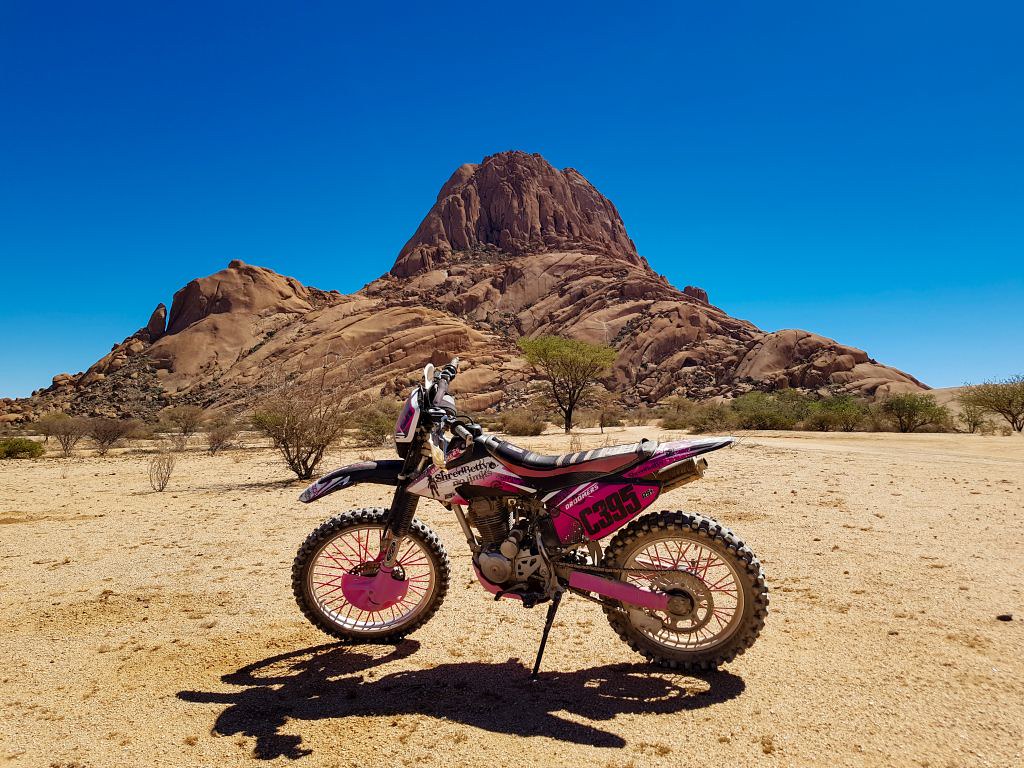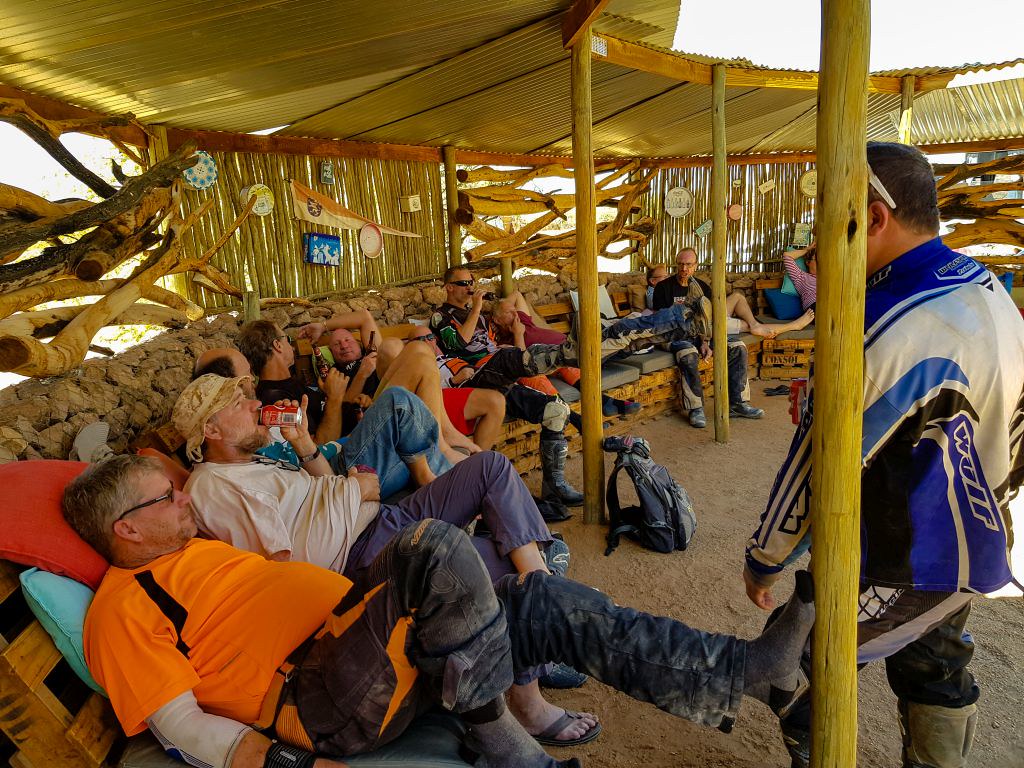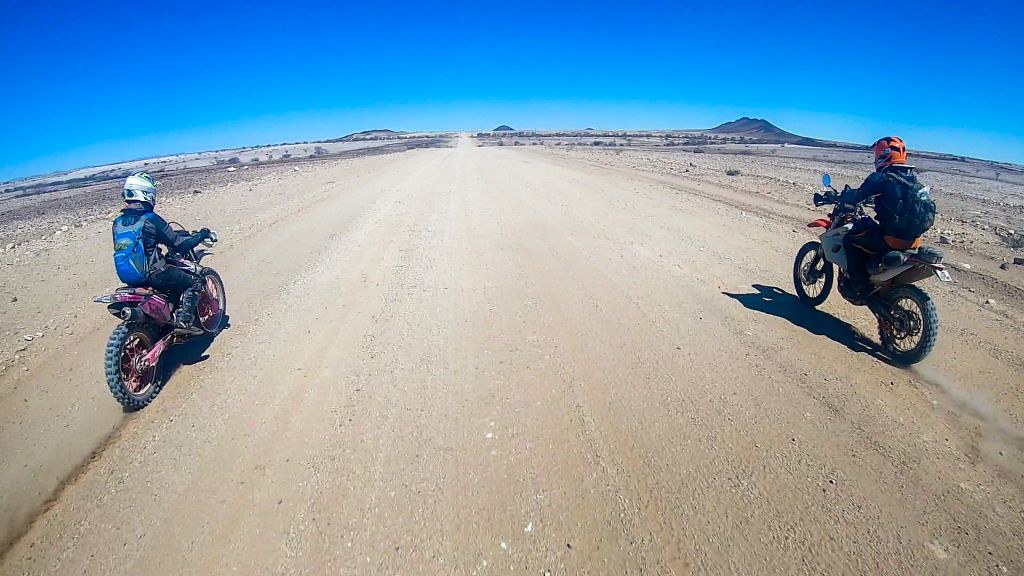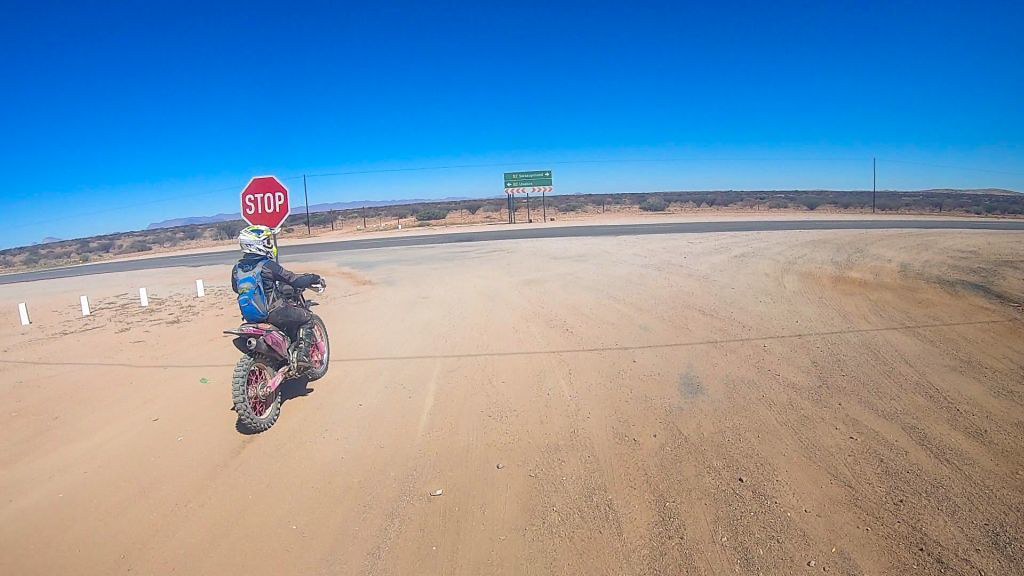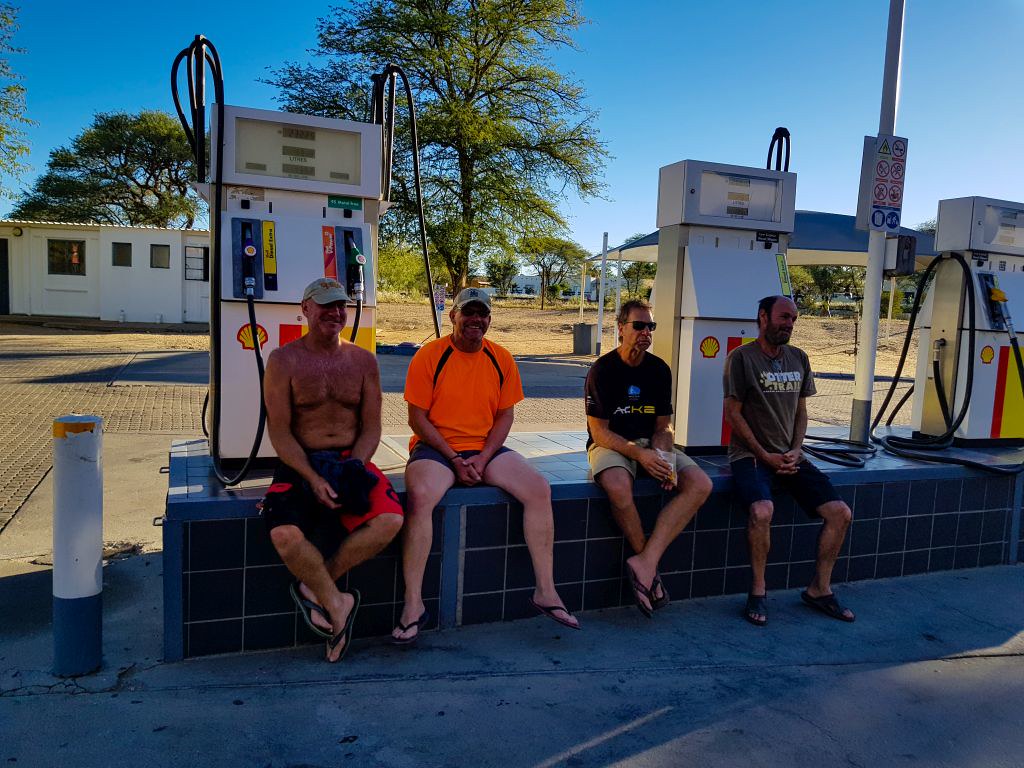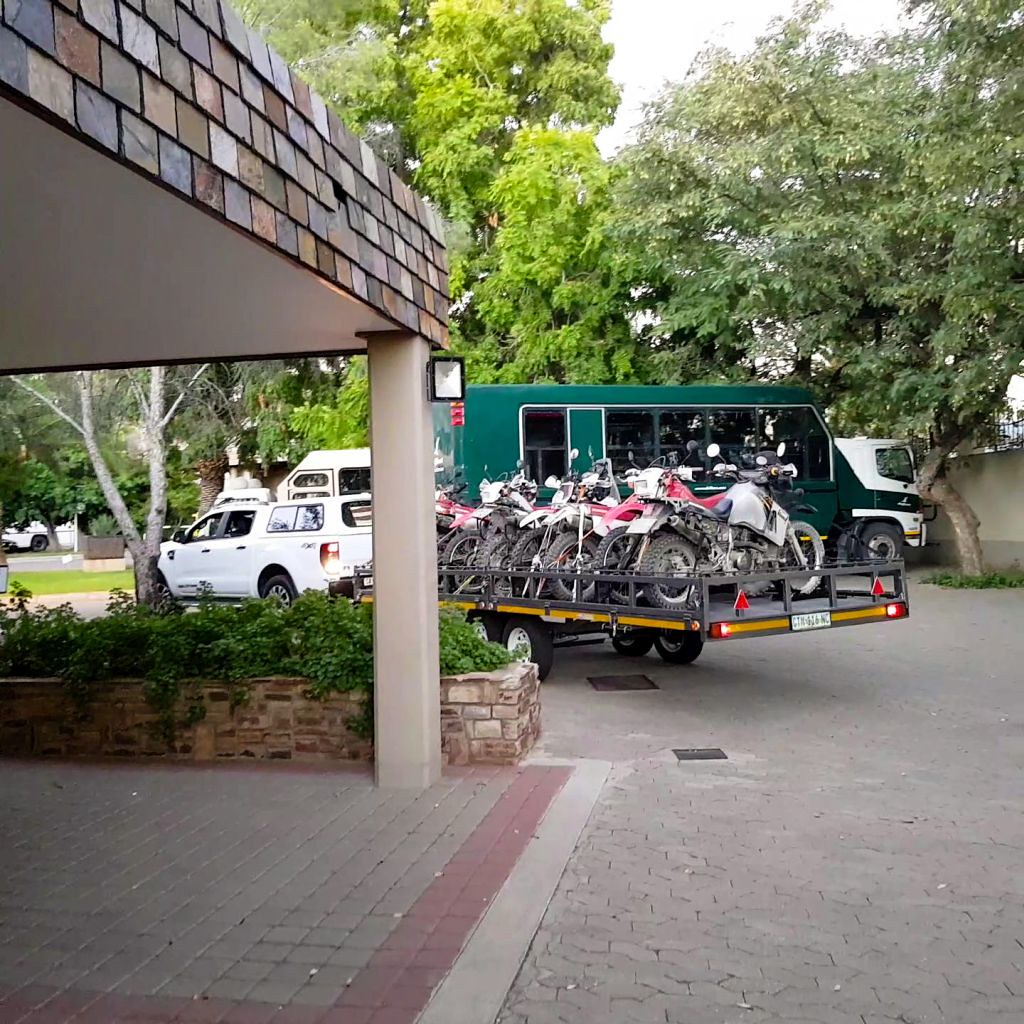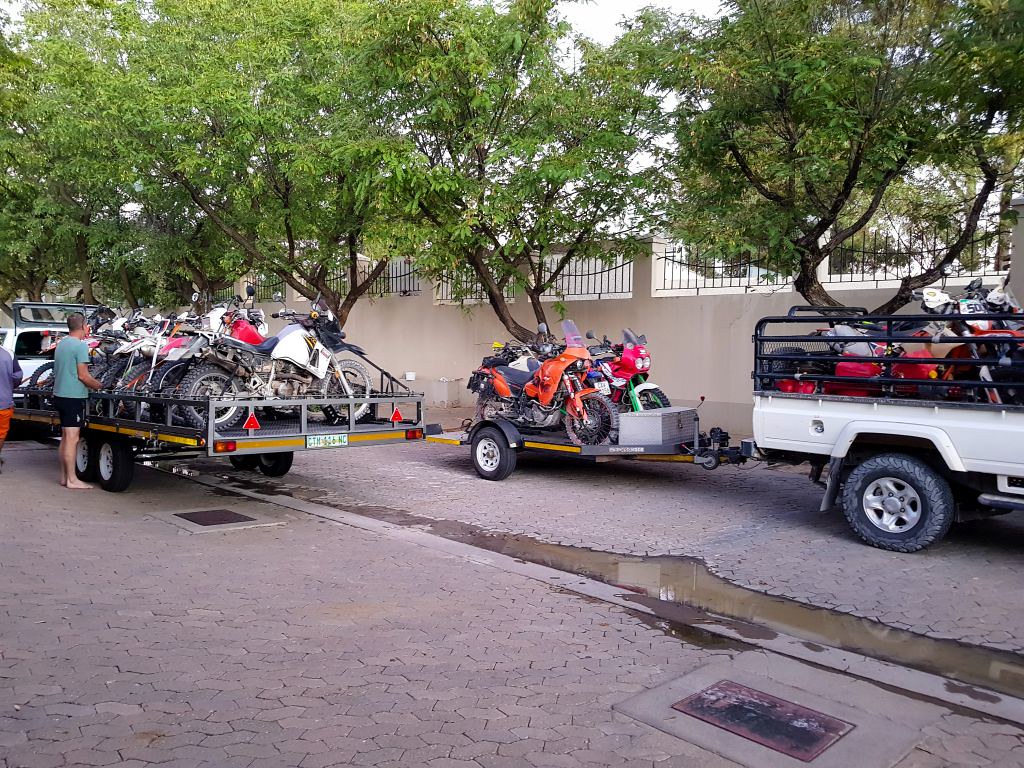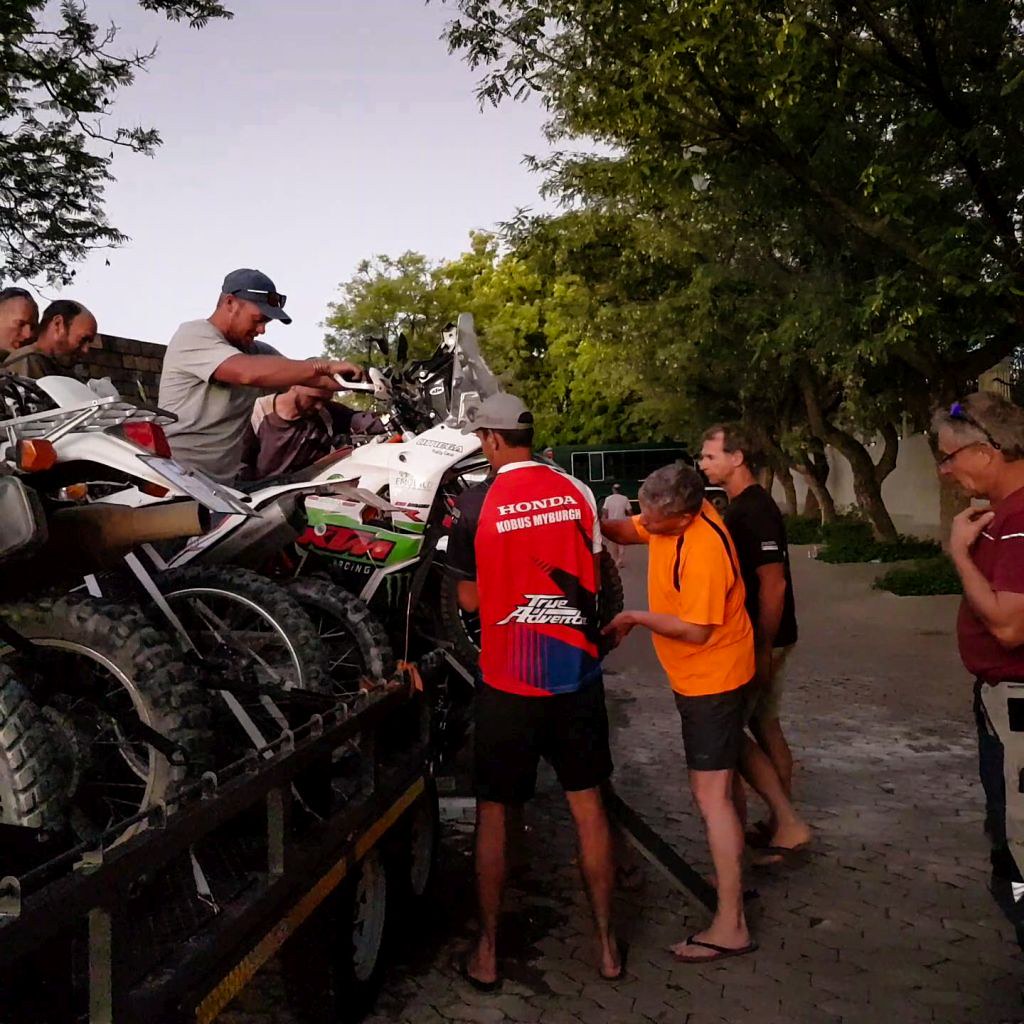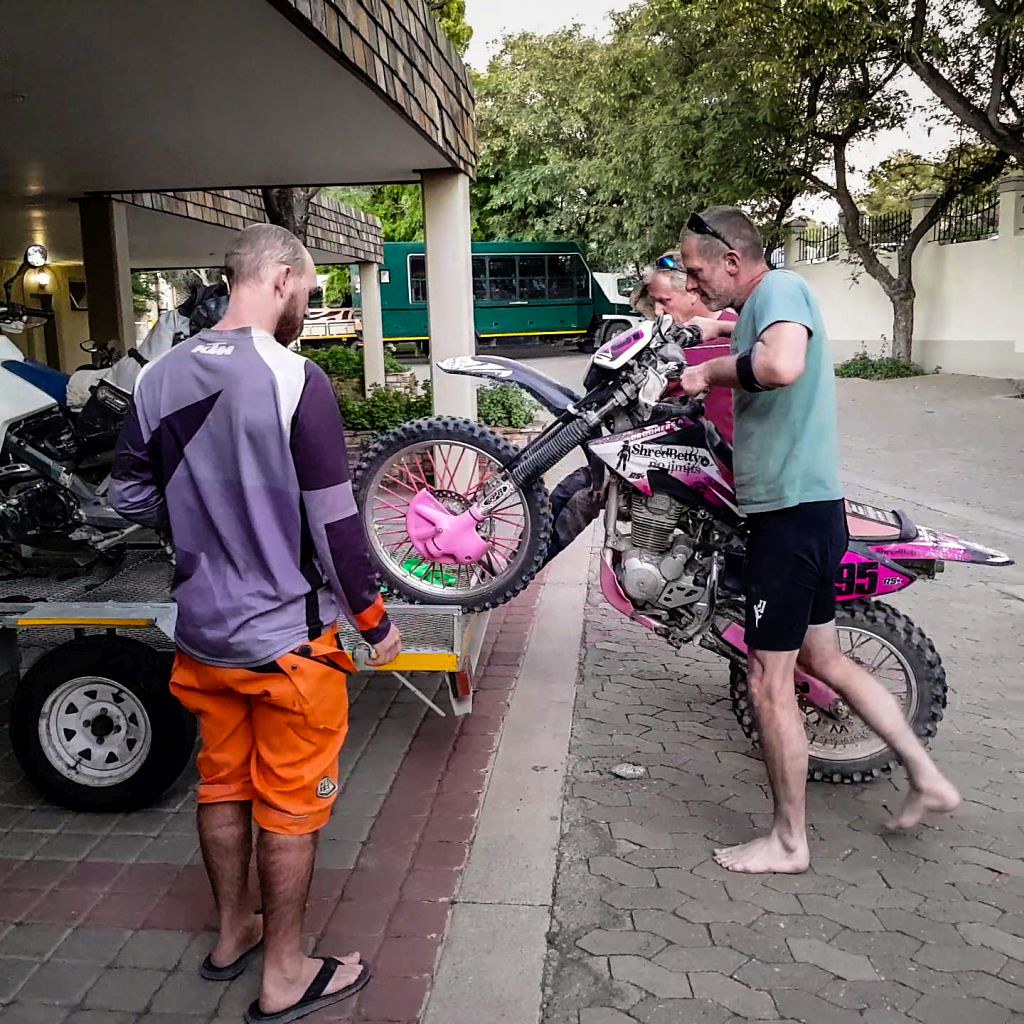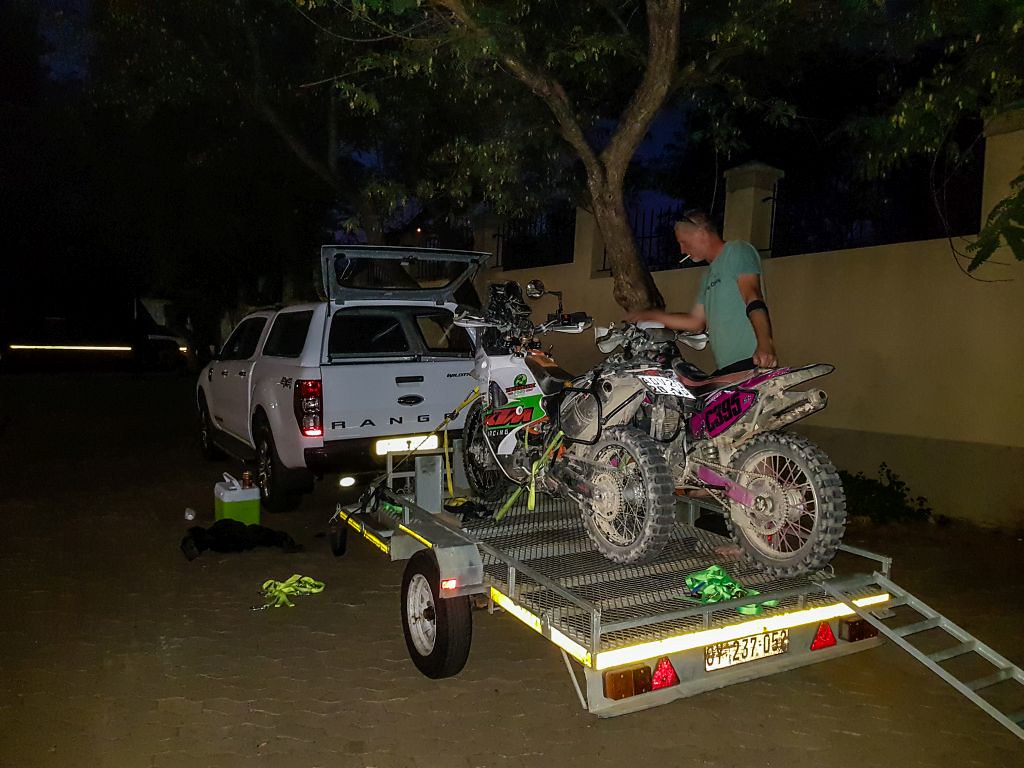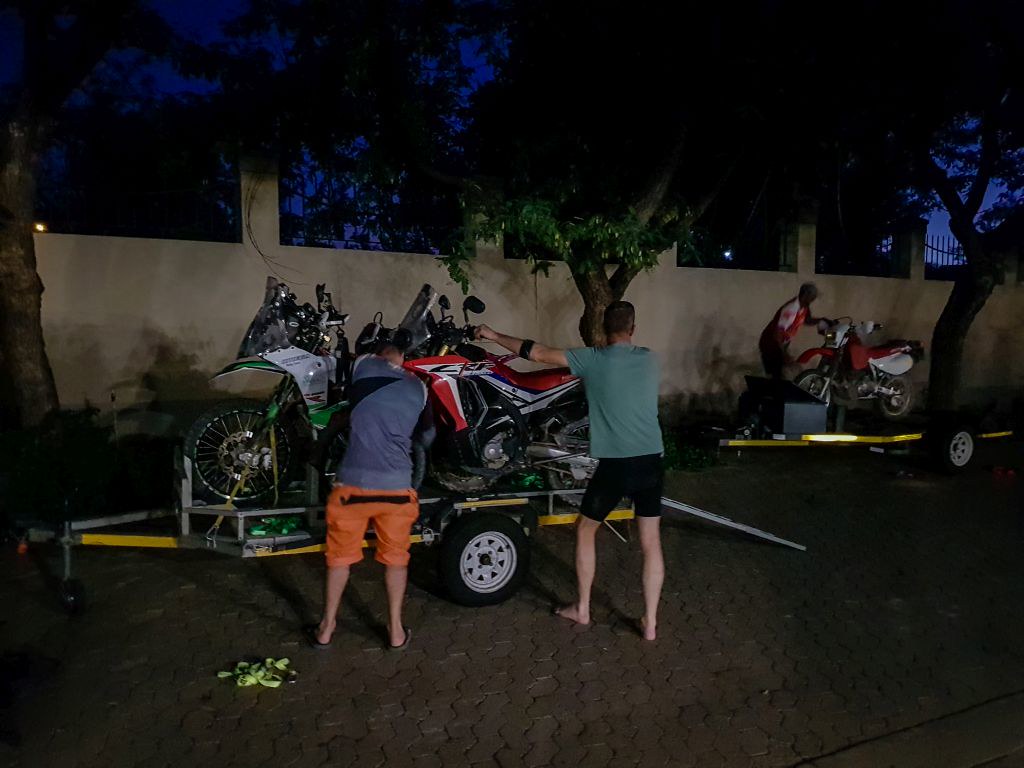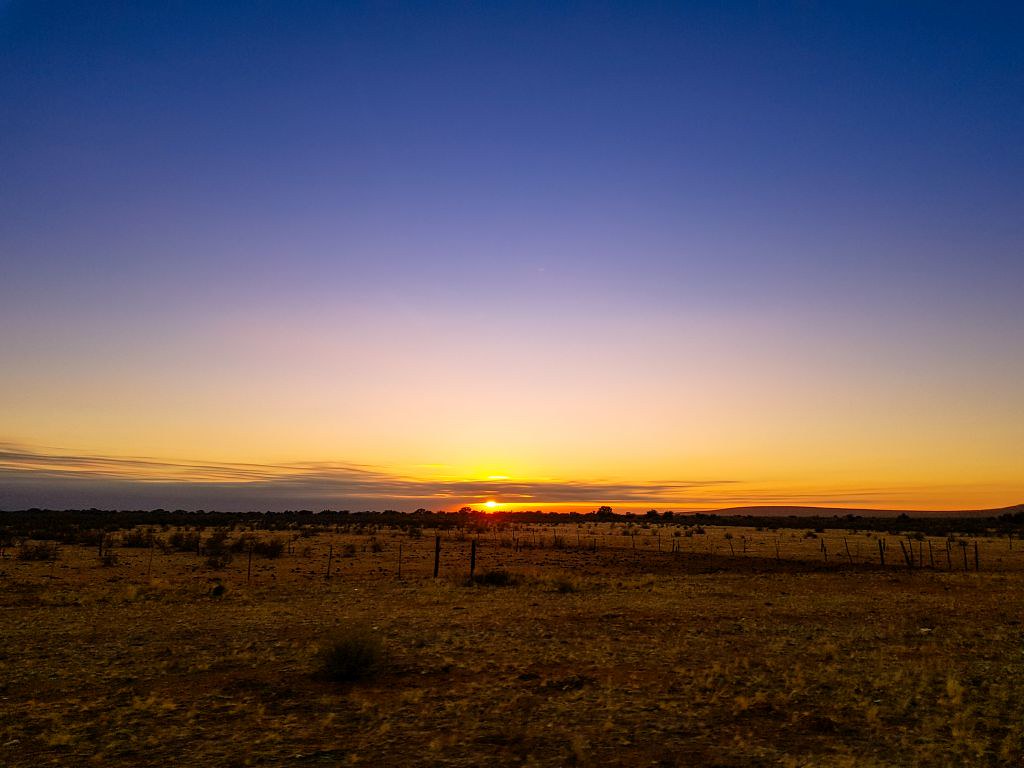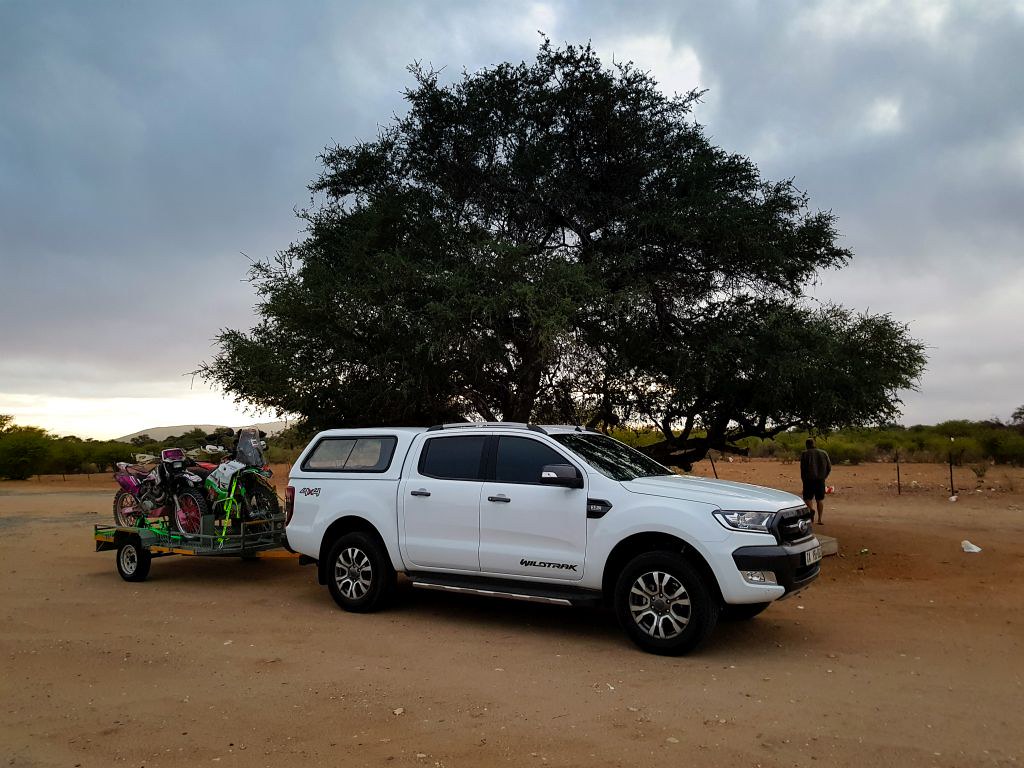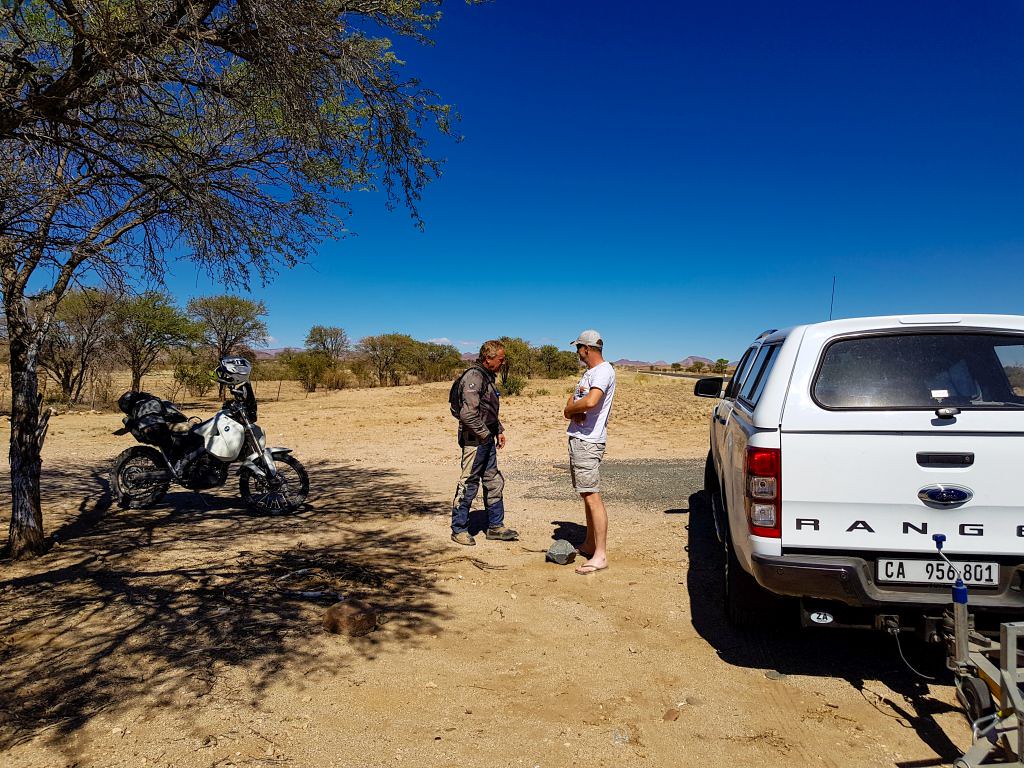Day 10 continued
Checking on the route:
It looked like a dead-end”
Spot the escape route:
An unplanned detour:
“The actual road is that way!”
“What did you say?”
Back on route again:
This canyon had its own version of hole-in-the-wall. It was the first spot of decent shade in a long while. Have shade = must stop / rest.
Hindsight is an exact science. We should have waited for the back-up to catch us here. The surroundings were far more conducive to pleasant patience.
Nevertheless, onward we went, into the desert vastness, following the pre-loaded track on Lance’s Garmin.
This is a landscape where bikes and people disappear.
We stopped to take in the space, as well as the crazy welwitschia. The latter does not refer to a healthy broom-riding personage from the middle ages, but the plant.
Pete and the plants:
The welwitschia really is an oddity. The only species in its genus, it consists of two slow-growing, stiff leaves, which split into strips, so that it appears to be a dry leaf jumble. I think its colloquial Afrikaans name is quite descriptive: tweeblaarkanniedood (two leaves cannot die). Apparently they may reach an age of over 2000 years.
A male welwitschia:
A female welwitschia (see the cones):
A mad witch, with muti:
We finally reach the major decision-point in the road: to the right, Messum Crater; to the left, a more direct route to White Lady Camp, skirting Brandberg. Things start unravelling here.
Maybe we could still tackle the longer option? But we need fuel and oil. Actually, we need this regardless of the option, so we wait for the back-up vehicle.
There is not a speck of shade. Our faithful metal steeds try their best to remedy this oversight. There is not much else to do, but wait. And wait. And wait…
Some people stop so see whether we are ok. A bunch of bikers lying on the hard ground in the middle of nowhere could mean one of two things: mechanical issues or mental issues. Assured of the latter, the kind Samaritans proceeded on their journey.
Concerned citizens:
1.5 hours pass. We come to the conclusion that either something has happened to the back-up crew and vehicle, or they somehow managed to get past us. We hope it’s the second option, but worry about the first.
Either way, the clock was ticking and we needed to get to camp before dark. It was on this day of the tour that a previous group had a close encounter with lions. This is not suburbia!
Oubones was really worried about his oil situation. He wanted to stay to wait for the back-up crew. Thankfully the rest of the group overruled him. Whatever happens now, we stick together.
Left to right: Oubones, Gordon, Pete and Lance.
I was on my last batch of fuel (the 5 litres from the bladder), with a bike that liked to pee fuel when stationary, thanks to some sort of mini-blockage causing an overflowing carb float bowl. The tap-and-drain approach only worked temporarily and I abandoned it in favour of saving fuel. I just had to remember to close my fuel tap whenever we were stationary. Meanwhile, the blue cloud from Oubones’s bike hung like a black cloud over our mechanical sympathy conscience. How long before all the oil is gone?
Given this, what route do we take? Lance, on his Garmin, had the route track Hardy had given us. Do we look for a shorter route, off the marked track? Can we make it, if we take the longer, marked route?
In the end, we decided to stay on the marked track, even if it meant running out of fuel or oil on our way to camp. The shorter options were not known to us. They were minor roads and, for all we knew, could be sandy, which will end up chowing even more fuel / oil than a longer, gravel highway route.
There was also the possibility that the crew will come looking for us. They will never find us in this huge landscape if we go for the route less travelled. We were already on the route less travelled anyway; better not make it the route hardly travelled at all.
We therefore tackled the longer, gravel highway option.
Despite the good road, we were not zipping to camp at pronto speed. Nope. In order to keep the KLR’s revs down and stretch the last oil as far as it could possibly go, we stuck between 50 km/h and 60 km/h. This would also hopefully help with my bike’s fuel consumption.
It’s a long crawl to camp:
The road curves? Ya, right.
Eventually the track we were meant to follow branched off the gravel highway and headed in the direction of Brandberg.
We spent a lot of time at this split mulling over the tracks. How many bikes came past here? Do you see the tracks of the back-up vehicle? No questions were answered definitively. It’s amazing how you start second-guessing yourself in these situations.
At least our little group was still together and all the bikes were still working.
We headed down the side-road, hoping that the terrain did not get too gnarly, for the sake of petroleum consumption.
Gordon spewing earth; Oubones spewing cloud:
Another reason not to get caught riding in the dark: aardvark holes. Loads of them!
Super-sized aardvark hole:
A rare photo of Oubones in motion:
It didn’t last long though. He soon waved Lance ahead, so as to avoid culpable homicide charges of toxic fumigation.
Beautiful Brandberg:
We rode through a riverbed in a semi-bushy area. Despite what the photo below may have you believe, there were plenty of places for large felines to hide. Lance’s odd questions did not help:
“Do you want to go find the lions?”
“Did you practice your lion turn?”
And his version of comfort: “The lions only go wherever the food is. Unless the food is hanging around here...”
Interesting black stone landscape:
At this point, my bike sputtered and died again. I flipped the fuel switch a last time. This was the final reserve. I had 1.5 litres left.
Oubones, meanwhile, had worries of his own. As long as there was a blue cloud, there was life still to be had. If that cloud disappeared it meant trouble.
Oubones was stationary here, enjoying the scenery, so no blue cloud diagnostic data available:
Funky two-tone landscape:
Long shadows, signalling a dying day:
6pm and heading into Brandberg’s shadow:
We knew Hardy must be on the uncomfortable side of the worry spectrum. It was only after circling Brandberg that we picked up some signal for the first time.
Pete phoned Hardy to tell him (a) we were alive and, unbelievably, (b) we were still in motion.
There was relief on both sides. The back-up vehicle and crew were indeed at camp, which meant that they had somehow passed us, rather than hit any mechanical or physical issues. The crew were amazed that we had not yet run out of fuel. They had been extremely worried, but where do you start searching for a bunch of lost bikers in Namibia?
We were on the last leg of our journey. Even Lance was now on reserve. Despite the fact that he was riding the bike with the smallest tank out of the group (a mere 10 litres), I told him to save his worry for Oubones and me. Once the Rally hits reserve, it still has a good 60km left, unless you wring its neck at highway speeds, then you only have 50km.
We had another worry to contend with: the landscape started shifting towards one of sand. This is the last thing you want to see when you are trying to keep the revs down.
The sun was low, the sand was increasing, and there were a couple of confusing route options.
Recalculating:
The result of riding too close to earth-moving equipment:
Rerouting:
How far can an old carburetted bike go on 1.5 litres? I was counting the kilometres since I hit reserve. 30…31…32…33…
Gordon in a sand landscape:
We were now very close to camp. Yet there was one last sand obstacle.
Oubones and I were not impressed. Every twist of the throttle was a gamble.
Oubones’s bike had reached the point of not sounding happy. The blue smoke was fading:
Pete and his faithful DR:
Lance: “I’m running out of fuel! I’m losing power.”
Me: “Your fuel is fine. The Rally doesn’t have any power!”
Relief approached euphoric levels when we finally rode into White Lady Camp at 6:30pm. The KLR and CRF230F were both on fumes: oil and petrol respectively.
Our strategy of snail-pace riding was probably the saving grace. The KLR had gone beyond the call of duty to get Oubones to the end of the day. My little pink Honda had managed an astronomical 261km on 12.2 litres. That’s an average 21 km/lit!
As mentioned previously, the crew had not even known where to start looking for us, since a lost group on a previous tour had travelled via Timbuktu. Hardy said he would have felt a lot better if he had known that Lance, before a 180-degree career shift to IT developer, used to work as a navigation cadet on container ships!
Safely in camp, we compared route notes. As suspected, the bugger-up happened at the Messum Crater route split. We followed the track up to the split like religious acolytes (and why not?), but if you were familiar with the landscape, you could take one of the two short-cut options and miss our dear sunbathing spot entirely.
In the picture below, our track is in red; first heading south and then doing a sharp hairpin back on itself. The blue track right at the bottom was the Messum Crater option; followed by Team Fast. The yellow tracks are the two short-cut options; one of which was followed by the crew.
We caught up on the day’s news from the other groups. Within Team Fast, both KTMs suffered collapsed mousses. Perhaps they should have tried our 50 km/h approach!
We finished a very long day with a fortifying supper of kebabs, salad and roosterbroodjies.
Sadly, it was the last night of sleeping beneath the stars. Tomorrow night we will be in Windhoek.



















![Professional First Aid Kit, Trauma First Aid Kit with Labelled Compartments Molle System for Car, Hiking, Backpacking, Camping, Traveling, and Cycling[New Upgrade]](https://m.media-amazon.com/images/I/41uCkwNilAL._SL500_.jpg)























